- Experience Guide (sv, dk, no, eng)
- Corporate (in Swedish)
- Press & Media
- Travel Trade
- Destinations
- Northern Sweden
Swedish Lapland
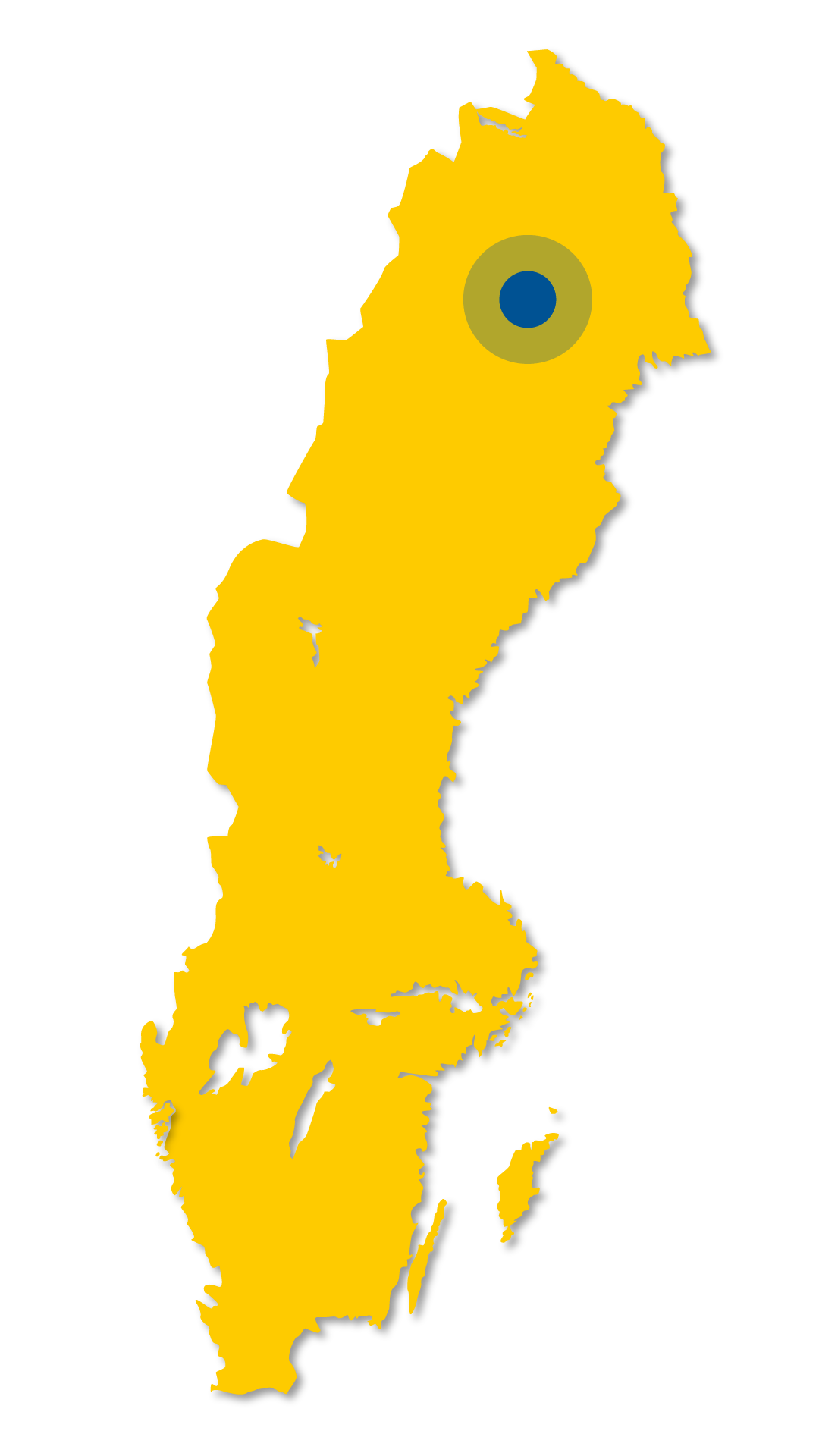

Swedish Lapland – a culture-rich natural wonderland
A visit to Swedish Lapland will open up a unique world, combining vast expanses of nature, authentic Sámi culture and culinary specialities. Depending on which season you come, you'll have completely different experiences – but all of them will be memorable.
- In some parts of Swedish Lapland, there are more huskies than people.
- There are some 300 words in Sámi dialects to describe different types of snow.
- Swedish Lapland is the only Swedish region that borders two other countries – Norway and Finland.
- Swedish Lapland boasts three UNESCO World Heritage Sites : the cultural and natural landscape of Laponia, Gammelstad Church Town in Luleå and Struve Geodetic Arc.
Swedish Lapland is a region unlike any other. The land of the Midnight Sun and the Northern Lights is home to mountains, forests, marshes, wild rivers and archipelagos. Stretching from Skellefteå in the province of Västerbotten to the northernmost tip of Sweden, this arctic territory covers a quarter of the country. The sheer size and variety of terrain give the outdoor enthusiast endless options, from hiking and fishing to dog sledding and skiing.
There are also plenty of cultural experiences to be had and world-class accommodations that harness its natural surroundings – the most famous examples being Icehotel , Treehotel and Arctic Bath .
The northernmost parts of Sweden, Norway, Finland and Russia are also known as Sápmi, the land of the indigenous population. The Sámi people have lived here for thousands of years. The magnificent nature of Swedish Lapland may seem untouched, but for generations, it’s been lovingly used by Sámis, who divide the year into eight seasons . As a mark of respect for nature, they’ve named every valley and mountain peak in the area.
Reindeer, Swedish Lapland
The indigenous Sámi people have been herding reindeer in Swedish Lapland for thousands of years.
Photo : Tobias Hägg/Airpixels/Swedish Lapland
Cabins at Geunja in Vindelfjällen
Photo : Swedish Lapland
Sámi folk costume
Photo : Lola Akinmade Åkerström/imagebank.sweden.se
Reindeer meat
Photo : Pernilla Ahlsén/imagebank.sweden.se
Sámi bracelet
Experience genuine Sámi culture
Immerse yourself in Sámi culture courtesy of authentic experiences such as Geunja Sámi Eco Lodge , peacefully located by a lake in Ammarnäs. Run by the Vinka family, you’ll learn about Sami cultural heritage and traditions, as well as the nature and animals with which the Sami people are so intrinsically connected. This off-grid adventure will have you enjoying guided boat trips, hikes in the nearby mountains and perhaps a spot of fishing. Traditional dishes such as reindeer stew and chanterelle soup are cooked over an open fire and you’ll sleep in either a Sami-designed, grass-roofed log cabin or a traditional goathie hut.
The Sámi community could teach the rest of the world a thing or two about sustainability. When it comes to their reindeer, very little goes to waste. The meat is a key food source, and the hide is used for rugs. The leather is fashioned by hand into footwear and accessories, while the horn is used for buttons and various objects. Some of these objects are available to buy, such as decorative bags featuring pewter embroidery and felted wool panels. To ensure you buy an authentic Sámi craft, look for the Sámi certification mark. It includes two labels, Sámi Duodji and Sámi Made, and they confirm that the products are genuine Sámi crafts or products made by Sámi people. Read more about Sámi handicrafts and where to buy them .
When to visit Swedish Lapland?
- Spring: Early spring is considered the best season among many locals. The sun returns and it’s the best time to go skiing, go on a snowmobile tour or enjoy an outdoor ‘fika’ in the snow. In late Spring, the reindeer give birth to their calves and it’s low season in the region, ideal for those travelling on a budget.
- Summer: June is the month of the Midnight Sun, but Swedish Lapland offers a midnight light pretty much the whole summer that will amaze visitors that haven’t experienced anything like it before. Enjoy outdoor activities like hiking, biking or swimming around the clock.
- Autumn: Early autumn is the ideal season for hiking in Swedish Lapland. The mosquitos are fewer and nature shifts into a colourful pantry full of mushrooms and berries. Autumn is also hunting season.
- Winter: The snow lightens up the short days and the spellbinding Northern Lights paint the sky green, pink and purple. Winter is the longest season in Swedish Lapland and the high season for international visitors. Dress warmly, and the possibilities for genuinely memorable outdoor activities are endless.
Northern lights, Swedish Lapland
The most common colour of the Northern Lights is green, but it can also change to pink and purple.
Photo : Peter RosénSwedish Lapland
Midnight sun, Swedish Lapland
Photo : Peter Rosén/Swedish Lapland
Skiing, Riksgränsen
Photo : Lapland resorts
Dog sledding adventure
Photo : Anna Öhlund/imagebank.sweden.se
Team of huskies
Photo : Asaf Kliger/imagebank.sweden.se
Sarek National Park, Laponia
Photo : Anders Ekholm/Folio/imagebank.sweden.se
Natural light shows and outdoor adventures
The Northern Lights are a draw for locals and international visitors alike. Aurora Sky Station in Abisko is considered one of the best places in the world to experience this natural light show. The electromagnetic interplay between the sun and the earth that creates this phenomenon happens all year round, but you’ll only be able to see it during the darker months – August through to April. Come May, the Northern Lights give way to the Midnight Sun , defined as the consecutive 24 hours of sunlight you get north of the Arctic Circle between May and mid-July.
Take advantage of the endless days to explore the varied landscape by setting off on a hike or foraging excursion. Essense of Lapland – headed by food creator and culture guide Eva Gunnare, offers educational guided tours across the marshes, forest and mountains near her beautiful hometown Jokkmokk.
The region is a dream for fly fishing enthusiasts, who take full advantage of its thousands of streams and lakes, as well as a 1,500 kilometres long coastline. Add to that four national rivers, and you have endless scope to find your ideal fishing spot. The Torne River is one of the most productive salmon rivers in the world – up to 100,000 fish ascend the water every summer on their way to their spawning grounds. Other fish you’re likely to catch are pike, trout and whitefish.
Swedish Lapland is a winter paradise with a long skiing season. At the famous Riksgränsen ski resort you can hit the slopes as late as Midsummer. For something a little different, Aurora Safari Camp , Sweden’s first-ever wintertime glamping site, offers hot air balloon rides by night or day, allowing you to admire snow-covered treetops and the Råne River Valley from high above. Aurora Safari Camp also offers many other arctic activities, including snowmobile tours, cross-country skiing and dog sledding. Svedjekojan Husky Farm , a 25-minute drive from Piteå, is another company offering excellent dog sledding excursions.
The UNESCO World Heritage Site of Laponia , with its vast expanses of nature, is a true haven for adventurers looking to get away from it all.
Huuva Hideaway
Huuva Hideaway in Liehittäjä, Swedish Lapland, offers a range of dining experiences.
Photo : Swedish Lapland/imagebank.sweden.se
Kalix Caviar
Photo : Tina Stafrén/imagebank.sweden.se
The Veranda at Icehotel, Jukkasjärvi
Photo : Asaf Kliger/ Ice Hotel
Gammelstad Church Town, Luleå
Photo : Ted Logart/Swedish Lapland
Swedish Lapland’s culinary culture and top restaurants
The Sámi culinary tradition greatly influences Swedish Lapland’s food culture. Local produce takes centre stage, whether it’s cultivated or foraged in the wild. Reindeer is an important part of the diet and is sometimes smoked in the traditional way of preserving meat. Elk meat is another staple source of protein, while fish lovers can tuck into locally caught Arctic char and whitefish.
Kalix Caviar is another must-try delicacy. It’s the first Swedish food product to have received Protected Designation of Origin (PDO) status by the EU, joining the ranks of Champagne, Parma Ham and Stilton Cheese. Swedish Lapland has plenty of cheese, too, much of which is produced at small-scale dairy farms, such as Svedjan Ost .
The unique flavours of Swedish Lapland can be sampled at restaurants across the region. The Veranda at Icehotel serves up a 12-course tasting menu. Luleå's Restaurang CG has plenty of meat dishes to choose from, as well as some fish-based ones, including Kalix Caviar. Meanwhile, Huuva Hideaway , a retreat located in the small village of Liehittäjä, offers a range of experience-driven dining experiences, all in keeping with Sámi tradition, and always with an educational twist.
Swedish Lapland is a generous chunk of Sweden with a distinctive, multifaceted identity – one that’s likely to linger long after you’ve left.
Practical information before your trip to Swedish Lapland
The convenient night train (operated by SJ ) departs from Malmö in southern Sweden, Gothenburg in the southwest, as well as Stockholm, offering cabins for a good night’s sleep. Inlandsbanan , another train service, runs through the interior of Swedish Lapland during summer.
Drivers will find a well-developed road network – the main roads are E4, E10 and E45.
Flights run from Stockholm Arlanda Airport to the Swedish Lapland airports of Arvidsjaur, Gällivare, Kiruna, Luleå and Skellefteå.
As Swedish Lapland covers a quarter of the country, distances between locations can be long.
A car will be useful , although trains (operated by SJ ) run between some of the main locations and towns, including Luleå, Kiruna and Riksgränsen.
There are also bus operators, and once you’ve arrived at your chosen destination, you’ll get around villages and towns easily on foot or by bicycle.
You’ll find an impressive range of high-end hotels in Swedish Lapland.
The famous Icehotel in Jukkasjärvi is the first ice hotel in the world and a year-round destination.
Treehotel in Harads, with its architect-designed treetop cabins, put Sweden on the map when it comes to unique accommodations.
Arctic Bath – an open-air hotel floating on the Luleå River – is situated close to Treehotel. Its unique spa concept and highly acclaimed restaurant draw guests from all over the world.
Lapland View Lodge in Övertorneå is located on top of a mountain and offers chalets with breathtaking views over the Torne River and the surrounding treetops.
Niehku Mountain Villa , in Riksgränsen, has attracted much attention and received a UNESCO Prix Versaille in the best hotel interior category in 2019.
The contemporary Kust Hotell & Spa in Piteå, meanwhile, has more than 90 rooms and suites, a spa and a skytop bar.
At Sápmi Nature Camp , situated in Lapoina, you'll get an off-grid glamping experience and the chance to learn more about the sustainable Sámi way of life.
The Swedish Tourist Association (STF) also has several youth hostels and mountain cabins in the region.
Swedish Lapland provides endless outdoor activities, from skiing and dogsledding to summer adventures across the water, such as long distance canoeing and white water rafting. Both can be experienced courtesy of the four national rivers flowing through Swedish Lapland.
The region is also home to Sweden’s highest mountain, Kebnekaise.
An ideal place to admire the Northern Lights is Aurora Sky Station in Abisko.
Cultural experiences include Gammelstad Church Town – a UNESCO World Heritage Site near Luleå. This wooden town, with its 15th-century church, was originally built to provide accommodation for worshippers having travelled from afar.
Kids will find Swedish Lapland fascinating. The deep snow and frozen lakes are enchanting, and so too are the Northern Lights, mountaintop views and rich wildlife. Take them on a birdwatching adventure – you might catch a hoard of reindeer in the distance, too.
As for organised activities, dogsledding is a hit with children. Pinetree Lodge in the Torne Valley village of Särkimukka has over 150 huskies and a range of adventures to choose from.
If snow is the draw, Icehotel 365 offers an experience based on snow and ice 365 days a year.
Suite at Icehotel, Jukkasjärvi
Art suite room designed by Edith Van de Wetering & Wilfred Stijger.
Photo : Asaf Kliger © ICEHOTEL
Treehotel in Harads, Swedish Lapland
Arctic Bath in Harads, Swedish Lapland
Photo : Håkan Stenlund/Swedish Lapland
Lapland View Lodge
Photo : Michael Törnkvist
Niehku Mountain Villa
Photo : Philipp Herfort Photography/Niehku
Sapmi Nature Camp
Photo : Lennart Pittja/Sápmi Nature/Visit Sweden
Icehotel – the coolest hotel in the world
How to capture the elusive northern lights, design & architecture design & architecture, top 6 design places to visit in northern sweden, nature & outdoors nature & outdoors, kayaking and canoe adventures in sweden, sweden – a paradise for cycling, the king's trail has something for everyone, true adventure in laponia, top 8 lake vacations in sweden – from wild swimming to kayak adventures, when and where to see the spectacular midnight sun, when and where to see the magical northern lights in sweden, culture, history and art culture, history and art, sámi handicraft, discover sweden's traditional sámi culture and way of life, eat & drink eat & drink, the regional flavours of sweden, sights & landmarks sights & landmarks, the gammelstad church village in luleå.

- Stories from Swedish Lapland
- Getting here
Care for the Arctic
Follow us on social medias
Things to do

A TASTE OF THE ARCTIC

SUMMER IN THE ARCTIC

ARCTIC LIFESTYLE

THE NORTHERN LIGHTS

ICONIC PLACES

FLY FISHING HEAVEN

ARCTIC WELLNESS

LET'S GO HIKING

CLOSE TO NATURE

THE LOVE FOR SKIING

WINTER IN THE ARCTIC
- Meetings & Incentives
- Press & media
- Cookie Policy
- Covid-19: Information for Swedish Lapland travellers

This is Swedish Lapland
Your Arctic Destination
Swedish Lapland is the rolling hills and the roaring rivers. The vast woodlands and rural romance. But foremost, from the mountains to the sea, it is the perfect place for an adventure.
An arctic agenda for a more responsible destination, care for the arctic.
A guide for those who visit our region and for those who work in, or are in some way affected by the tourism sector.
— Swedish Lapland TV —
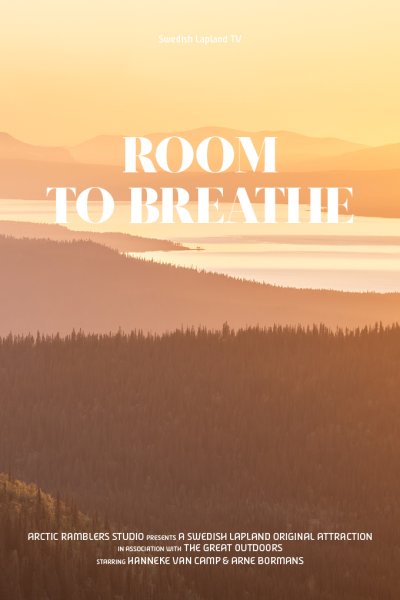
An Arctic agenda for a more responsible destination
— fly fishing —.
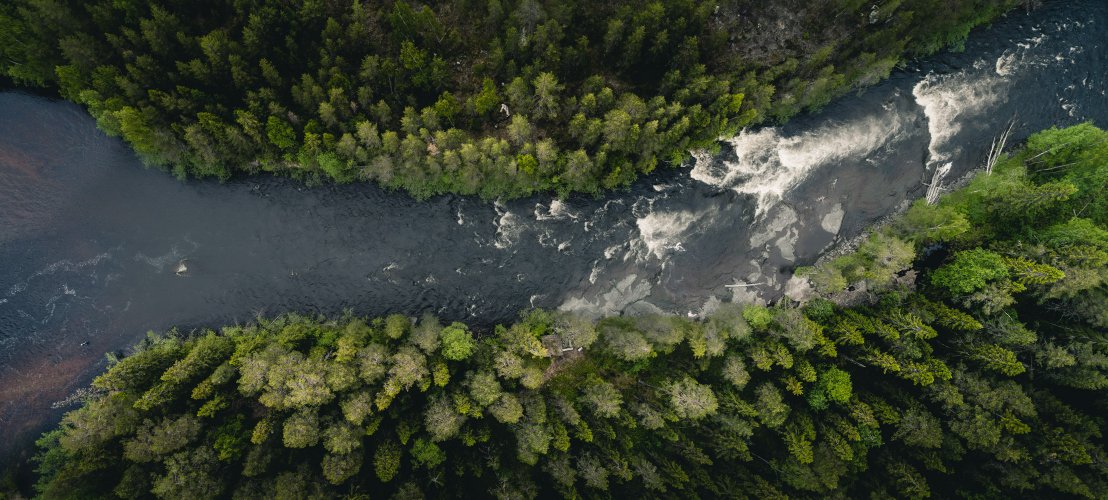
How to catch a Baltic
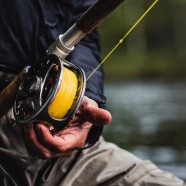
10 fish to catch
Salmon, Arctic char, trout, grayling... Here are ten fish to hook up with in Swedish Lapland....
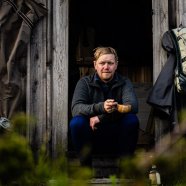
Fly fisher for life
Some of the best and most scenic fly fishing in Sweden is found at Miekak fishing camp in the Arjeplog mountains. To some of its guests, it is somethi...
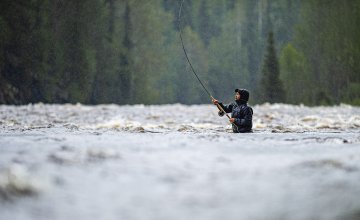
Fly fishing heaven
Four national rivers and countless tributaries and thousands of streams from mountains to coast, more than 30,000 lakes and a coastline of over 1,500 ...
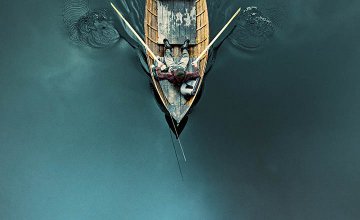
The longest silence
If a fish, or a catch, is to be a story, the fish has to be out of the ordinary, preferably bordering on dangerous. And if the story is to become a cl...
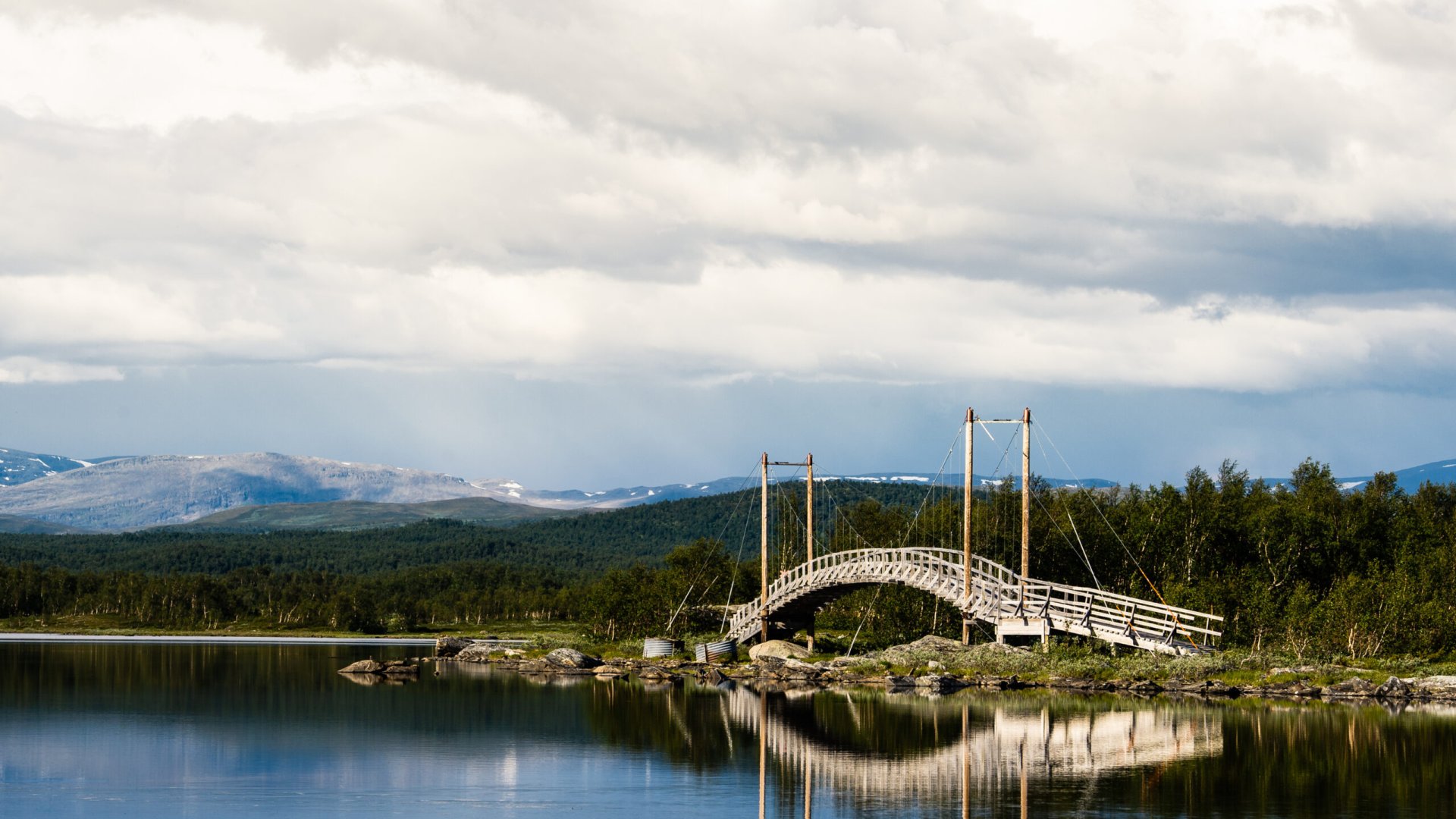
A Swedish Lapland story
The king of all trails.
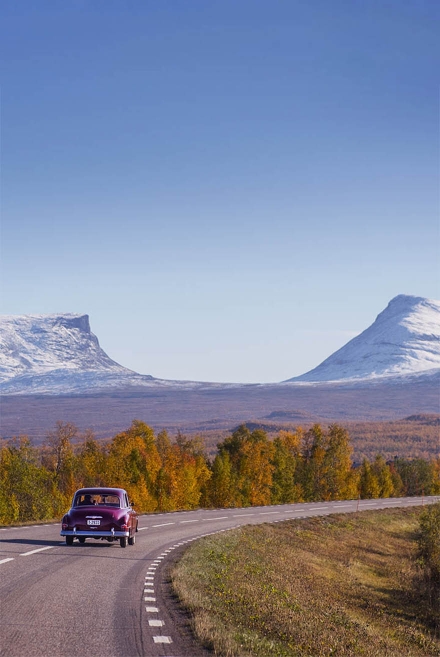
Road trips up north
Road trip: piteå — kvikkjokk.
The entire route, from Piteå in the east to Kvikkjokk in the west, is 305 km. The trip takes you from the coastal town Piteå at the mouth of the Pite River to the mountain village Kvikkjokk at the shores of lake Saggat....
Road trip: The Sámi route
The northernmost part of Sweden is home to northern Europe's indigenous people: the Sami. This means that Sweden's Arctic destination – Swedish Lapland – is part of Sápmi. This magnificent landscape holds an equally magnificent story....
Road trip: Luleå — Ritsem
The journey takes you from the coastal city Luleå, by the Bothnian Bay archipelago, to the mountain station in Ritsem on the shores of lake Akkajaure. ...
Road trip: Torne valley
The entire route, from Haparanda in the east to Riksgränsen in the west, is 480 kilometres. The journey takes you from the mouth of the Torne River in the Haparanda archipelago to the river’s source, above lake Torneträsk. ...
Road trip: Silvervägen
From the sea in Skellefteå to the Arjeplog mountains and the Norwegian border, this is Highway 95 – the Silver Road. A journey along this road will take you from the coast and its cultural landscape through deep forests and up to the vast mountain sc...
— Summer in the Artctic —
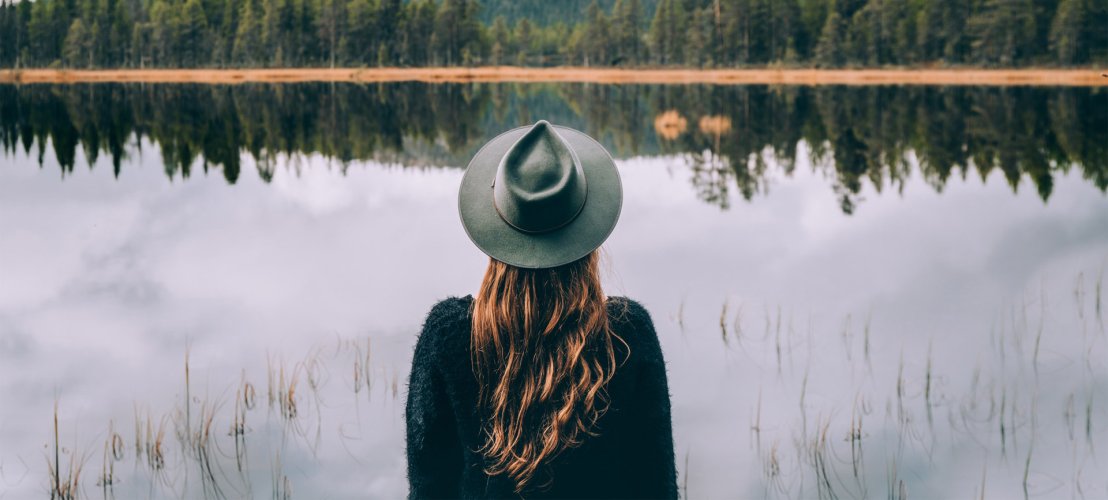
The forest is yours
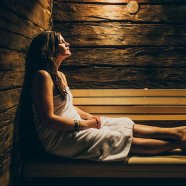
In sauna veritas
Sauna, or bastu in Swedish, is something as natural to people in the north as the midnight sun and the northern lights. It used to be something of a p...
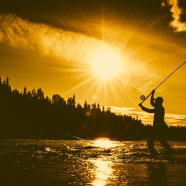
13 ways of experience the midnight sun
The season with midnight light is around 100 days long. You play golf in the middle of the night, you take a swim when you feel like it and those who ...
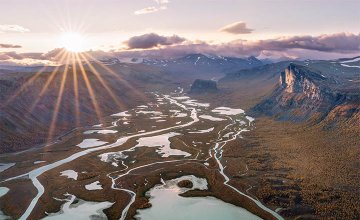
The national parks
National parks are areas featuring a certain type of landscape, protected to preserve their natural condition. It's about creating opportunities to ex...
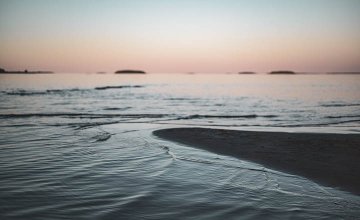
The summer coast
Not only is the Bay of Bothnia Sweden’s sunniest summer getaway, it is also an exciting destination where the brackish sea water meets lively coastal ...
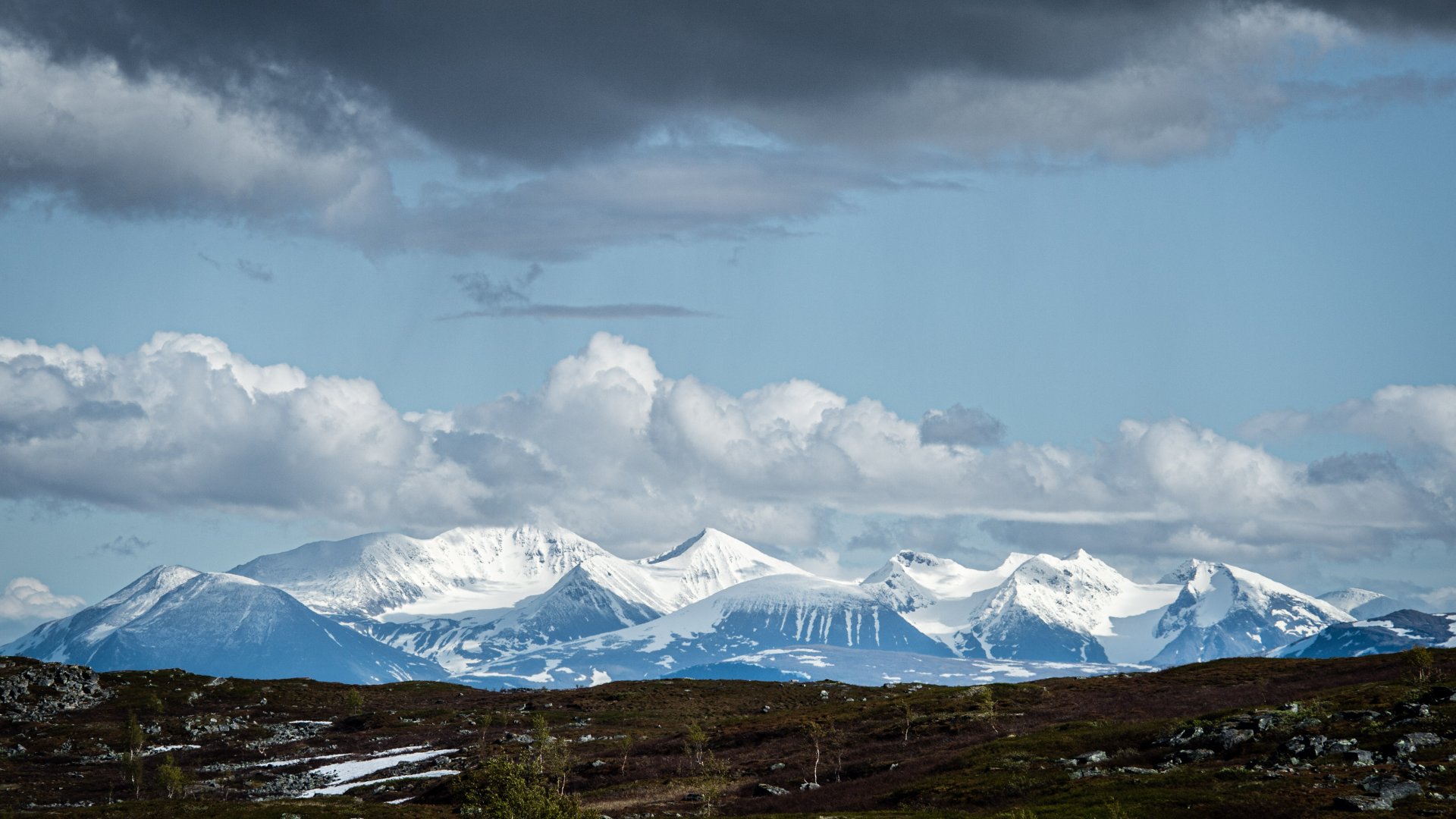
THE EIGHT SEASONS
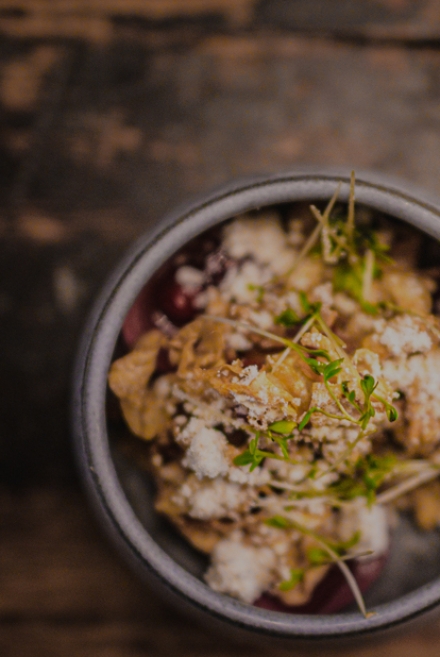
Take a bite
Summer is approaching. People in the north are looking forward to life during three months of midnight light. The snow covering the barbecue has melted, and it is time to eat out(side) again....
The edible country
The freedom to roam is an essential part of life in the Nordic countries. In the Arctic region, it is a large part of our culture and our well-being. To be able to access and live off the land is a privilege for campers and foragers, but it also come...
The gold of the Bothnian Bay
Kalix Löjrom, Kalix vendace roe, became Sweden's first food product to receive a protected designation of origin ten years ago. We tag along on a vendace roe safari to learn how this delicacy becomes one of the best dining experiences Swedish restaur...
Some of the best cheeses in Sweden
On the slope leading down to the lake, 37 cows are grazing. Some are drinking water on the shore. The grass is green, and if you are standing out in the yard, the view of Lake Storkågeträsket is second to none. No, rural romanticism cannot be ignored...
The food story
Eating well is part of every journey. Well, it could be the whole reason for the trip. This is the food story. ...
The taste of Swedish Lapland
When you visit Swedish Lapland, you will notice that our food culture is closely intertwined with our lifestyle. There is a strong tradition that testifies to how we have lived from what nature has generously provided us with for many millennia. Join...
Sápmi slow food
As far away as you can get from industrial foods, you'll find Sámi food traditions. Nothing goes to waste. Everything has its own unique flavour. Meet Ingrid Pilto, a Sámi food creator. ...
The blueberry
Blueberries are one of the most common plants in Sweden, loved by both humans and animals. Not only are the sweet little berries tasty, but they are also very good for you: magic and science in symbiosis. Thanks to the midnight sun, the berries here ...
A road trip for the hungry
A road trip is simply a way of discovering things you've never seen before. If you give yourself the chance, you might also come across flavours you've never experienced before. ...
Arctic fika
In Sweden, we love our coffee, and so-called boiled coffee (coarse ground and brought to the boil in a pan) is in many ways the national drink of Swedish Lapland. Preferably served with all the trimmings: coffee cheese, coffee meat, dried reindeer me...
Coffee made by lemmings
Markus and Rolf were given the mission to bless the world with dark-roast, coarsely ground coffee. Surely, you’ve heard the story about the northern lemmings bringing coffee beans home from Africa, floating home with the Gulf Stream to roast the bean...
The way we eat
When in Swedish Lapland, exploring the nature of the Arctic, chasing the northern lights or just soaking up the sun 24/7, make sure you don’t miss out on the food. Some of the food we eat might sound a bit strange, but we highly recommend you try and...
— THE ARCTIC DESTINATION —
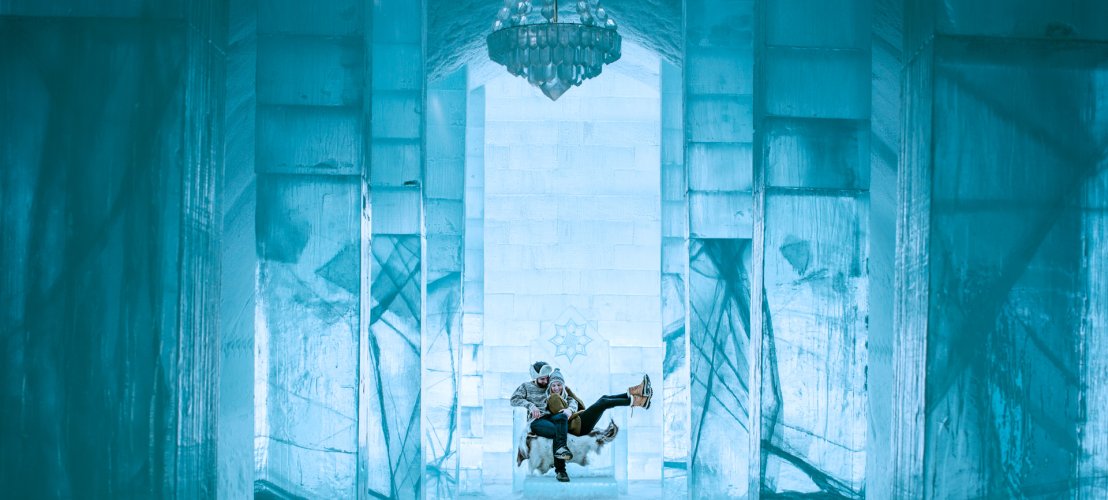
Icehotel 365
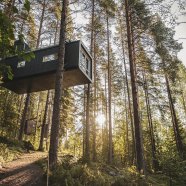
What started with a film featuring a small wooden hut in the forest has become a cool hotel. These days Treehotel in Harads is considered one of the w...
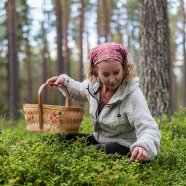
The arctic lifestyle
The everyday arctic lifestyle is deeply rooted in nature. We live our lives under the northern lights and the midnight sun, amid hail and black flies,...
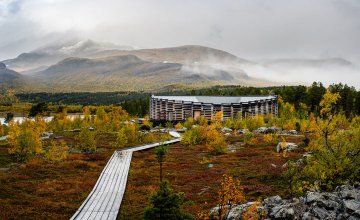
Laponia World Heritage
On a headland called Viedásnjárgga in Stora Sjöfallet National Park lies Naturum Laponia. It's a place that tells a story of mountains on the other si...
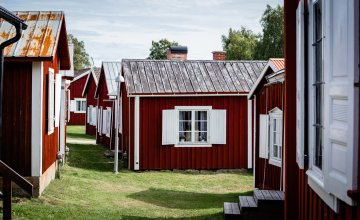
Gammelstad — a world heritage
Just outside Luleå, you'll find the church village Gammelstad. This used to be where Luleå city centre was located right up to the 17th century, with ...
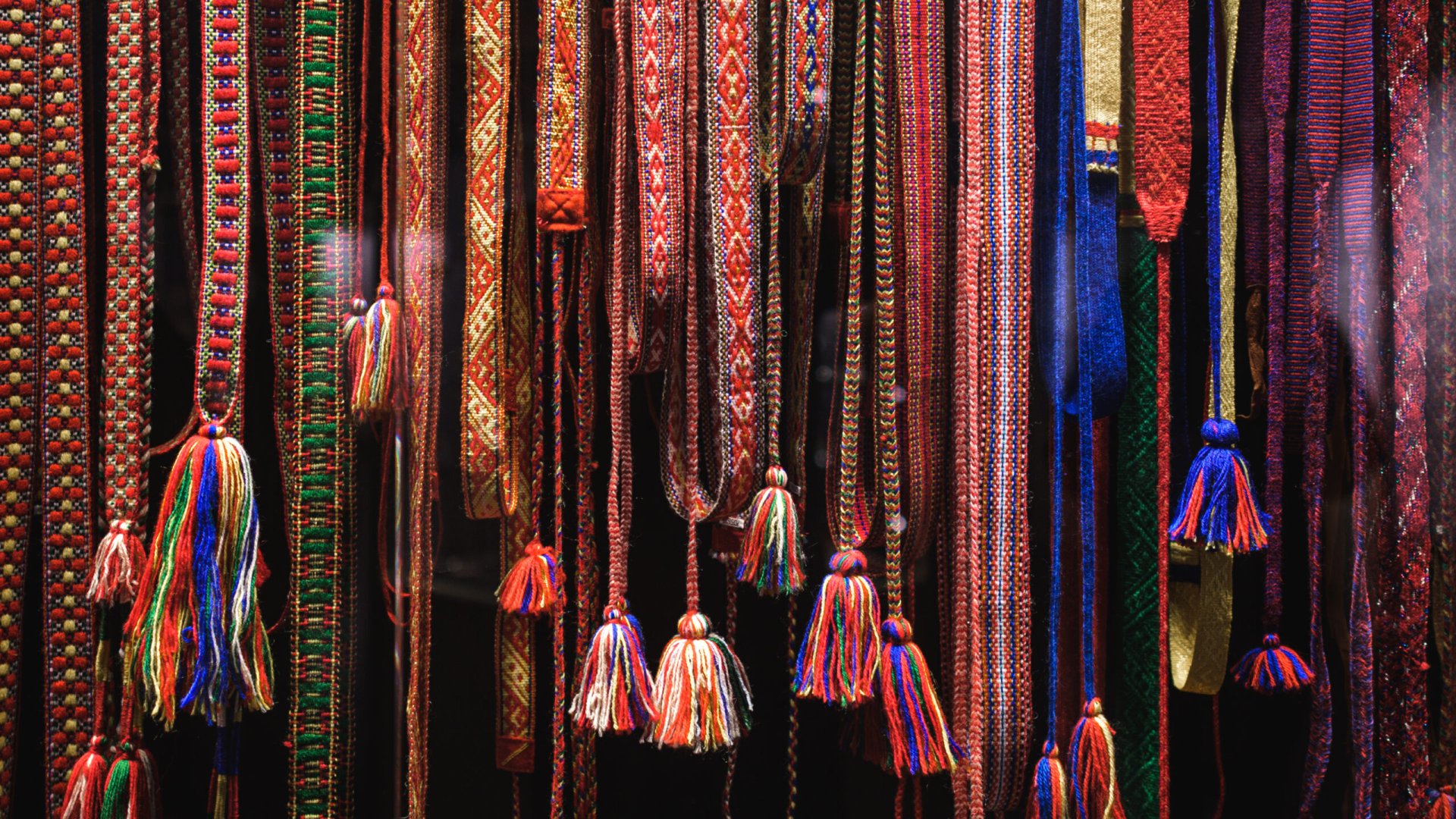
A SWEDISH LAPLAND STORY
Sápmi tales.
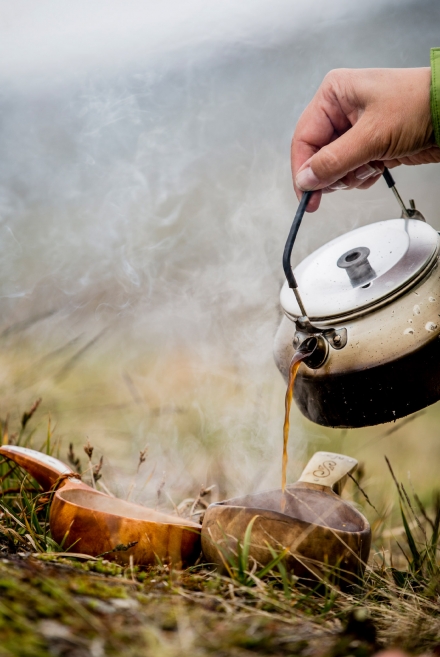
Meet the locals
Leila nutti.
Simply put, painter and craft artist Leila Nutti is a jack of all trades. But what she does is perhaps more aptly described by the Sámi word árbediehtu....
Johan Eriksson
Some of the best and most scenic fly fishing in Sweden is found at Miekak fishing camp in the Arjeplog mountains. To some of its guests, it is something of a craving....
Britta Marakatt-Labba
She celebrates her 40th anniversary as an artist, Sámi narrator Britta Marakatt-Labba. This is also how long it has taken Swedes to discover her art. The breakthrough was international for this resistance artist who tells her story with the needle as...
Mia Stålnacke
Experiencing the northern lights is on many people's bucket list. Travellers from around the world head north to experience the celestial phenomenon, hoping to snap a picture of it. Been there, done that. But then some live with the northern lights a...
Chad Blakley
In 2008 photographer Chad Blakley moved to Abisko to work the summer season. He followed the love of his life: Linnea. They both quickly fell for the breath-taking landscape and the welcoming people in the village. So, Chad and Linnea decided to stay...
Johan Airijoki
Telling a great story has always been important. In fact, some claim that homo sapiens thrived as species due to their skills in gossiping. From jojk to Airijoki, from stories to songs, this place is known for a good vibe....
Frida Lind-Oja
Meet Frida Lind-Oja, marketing manager and co-owner of the family business Camp Ripan in Kiruna. She is probably slightly different from many other marketing managers and hotel owners, since she in her free time gladly participates in the worlds long...
The Palm family
If you were to define skiing, it is ultimately about two planks and a passion. If you were to define skiers, however, they would probably be called the Palm family....
— The northern lights —
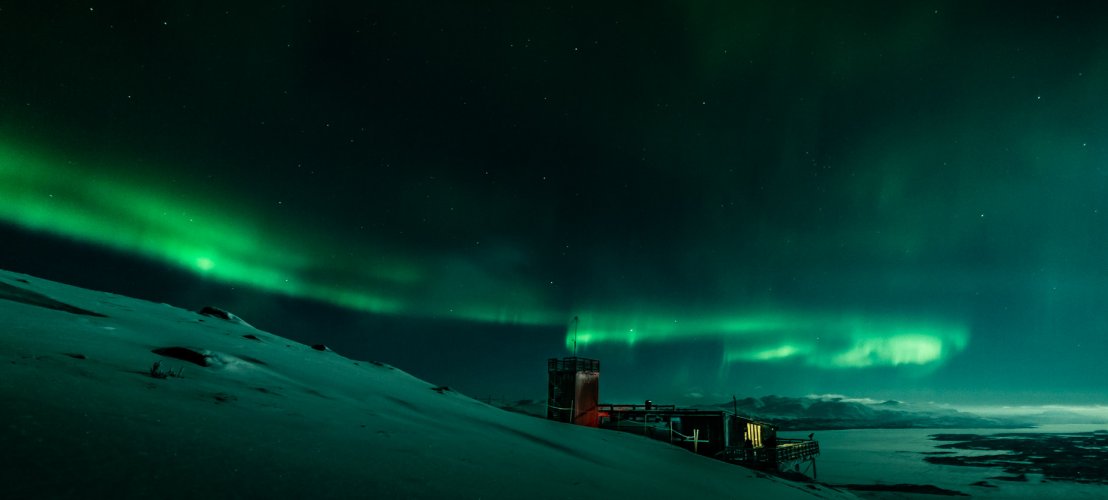
World’s best place for northern lights
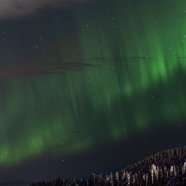
7 tips on how to photograph the northern lights
So you've gone to Swedish Lapland, Sweden's Arctic destination, to experience the magical northern lights. Here are seven tips on how to get some good...
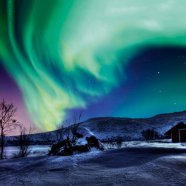
When to see the northern lights
Shimmery and magical. The dance of the northern lights is a spectacular sight that we frequently enjoy in Swedish Lapland. Viewing the Aurora Borealis...
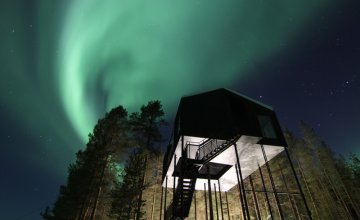
10 cool places
Great spots where the chances of seeing the northern lights are good, and also, awesome places to stay....
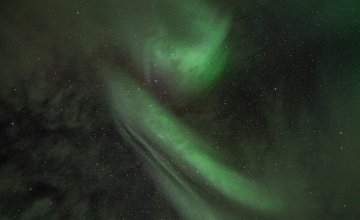
Looking for the northern lights?
Shimmery and magical. Viewing the northern lights, the Aurora Borealis is a jaw-dropping and mystical experience that we frequently enjoy in Swedish L...
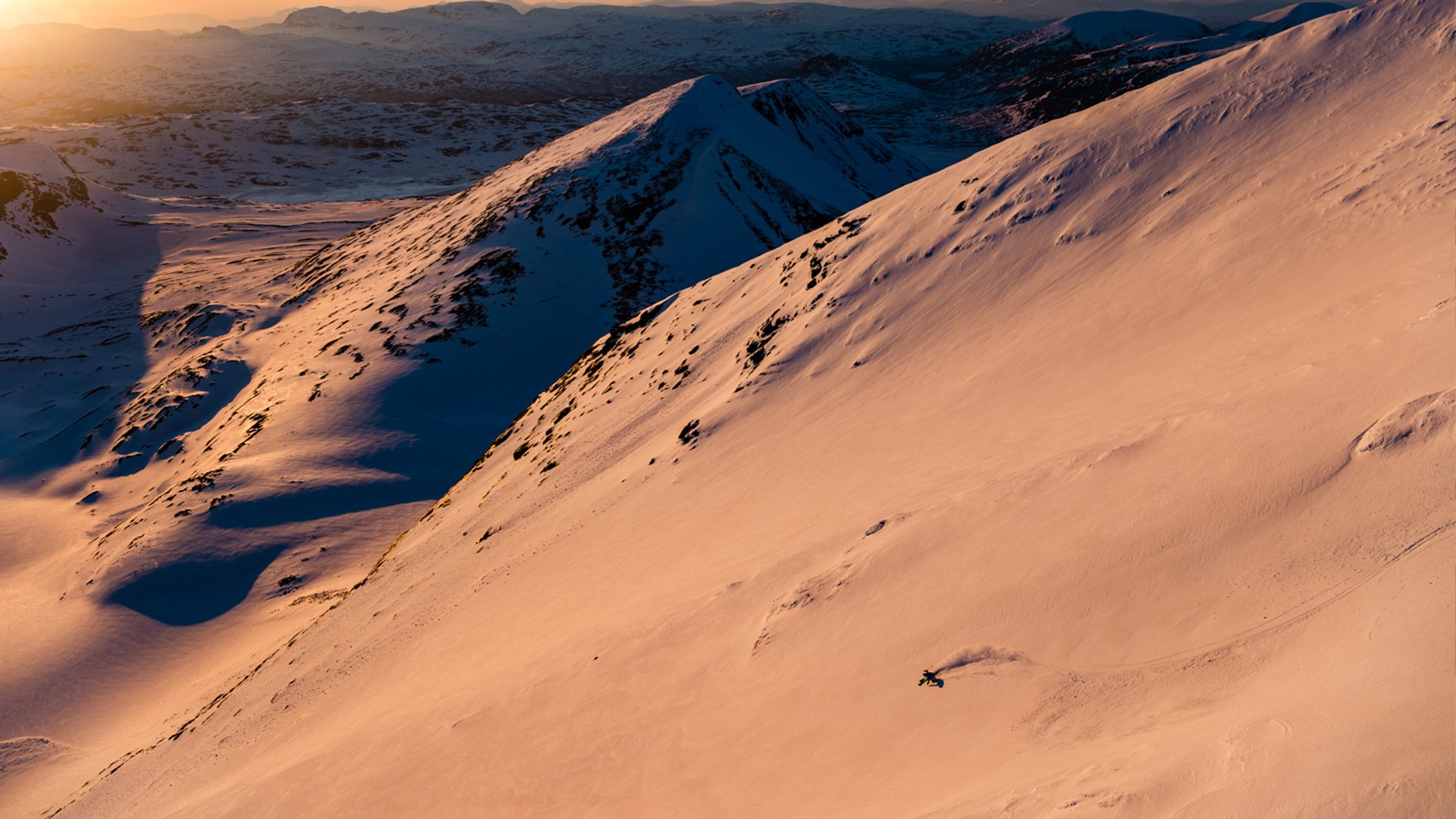
Skiing in Swedish Lapland
The love for skiing, — explore swedish lapland —.
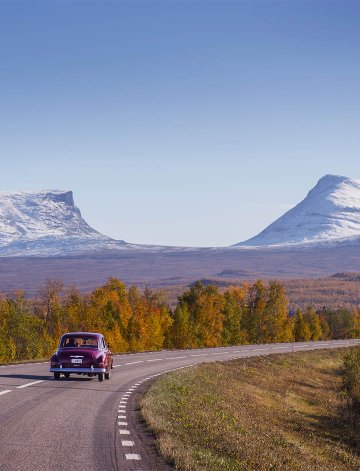
Through midnight sun and endless roads. From the magic mountains in the west, deep into the woodlands and all the way to the islands in the east. This is your adventure along the roads of Swedish Lapland.
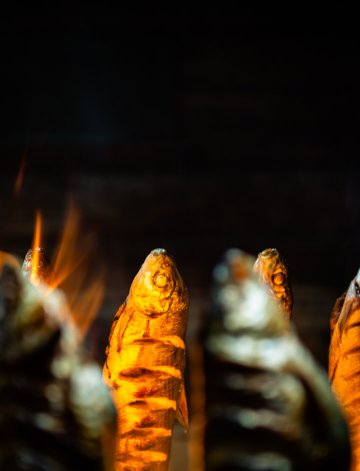
We keep honestly prepared food from local produce close to heart. That comes quite naturally since nature’s pureness, and lots of great ingredients surround us. Taste all the goodness of nature that has over centuries adapted to life in our arctic environment.
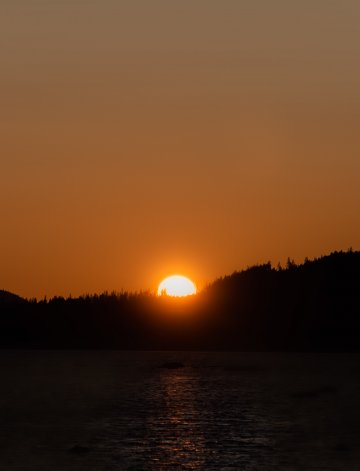
In summer, above the Arctic Circle, the sun doesn't set – a phenomenon known as the midnight sun. Depending on where you are in Swedish Lapland, you can experience it from May to July. The further north you go, the shorter the nights. The best thing about it? You can do whatever you want at any time!
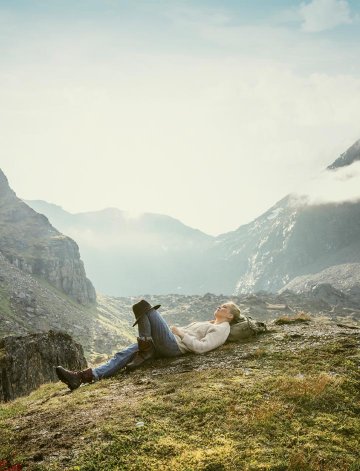
The everyday arctic lifestyle is deeply rooted in nature. We live our lives under the northern lights and the midnight sun, amid hail and black flies, wet snow and intense sunlight. We dry our meat in the spring, smoke our fish in the summer and boil our coffee over an open fire all year round.
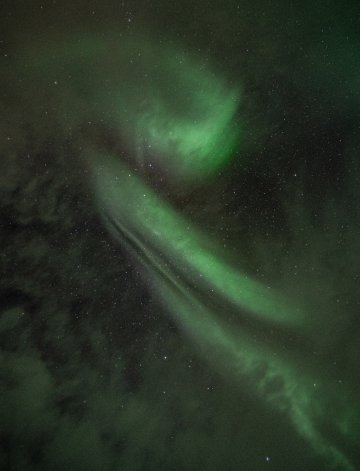
Not only is Abisko, Swedish Lapland, within the Aurora oval but the surrounding mountains also keep the skies clear and there's barely any light pollution. This is probably the world's best place for the Aurora Borealis.
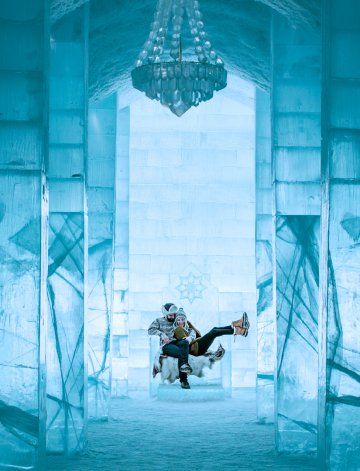
There are some things in life that you just have to do – and some places you just have to visit. Like the world's best place for northern lights, or spending the night at the original ICEHOTEL Make it happen sooner rather than later.
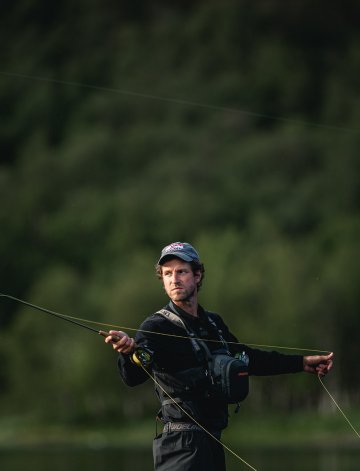
Four national rivers and countless tributaries and thousands of streams from mountains to coast, more than 30,000 lakes and a coastline of over 1,500 kilometres – this is fly fishing heaven. And Swedish Lapland has room for a few more fishers.
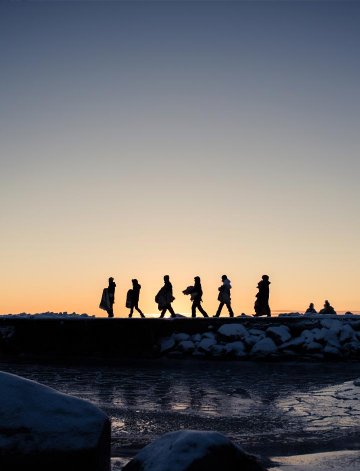
From the woods to the town, from the sauna to the spa, from great food and treatments to the stillness of the night. The north offers the perfect escape for feeling well.
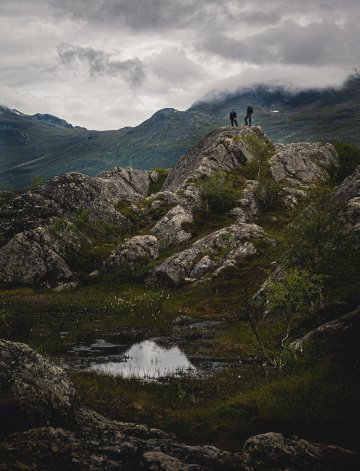
You can hike overlooking the sea or Sweden's highest mountaintops. It can be a hike to the cloudberry marshes or along a winding forest trail – when the silence, the lack of cell phone coverage and the breathtaking views hit you.
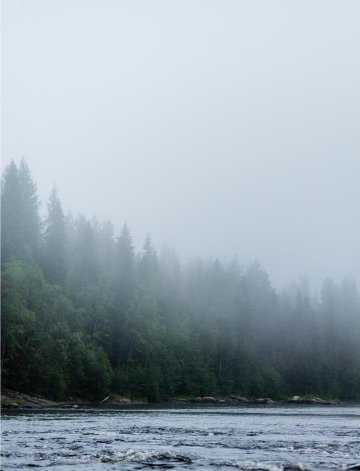
It has always been said a walk in the woods and a breath of fresh air can do wonders. Maybe that’s why we love spending time in nature. And with midnight sun in summer, northern lights in winter and sparkling colours in Autumn, it’s wonderful all year round.
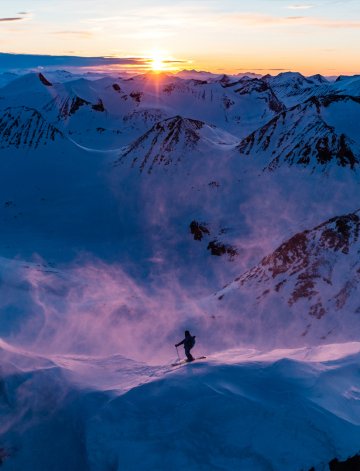
Yes, that is what we do here in Swedish Lapland. We ski. From late autumn to mid-summer, under the northern lights and the midnight sun. It's a love affair from the moment we get our first skis at an early age.
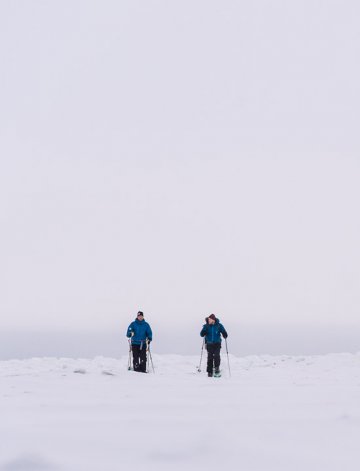
In Swedish Lapland, we embrace the winter months – and you will too. What’s not to love about dramatic winter landscapes, crystal clear-evenings and stunning northern lights dancing across the sky? And then all the things you can do!
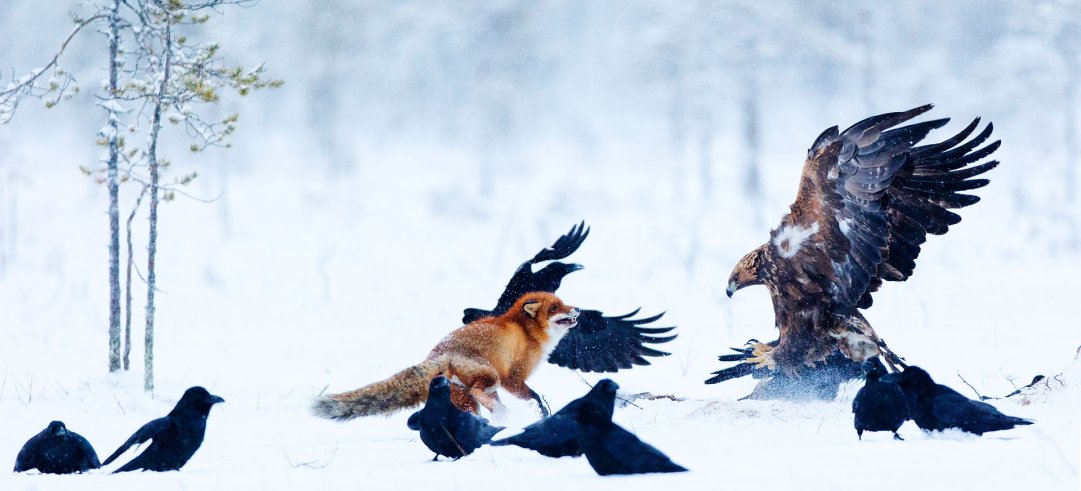
The eagle’s nest
In the village Kalvträsk, wildlife photographer Conny Lundström has constructed a number of hides where photographers can experience a photo session with golden eagles up close. ...
Ski in Swedish Lapland
Skiing is as much part of the Arctic lifestyle as northern lights, thermal underwear, and coarsely-ground coffee. In Swedish Lapland people have skied...
The great race of mercy
In Junosuando, a village located on the Arctic Circle in Swedish Lapland, there's a statue of Leonhard Seppala. He's one of the world's most famous mu...
Driving on ice
On lake Uddjaur in Arjeplog, is where you'll find one of the coolest driving schools in the world: Lapland Ice Driving. How it came to be is a cold an...
The Best Towns to Visit in Swedish Lapland

When it comes to Swedish Lapland, what is the first thing that instantly comes to mind? You must think of numerous images, from dazzling northern lights to the unique midnight sun and the view of untamed wilderness and unspoiled beauty. Sweden’s northern region is growing in popularity among tourists, and for a good reason. If you are searching for a unique experience considering a variety of activities, plan a visit to Swedish Lapland.
The 7 best towns in Swedish Lapland
Swedish Lapland offers a vacation from exploring the historic Sami culture to taking on challenging climbs. If you are interested in discovering the best towns to visit in Swedish Lapland, read this guide until the end!
Kiruna

Kiruna is one of the most northern towns in Sweden. Although it is most famous for its mining, that’s not the only reason to visit it. Kiruna is the gateway to Swedish Lapland since it is more than 200 kilometers north of the Arctic Circle. Moreover, the town is changing as it is shifting, block by block, to make room for the mine’s enlargement. Since the relocation might persist until 2035, it might impair the lodging supply.
Still, if you want to visit a town for a brief stay in Swedish Lapland and don’t have time to travel further afield, Kiruna is the best place. You will find many companies in Kiruna that offer amazing trips and excursions in this area. You will not have to miss out on any fun. Finally, money won’t be an issue because there are plenty of affordable hotels in the area.
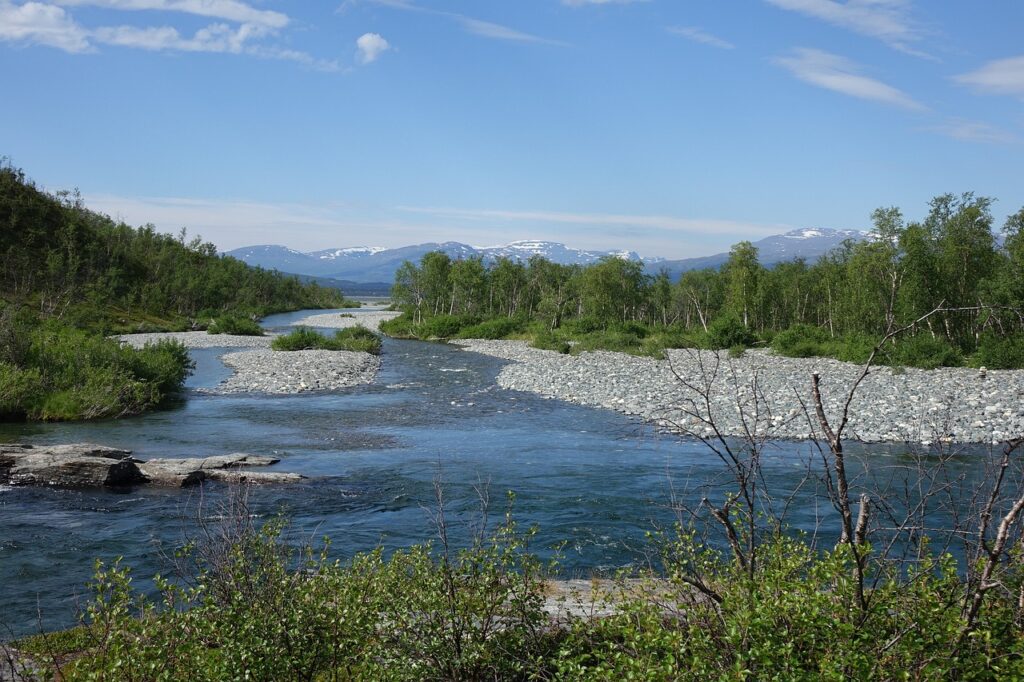
The village of Abisko, which is close to Torneträsk Lake, has a wide range of places to go. You will have plenty of things to do such as seeing the Northern Lights, witnessing the beautiful fjords and much more. In addition, you can visit the nearby Abisko National Park and get a chance to try some ice fishing. And if you want to get the best out of your Abisko tour, go for a day trip to Norway fjords and the town of Narvik.
All in all, Abisko is a good choice for a family-friendly excursion, thanks to the diversity of activities. Lastly, there are several places to stay. From guest houses, hostels, and mountain lodges, to the renowned IceHotel in Jukkasjärvi, you can choose any lodging place.

In northern Sweden, at the northern tip of the Gulf of Bothnia, a bit further south is the city of Luleå. Luleå is another must-visit town in Swedish Lapland. With rich theater, music, arts, and culture, this town has a lot to offer to art-hungry tourists. Moreover, Gammelstad, a UNESCO World Heritage Site , is one of the most well-known attractions in this area.
Next, a stone church from the fifteenth century stands in the center of this church town and is also a must-see. Note that Luleå is the largest city in Swedish Lapland, with a population of close to 100,000. So if you want to see the natural marvels of Sweden in a mid-sized city where culture and food go hand in hand, then visit Luleå.
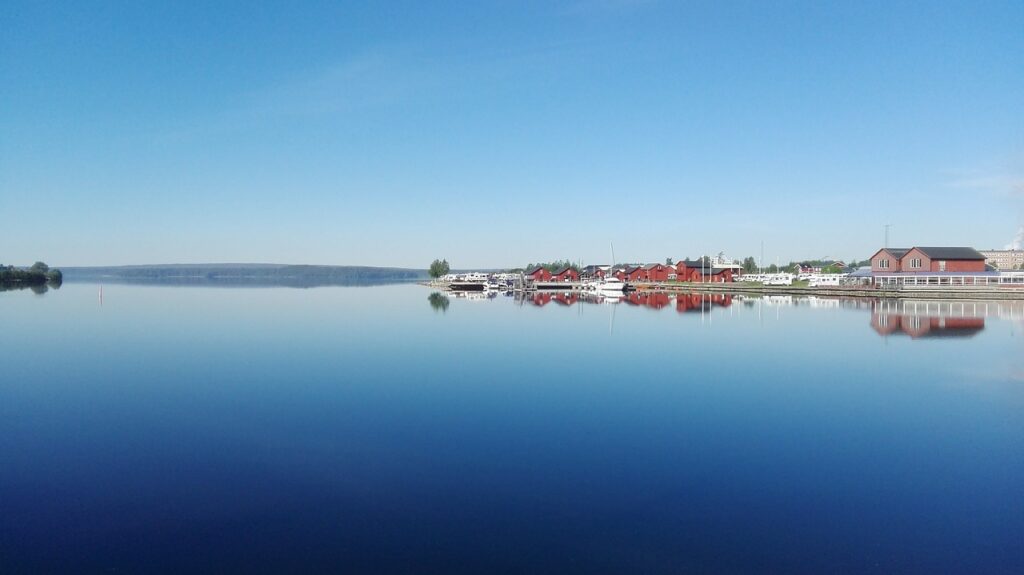
Piteå, a small town in Swedish Lapland, is located not far south of Luleå. This city has much to offer to everyone and is incredibly popular with tourists. Particularly during the summer, you will see a lot of tourists heading to a peculiar location amid the Piteå Archipelago. Although this city is primarily known for its beaches, forests, and lakes, it also has a few intriguing museums.
The primary beach resort, Pite Havsbad, is where most residents and visitors go in the summer, earning Piteå the title “Riviera of Sweden.” However, the seas in Piteå are not Sweden’s warmest, so you cannot sunbathe so close to the Arctic Circle.

Sweden’s highest peak, Kebnekaise , is more than 2,100 meters above sea level. One of the country’s most incredible adventures is getting to its peak. However, be ready to encounter breathtaking views and psychological struggles as you climb the summit.
While there are various ways to Kebnekaise, it is better to explore them during the peak summer season. Why? Because chilly winds and gusty snow showers are frequent in summer as well. So don’t forget to prepare your cleats and a warm jacket.
And don’t worry, you don’t need to be a skilled climber to reach the top. But if you plan to climb it, you should be physically active and mentally prepared to reach the highest peak of Swedish Lapland safely.

The small village of Jokkmokk is arguably the most attractive of all large towns and cities in Swedish Lapland. With vintage wooden buildings and neon signs lining the wide streets, you will feel the cultural vibes of this town. With a rich cultural past and a calm atmosphere, it’s a town with enough to keep you busy for a few days or longer.
One of the best venues to discover Sami history is at this Sami cultural center in Sweden. A fantastic museum here highlights the challenges of surviving in one of the most hostile environments on earth. And last but not least, a half-dozen stores are selling authentic Sami handicrafts.

The town of Gällivare is delightfully devoid of the noise of long-distance tourist buses. Why? Because it lacks the same attraction as other northern cities of Swedish Lapland. Gällivare is a quiet location with kind locals who will undoubtedly think you’re insane to visit this frigid part of the world. But if you like your vacation places real, uncrowded, and a little raw around the corners, then Gällivare is worth a trip.
You can do numerous things, such as dog sledding, visiting a sizable local mine, or snowshoeing through the woods. And yes, don’t forget to see the northern lights. An excellent site to explore the slopes is the Dundret Ski Resort .
Regardless of the season, there are many activities in northern Sweden. You can take advantage of the peculiar Midnight Sun in the early summer. Swedish Lapland is also the best place to view the magnificent Northern Lights in winter. In addition, the Sami, an indigenous tribe of Scandinavia, also dwell in Swedish Lapland. By visiting the towns mentioned above you can witness all these fun things.
1 thought on “The Best Towns to Visit in Swedish Lapland”
looking for a replacement live in Swedish girl from Sweden Lapland towns… i am 74yr. old male and my former girl has gone back to Sweden, they would live in my house free, and they will take care of me. i will supply groceries and other needs. i live on an Amish farm, 313 beechdale rd. bird-in-hand, pa 17505 USA please feel free to contact me.
Leave a Comment Cancel Reply
Your email address will not be published. Required fields are marked *
Save my name, email, and website in this browser for the next time I comment.
Discover the Northern Lights at Aurora Sky Station
Lola Akinmade Åkerström/imagebank.sweden.se
Skiing in Swedish Lapland is a very popular activity
Skiing in åre- Henrik Trygg/imagebank,sweden.se
Abisko National Park - one of the best places to see the Northern Lights
Katja Kristoferson Folio/imagebank.sweden.se
Stay at a amazing icehotel in Swedish Lapland
Peter Grant - www.icehotel.com

Swedish Lapland Guide
Swedish Lapland is a less populated destination in Sweden and offers the most magnificent nature eldorado for adventure lovers.
The northern part of Sweden is named Swedish Lapland, at here everything you do, feel, smell and eat is associated with the local natural scenery. Forget about the busy life, annoying noise and agreements.
Discover the Northern Lights and Midnight Sun
Seasonally between September and March, you can explore the fantastic phenomenon called The Northern Light , with flutter coloured lights observed in the sky is great to discover from the Abisko Mountain Station.
Swedish Lapland also creates special light scenery through the summer. The famous Midnight Sun between May 27-July 18. For notice, above the Arctic Circle, the Midnight Sun is visible 24 hours a day.
The local community
The most Northern town here is Kiruna, also called the Capital of Swedish Lapland. A very recommended destination itself, but also the key destination for visitors, which related to the infrastructure, begins their Swedish Lapland adventures here. Kiruna is surrounded by fantastic nature and the world-famous for Jukkasjärvi Icehotel but offers a lot of other adventures throughout the year. A way to learn about the local community, history, culture and traditions is absolute to enjoy and visit the Sami people. They are the only indigenous people of Nordic countries, recognised and protected under the international conventions of indigenous peoples. It can be a very interesting experience to see, how they live, and the way they keep up their traditions. A good tip, take a reindeer ride in Jokkmokk with the local Sammies or enjoy a prepared s Sami meal by the fire.
National Parks
Swedish Lapland is surrounded by nature wilderness beauty, which can be experienced through national parks. If you are looking for a perfect hiking adventure, take a guided tour through the Kungsleden Trail in the beautiful National Park of Abisko.
The Sarek National Park is by size Sweden`s biggest park with it`s 2,000 square kilometres of high alpine peaks, valleys and foaming rivers. It is also known to be the place to be far away from everything, united with the natural wilderness.
Amazing train ride Inlandsbanan
If you want a little more leisurely way to experience nature in Swedish Lapland, then hop on the famous local train Inlandsbanan , and get a breathtaking tour through the beautiful, amazing natural wildlife. Get off in one of the historic local villages, get a glimpse of the local civilisation, food and culture, and end your tour at the Arctic Circle for some photos. The Innenlandbanan starts in Kristinehamn and ends in Gällivare.
All over in Swedish Lapland, the destinations offers a lot of adventures to discover the unique nature. Of course, the season decides what kind of adventures which relevant. Some of the highlight adventures are skiing, snowmobiling, reindeer trekking, husky tours in the Winter. In the summer, adventures like fishing, canoeing, hiking and biking are popular. Even a stay can be an adventure, just to mention The Icehotel in Jukkasjärvi close to Kiruna or The Tree Hotel in Harads.
How to get to Northern Sweden
The easiest way to reach Northern Sweden`s beautiful nature are Kiruna in the north or the university town of Umeå. From here you will find daily flights arrive from Stockholm or Gothenburg.
Irresistibel Nature Experiences
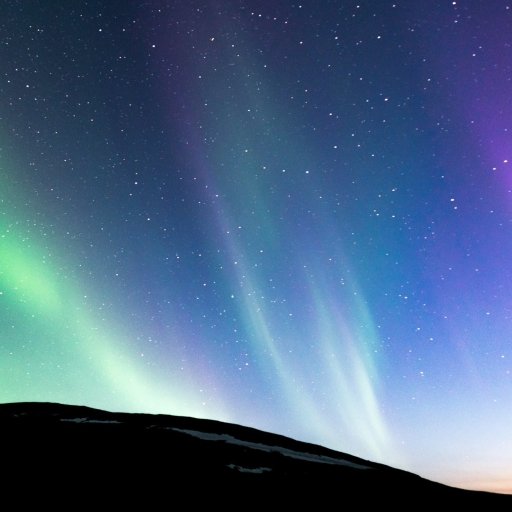
Northern Lights
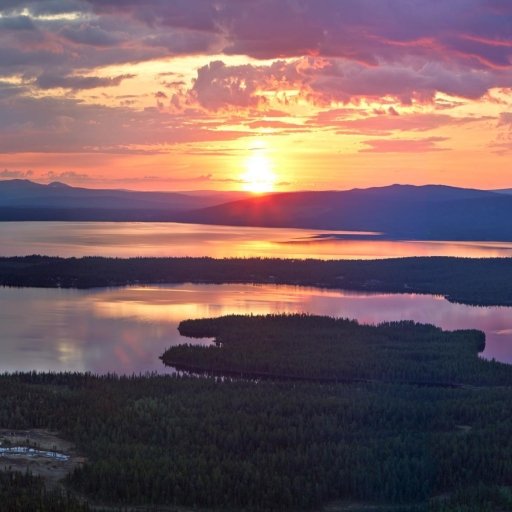
The Midnight Sun
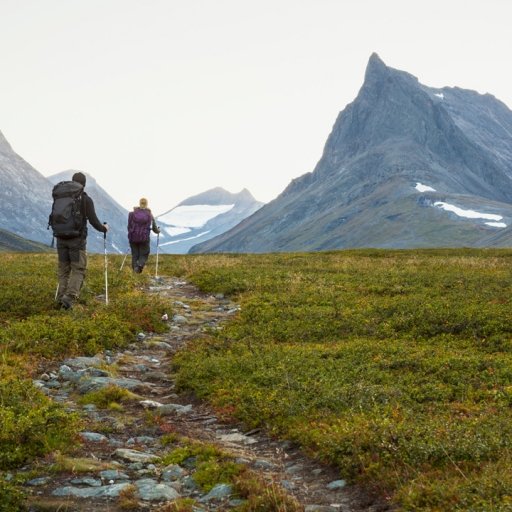
Kungsleden Trail

Sarek National Park
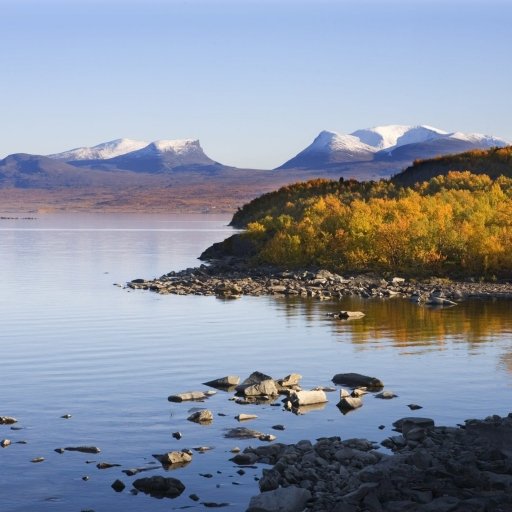
Abisko National Park
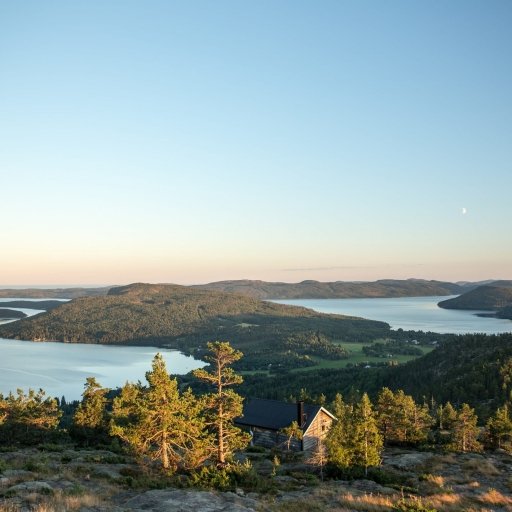
The High Coast in Sweden

The Arctic Circle Cities
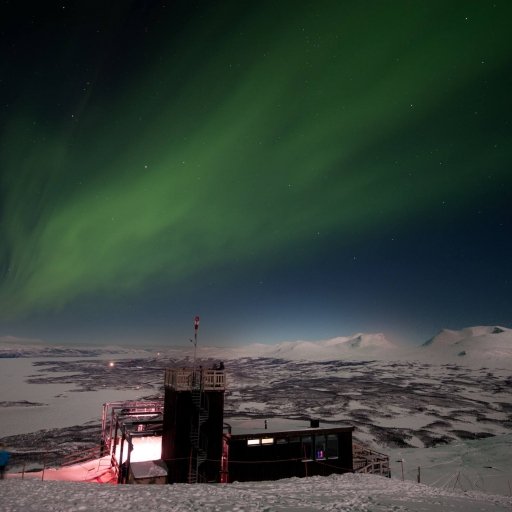
Aurora Sky Station

Recommended Swedish Lapland Destinations
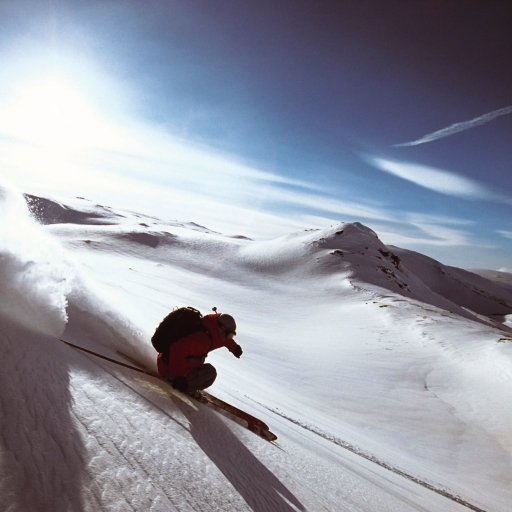
Kiruna in Lapland

Magic Outdoor Experiences
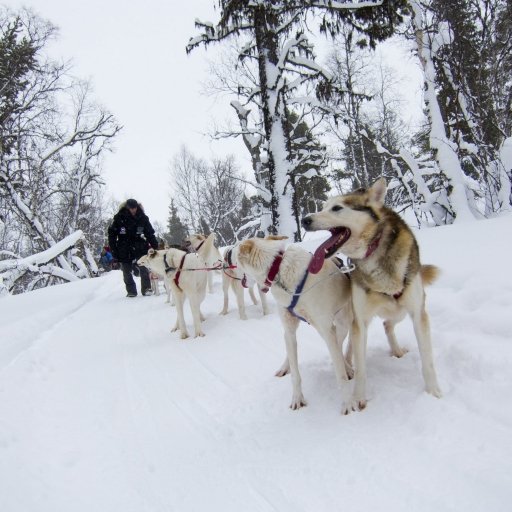
Dog Sledding in Swedish Lapland
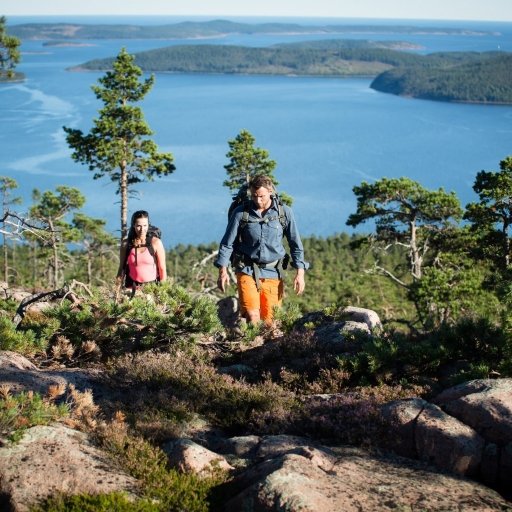
Hiking Trails in Swedish Lapland
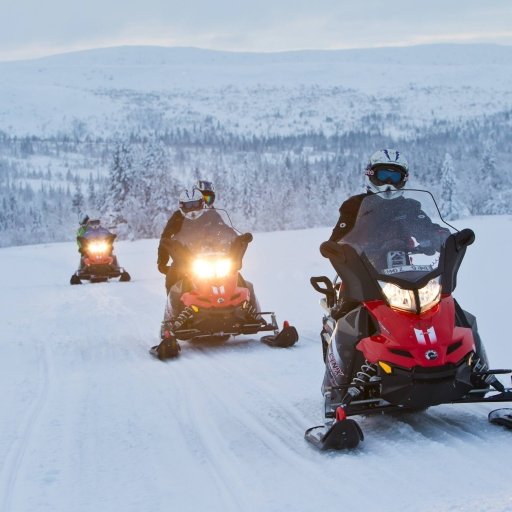
Snowmobiling in Swedish Lapland
Get inside the local history.
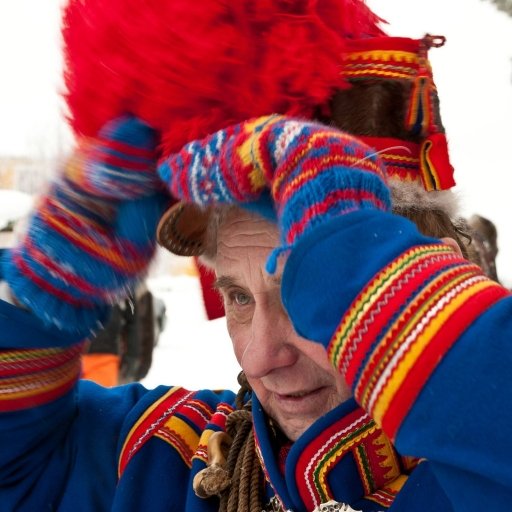
The Sámi People in Sweden
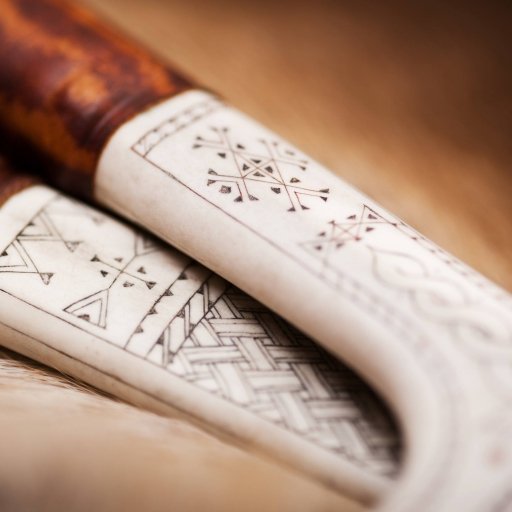
The Sami Museum

The Church Town of Gammelstad
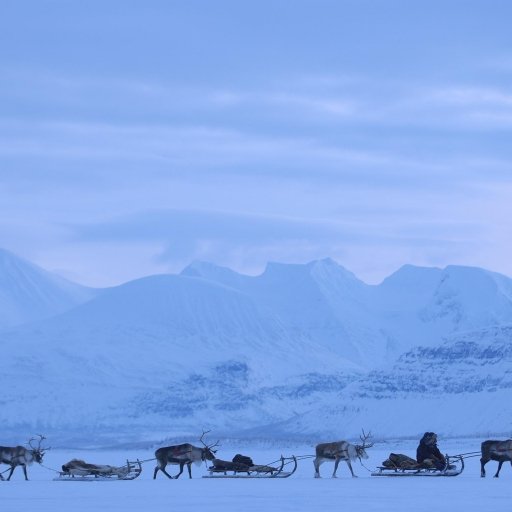
Laponian Area

The Struve Geodetic Arc

Bild Museet Umeå
Good to know.

Transport to Swedish Lapland
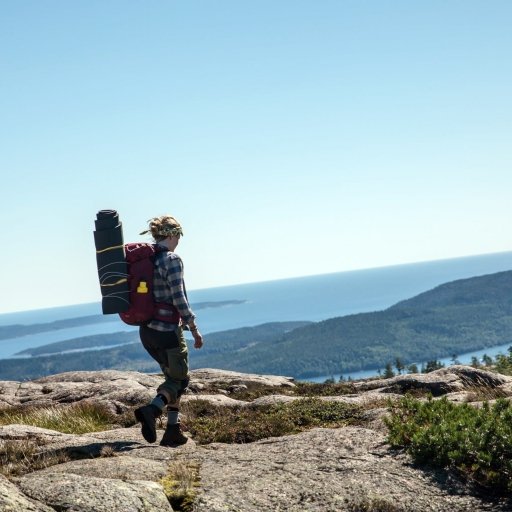
Best Seasons
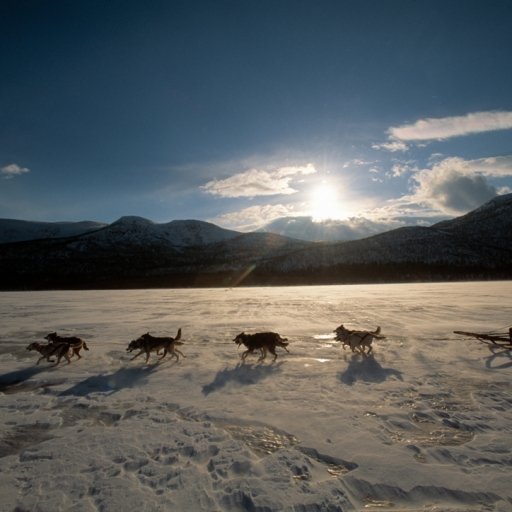
What to Pack
Spectacular hotels.
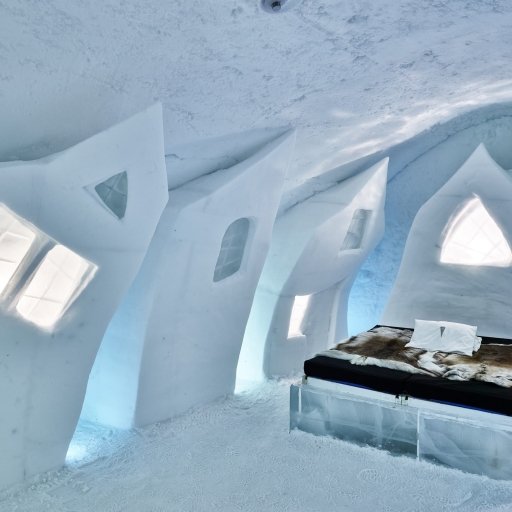
ICEHOTEL Jukkasjärvi
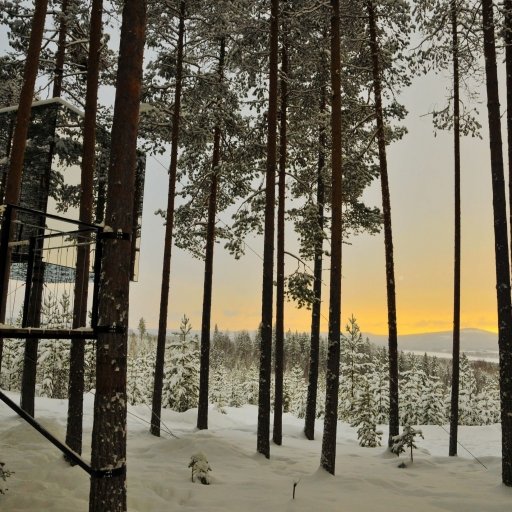
Abisko Mountain Lodge
- Nordic Countries
- Inspiration
- Heritage & Culture
- Nature & Activities
- Design & Shopping
- Nordic Vikings
- Seasons & Weather
- Visitnordic
- Privacy Policy
- Terms of Use
- Become a Partner


11 of the best things to do in Lapland
T he modern-day home of Santa Claus, a popular skiing destination and one of the best places to see the Northern Lights , Lapland is at the top of plenty of travellers’ wishlists for a reason.
Many who visit will stop by in the Finnish Lapland capital, Rovaniemi, take to the pistes in Levi or Yllas and save some time for classic activities like husky sledding or snowmobiling.
But this region, which extends through parts of Finland , Norway and Sweden , has a host of other wonders to explore, from vast hiking trails to cultural centres and unique accommodation options.
And although the winter wonders are well-documented here, the sometimes overlooked summer months provide amazing opportunities to see incredible scenery and enjoy outdoor activities, all while basking in the never-ending light of the midnight sun.
Whether you visit for Christmas or in the middle of summer, Lapland will provide an excellent variety of things to do. Below, we’ve collated a list of some of the best.
See the Northern Lights
This area of the Artic Circle is the best place in the world to see the Northern Lights , with towns and cities in all three countries providing a great chance of seeing the aurora if you stay for long enough.
In Norway, the city of Tromso and the more remote Lofoten Islands are the best place to go, while in Finland Saariselka is perhaps the most popular light-spotting destination (though they can be seen throughout, including in Levi, Inari and Rovaniemi).
The top bucket-list destination for seeing the Northern Lights would probably be Abisko, a small village in the north of Sweden. It is home to the Aurora Sky Station, sat at an impressive 900m above sea level, which is self-styled as the ‘best place in the world to see the Northern Lights ’ due to low precipitation rates and its location within the so-called ‘aurora oval’.
This area, surrounded by snow-capped hills and placid lakes, sees the aurora so often that the tourist board website confidently states that anyone staying for four or more nights between September and April is “almost certain” to see the Lights.
Read more on Europe travel :
- Best European holiday destinations to visit by train from London
- The best winter holiday destinations
- Europe’s best road trips to try in your lifetime
Visit Santa Claus
Rovaniemi is the capital of Lapland – a city of around 60,000 people that is worth visiting for the excellent Arktikum Museum, which explores Lapland’s culture and history, and the plethora of classic Lapland-related activities such as Northern Lights excursions. One particular draw of Rovaniemi is the Santa Claus Village, the official home of the man himself.
If you’ve brought the kids along (and even if you haven’t), you’ll enjoy the magical setting of wooden, Alpine-style buildings adorned with twinkling lights and surrounded by deep snow. Kids can meet Santa Claus, visit his work stations and meet a range of Lappish wildlife, including reindeer and alpacas.
Unsurprisingly for a territory covered in snow, Lapland is home to a handful of popular ski resorts . The main ones are found in Finland , and include Yllas, Levi and Saariselka (most of which are offered as destinations by UK-based ski tour operators such as Crystal Ski and Inghams).
Skiing here is on fells rather than mountains, and overall is more low-key – and far more quiet – than the rest of Europe, with fewer pistes and parties than the Alps or the Dolomites. However, the near-guarantee of a blanket of deep snow, the incredible scenery and a range of activities away from the slopes make Lapland a popular skiing destination. It caters to different abilities too, being a great place for learners, while the presence of floodlit slopes and World Cup runs means more advanced skiers should still be happy enough.
Discover Sami culture in Inari
Inari is a large, remote region that lies around 40 miles from Saariselka, in the north of Finland. While renowned for its magnificent natural beauty, the beautiful Lake inari and a high likelihood of witnessing the Northern Lights (the town lies further north than aforementioned Abisko), it is mainly known as the capital of the indigenous culture of the Sami people.
In the village, Sajos is the people’s cultural and administrative centre, housing the Sami Parliament and promoting and preserving Sami culture, history and tradition. Though primarily for use by Sami people, visitors can attend guided tours that give a respectful introduction to Sami culture.
Husky or reindeer sledding
Husky sledding, reindeer sledding and visits to reindeer farms are all activities that can be done in the majority of Lappish destinations, and are often included in holiday packages if visiting at the right time (usually between November and March).
For reindeer visits and sledding, the obvious destination is Rovaniemi, home to plenty of Santa’s favourite animals and providing the perfect flat, snow-covered plains for an extended, fast-paced journey through the Lappish wilderness. For dog lovers, the town of Kiruna, around one hour south of Abisko, is the centre of husky sledding, where a vast frozen tundra and sections of pine forest provide the ideal terrain for a multi-day trip or a couple-of-hours excursion.
Stay in the Icehotel
Igloos, as well as other unique accommodation such as glass-ceilinged pods, are prevalent throughout Lapland, offering chances to see the Northern Lights and experience a once-in-a-lifetime overnight stay. But the most remarkable Lapland accommodation is Sweden’s Icehotel, located in Jukkasjarvi (around 20 minutes from husky sledding capital Kiruna).
Operating for just over three decades, this unique hotel is built anew every winter with ice blocks from the nearby Torne River, with each part providing captivating, fleeting beauty before melting in spring. The rooms, all individual and elaborately designed and carved by ice artists, provide a truly memorable stay in the Arctic wilderness.
Snowshoeing or snowmobiling
Snowshoeing and snowmobiling are another set of activities that are common in most popular Lappish destinations. Many places offer trips combined with Northern Lights tours for the ultimate evening snowmobile or snowshoe experience, but there are plenty of other ways to try out two of Lapland’s most sought-after activities.
Snowshoeing, essentially hiking using special boots to make walking in the snow easier, is popular around the fells and canyons of areas such as Inari and Kainuu, and in national parks like Urho Kekkonen and Salla. The same is true for snowmobiling – as any area of open plains, and many forest areas, are suitable, these excursions are popular from Rovaniemi and Inari to Pyha and Luosto.
Visit Norwegian Lapland
The Norwegian part of Lapland may be less thought of than its Finnish and Swedish counterparts, but this part of the country offers some of the most striking landscapes in all of Norway.
Tromso is the main city in the region, itself a popular Northern Lights spotting destination and a thriving destination that showcases Norwegian culture, history and tradition alongside dramatic fjord scenery and snow-capped mountains. The Lofoten Islands are the other oft-visited location, providing some of the most dramatic landscapes in Europe, with their rugged mountains, steep cliffs and serpentine fjords, as well as opportunities to see the aurora and the midnight sun while visiting the many charming fishing villages throughout the archipelago.
Explore a national park
There are a host of national parks in Lapland, but a few stand out for their raw natural beauty, extensive wilderness areas and opportunities for much-loved activities like hiking, ice fishing and snowmobiling.
Some 95 per cent of Sweden’s national park area is found in Swedish Lapland. The Abisko park is most renowned due to its Northern Lights activity, though Unesco-listed Laponia boasts high mountains, primeval forests, vast marshes, beautiful lakes and well-preserved river systems that showcase ongoing geological processes and the ancestral Sami way of life.
Lapland’s most-visited national parks are concentrated in Finland. Urho Kekkonen, Pyha-Luosto and Pallas-Yllastunturi are three of the most popular, replete with snowy hiking trails, dense areas of forest, towering fells and a palpable sense of remoteness.
Discover the region in summer
While the default choice for many coming to Lapland would be to visit for the snowy conditions, the warmer months hold many highlights that are hidden in the winter weather. The midnight sun is perhaps the most striking phenomenon during the summer, with parts of Lapland seeing 24 hours of sunlight from May to August.
Archipelagos like Lulea and Lofoten offer vast spaces for kayaking alongside otters and even whales, while beaches like that at Lake Livojarvi become the epicentre of Lappish leisure in summer.
There are hundreds of miles of hiking trails to explore too, with one of the most famed being the 270-mile Kungsleden trail that runs through the highlights of the Swedish wilderness, taking walkers across rivers, valleys, lakes and the highest peak in the country. In Finland, the Karhunkierros is a legendary 50-mile route through the Oulanka national park, while there are dozens of shorter hikes too, such as the popular five mile route up and down Saana fell.
Drive Sweden’s Wilderness Road
Known in Swedish as the Vildmarksvagen, the 230-mile Wilderness Road is one of Lapland’s longest and loneliest stretches. It runs between the towns of Stromsund and Vilhelmina, and is best driven between June and October, before the snow begins to cover the majority (and leave you even more at the mercy of the elements).
This route contains some of the most striking scenery in Lapland, from the peaks of the Marsfjallen mountains and waterfalls like Hallingsafallet, to sections of undisturbed birch forest and even Sweden’s longest canyon. The area is sparsely populated and home to few accommodation options or petrol stations, so be sure to plan ahead. And look out for Sweden’s largest bear population, who call this region their home.
Read our reviews of the best hotels in Europe
From news to politics, travel to sport, culture to climate – The Independent has a host of free newsletters to suit your interests. To find the stories you want to read, and more, in your inbox, click here .

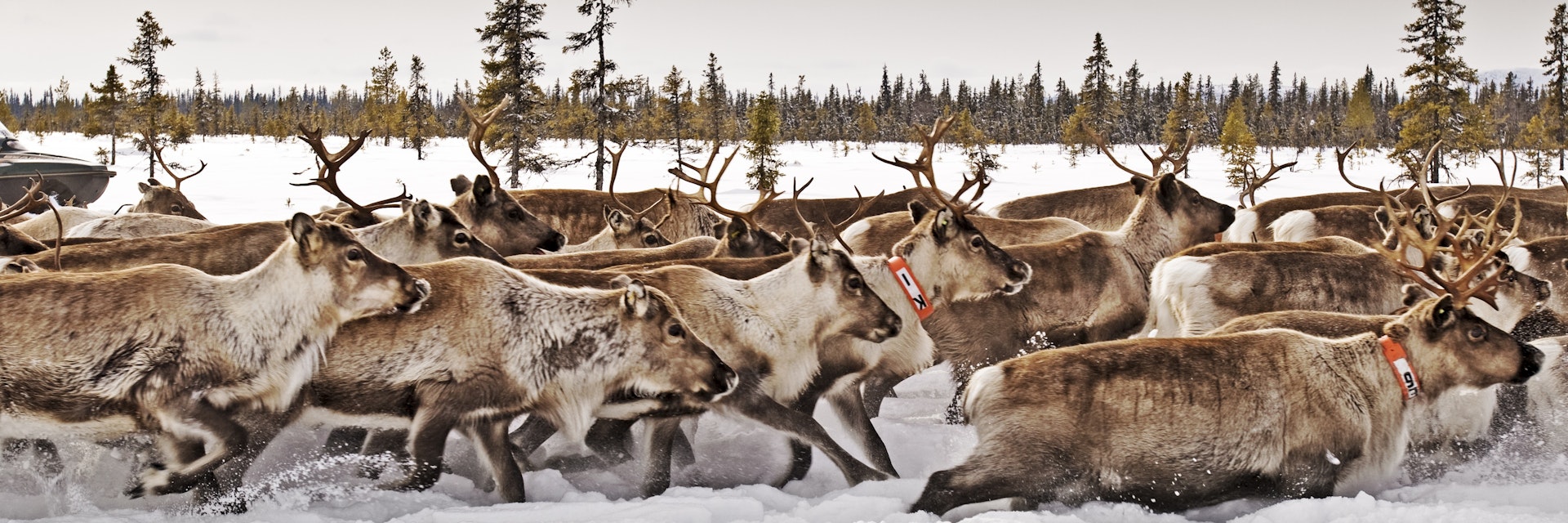
Gary Latham
Lappland is Europe’s last true wilderness. With a grand mountain range, endless forest and countless pristine lakes as your playground, it’s your chance to be a true explorer. Its great swathes of virgin land are dotted with reindeer – this is Sami country still, and your chance to delve into the reindeer herders’ centuries-old way of life.

Attractions
Must-see attractions.

Ájtte Museum
This illuminating museum is Sweden’s most thorough introduction to Sami culture. Follow the ‘spokes’ radiating from the central chamber, each dealing with…

Aurora Sky Station
Across the highway from the STF Turiststation, a chairlift takes you up Mt Nuolja (1164m), where you can enjoy epic views from the deck of the Panorama…

Silvermuseet
Housed in what used to be a nomad school, the tour de force at Arjeplog's Silvermuseet is the vast collection of Sami silver objects – the most extensive…

Båtsuoj Sami Camp
To experience the life of the forest Sami, visit Båtsuoj, where Tom and Lotta Svensson practise their traditional livelihood full time. You can watch the…

Laponia World Heritage Area
The World Heritage Area includes four national parks and two nature reserves within the districts of Jokkmokk and Gällivare. The magnificent Naturum…

Stensele Kyrka
Built in 1885, with seating for 2000 over two floors, Stensele Church is Sweden's biggest wooden church. A seat was provided for every man, woman and…

Atoklimpen (1006m), a monolithic, bare mountain 35km west of Tärnaby, has been regarded as holy by the Sami for centuries. Evidence of sacrificial sites…

The first church was built in Arvidsjaur in 1607, and church-attendance laws (urged by zealous priests and enforced by the monarchy) imposed a certain…
Latest stories from Lappland
Filter by interest:
- All Interests
- Adventure Travel
- Art & Culture
- Beaches, Coasts & Islands
- Food & Drink
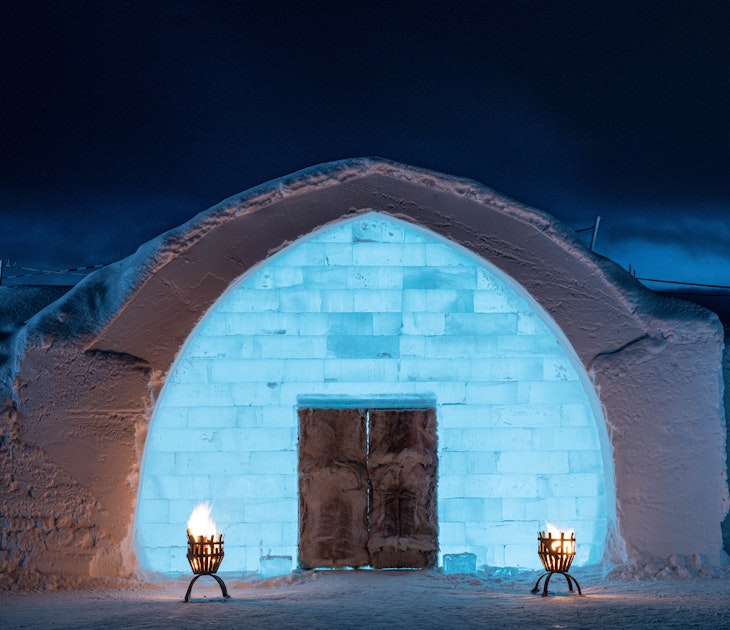
Dec 16, 2022 • 5 min read
Icehotel 33, this year’s edition of the hotel, promises winter adventures, northern lights and cocktails that are ice cold – literally.
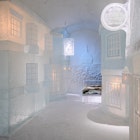
Dec 14, 2021 • 2 min read
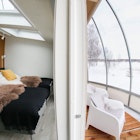
Oct 22, 2020 • 2 min read
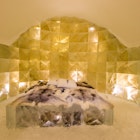
Dec 18, 2019 • 2 min read
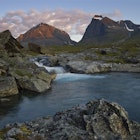
Sep 12, 2019 • 1 min read
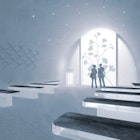
Sep 6, 2019 • 2 min read
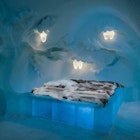
Dec 19, 2018 • 2 min read
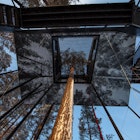
Apr 5, 2018 • 2 min read
Purchase our award-winning guidebooks
Get to the heart of Lappland with one of our in-depth, award-winning guidebooks, covering maps, itineraries, and expert guidance.
Lappland and beyond
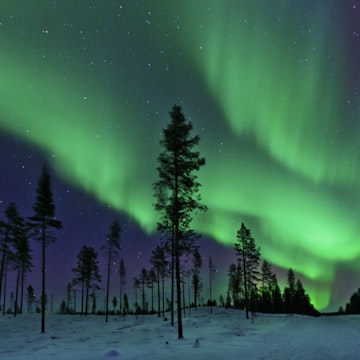
7 Reasons to Visit Swedish Lapland – the Arctic Paradise of Europe
02/08/2023 by Guest Blogger 1 Comment
This post was written by Sara Lindström, an adventure photographer based by the arctic circle in Sweden.
When hearing the word Lapland, most people tend to have their minds wander off to northern Finland . But did you know that a little further west, there’s a part of this enchanting arctic region with landscapes even wilder, even more dramatic?
Cross the national border and you’ll find yourself in Swedish Lapland, a place that will greet you with majestic mountains, old-growth forests, untamed rivers, a rich indigenous sami culture, world-class food and accommodation, and an army of local people passionate about sharing the magic of their home with visitors.
This is the place where I was born and bred, but like many young wanderlusters with a deep desire for new horizons, I took off out into the world as soon as I was done with high school. It wasn’t until a global pandemic forced me back home over a decade later that I finally took the time to truly start exploring this corner of the globe. Long story short, I fell head over heels in love with what I found.
Here are 7 reasons why you too should consider visiting this arctic paradise:
Table of Contents
1. Top place in the world to watch the northern lights
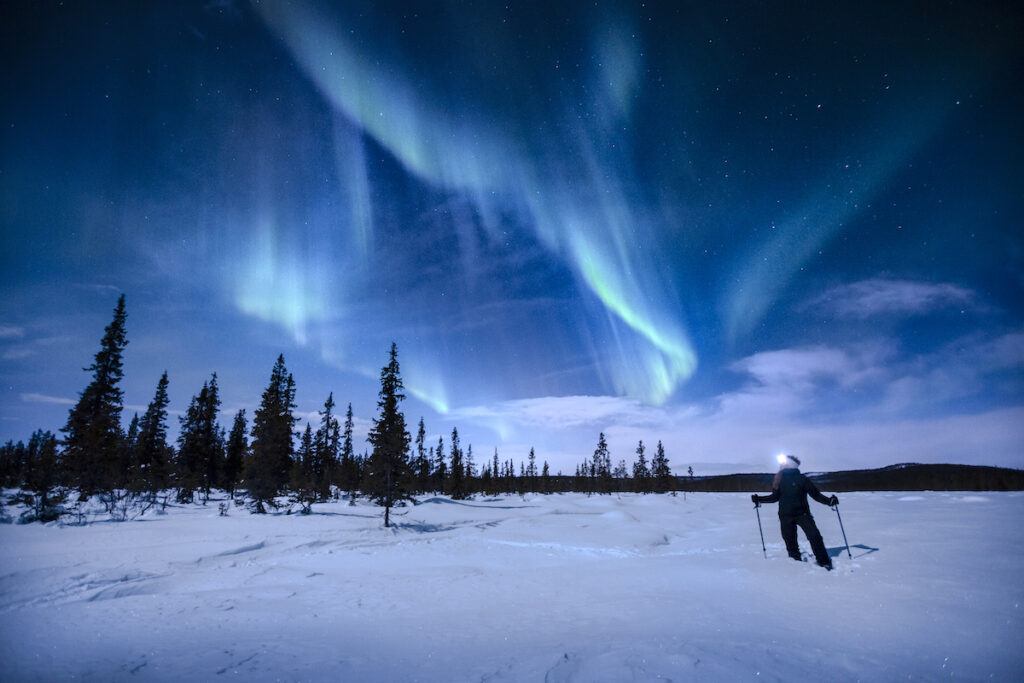
The aurora borealis didn’t end up on the bucket list of millions of people for no reason. Even for me, who grew up seeing this phenomenon on the night sky on a regular basis, it remains fully capable of blowing my mind.
Although its spellbinding dance can be witnessed all throughout northern Scandinavia, the tiny mountain village of Abisko – home to the Aurora Sky Station – is well known as one of the best places in the world to watch the northern lights. Why? Beacuse here you have some of the highest chances to find clear skies in winter, which, along with darkness, is the number one prerequisite for seeing them.
December to February is generally the best time to go due to the extra long nights, but it’s possible to spot them from around September to April, until the darkness eventually gets replaced by endless summer nights.
Book a northern lights tour here:
- Abisko: Small-Group Northern Lights Tour in Swedish Lapland , from $184.10
- The Longest Northern Lights Tour in Abisko with Dinner , from $188.28
- Kiruna: Northern Lights Tour with Dinner , from $208.32
- Northern Lights Photo Tour with a Professional Photographer , from $158.55
2. Midnight adventure in the sunshine
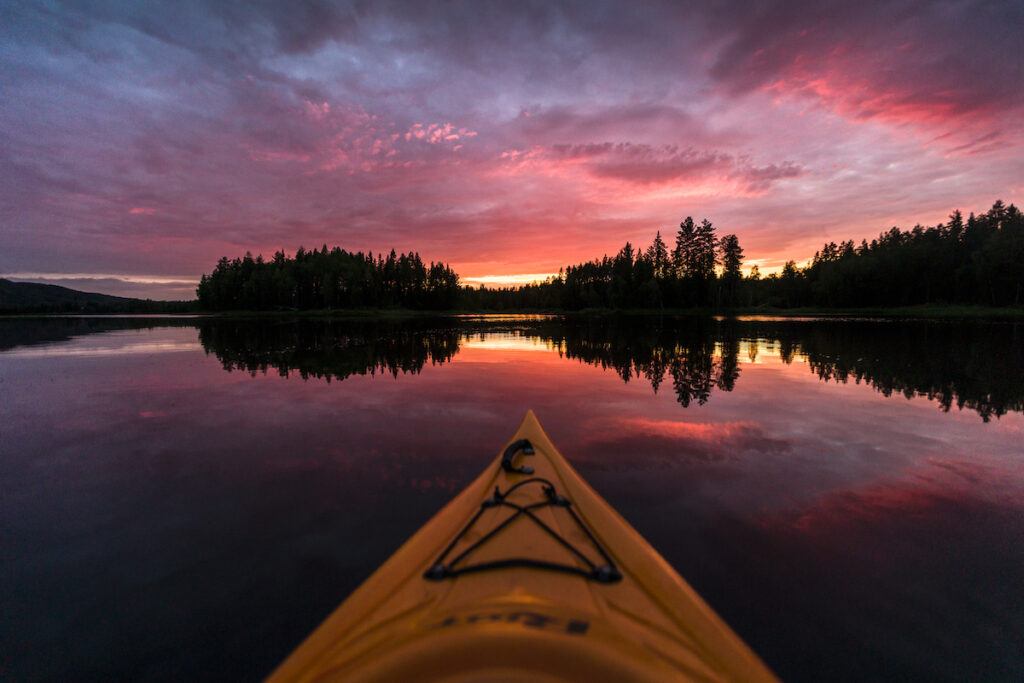
Imagine waking up at 4am and not being sure whether it’s morning or afternoon. In summer, Swedish Lapland is blessed with the gorgeous soft light of the midnight sun, making sunset and sunrise blend. You could start a hike at 8pm in the evening and return at 3am, with no need to bring a headlamp or worry about getting lost in the dark!
Another special thing to do is to rent a canoe or kayak , and go explore one of the countless lakes and rivers. Often late at night there is no wind, which could leave you floating on a spectacular mirror.
And don’t worry, once you’re finally ready for bed, most accommodation have thick blinders covering the windows to reassure you a good nights’ sleep, despite the never-ending daylight.
3. Food under an open sky
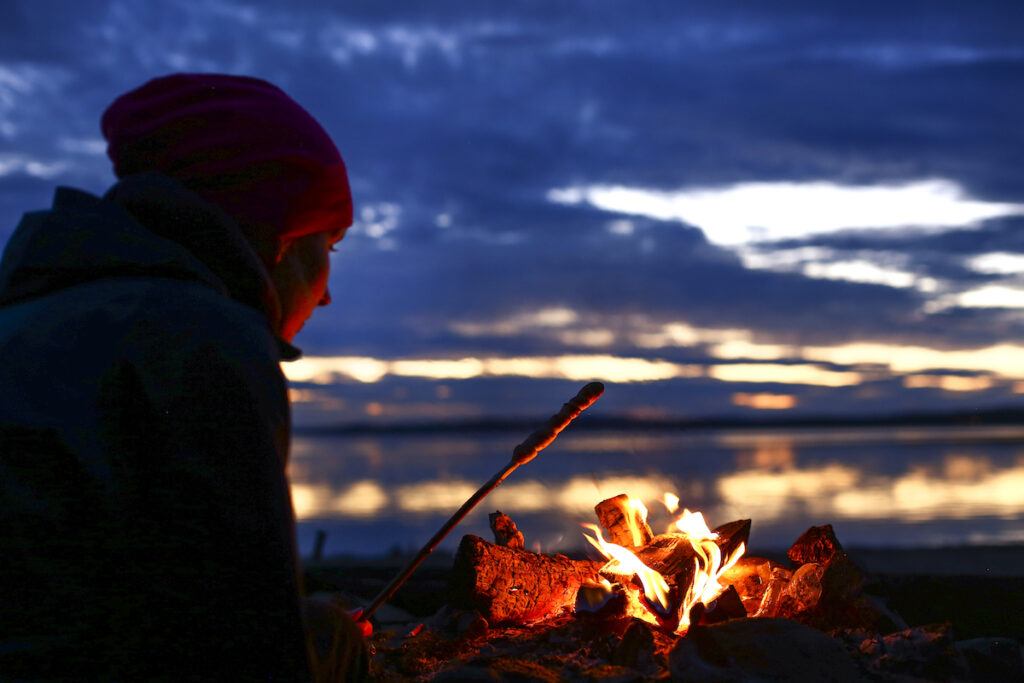
In Swedish Lapland eating out can mean two things; enjoying incredible food in many of the world class restaurants, or eating out by cooking over the fire, under an open sky.
Food rarely ever tastes as good as when its savoured in nature. In Sweden there is something that’s called “Allemansrätten” which basically means “Everyone’s freedom to roam”. Apart from hiking, picking berries, and pitching a tent pretty much anywhere in nature (on a respectful distance to private property owners AND in respect for nature), you’re also allowed to make your own fire.
End your meal with a classic “kokkaffe” and “fika” – coffee boiled over the fire and a sweet treat like a warm cinnamon roll – and the experience is complete.
This is such a common thing among locals to do on a weekend, and unless you have the equipment and want to try practice this “freedom to roam” thing yourself, many local tour operators happily organize this type of experience for you.
Another option is to join amazing forager and arctic flavour expert Eva Gunnare, founder of Essence of Lapland in Jokkmokk. She will take you on a fascinating guided tour through her own backyard to teach you everything about edible plants and berries in the wild north, before preparing an amazing meal based on your findings.
4. Mighty mountains
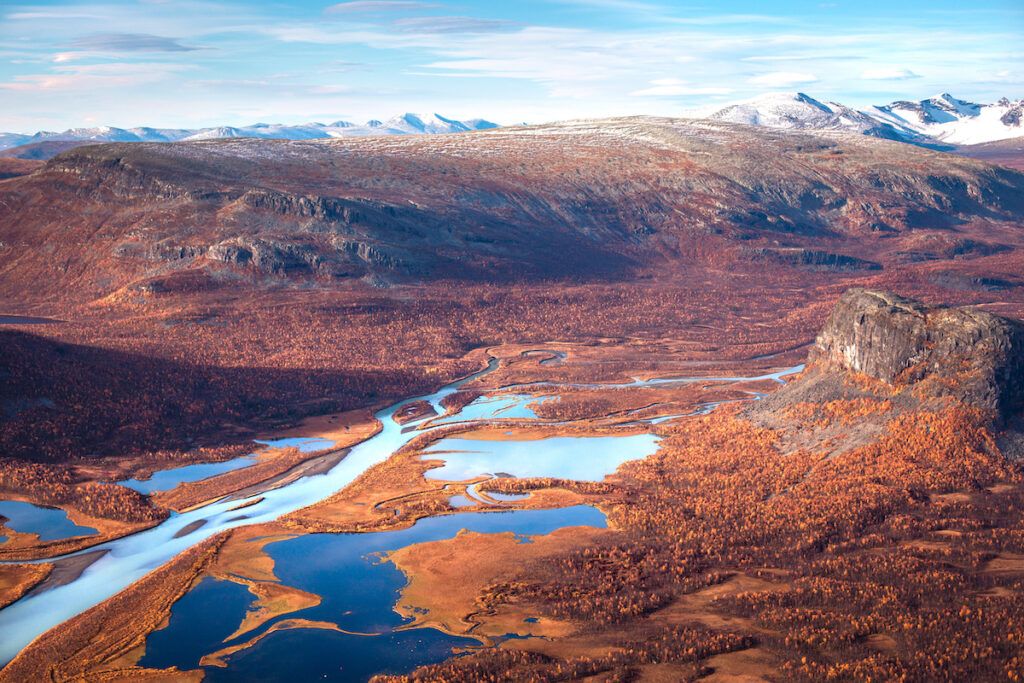
This is one of the things that really sets Swedish Lapland apart from it’s Finnish neighbour. Way out west, close to the border with Norway, you’ll find one of the last reminding true wilderness areas of Europe – a huge mountain chain with glaciated peaks that stretches hundres of miles from north to south.
This is a mecca for those who love the outdoors. In summer you can go hiking, horseback riding or mountain biking , and perhaps make use of the wide network of overnight cabins and huts along many of the major trails. In the snow-covered months you may want to go skiing, snowmobiling, join a multiday dogsledding expedition – or simply enjoy the breathtaking views from down the valley, with a cup of coffee.
Many of these mountains are remote and sometimes a bit tricky to get to without your own vehicle, but Abisko National Park is an exception with a train passing by daily , basically dropping you off by the start of the hiking trail. With numerable places to stay and restaurants to nibble on amazing local flavours, it has quickly become a popular spot for mountain lovers from all over the world.
5. Try cold bathing
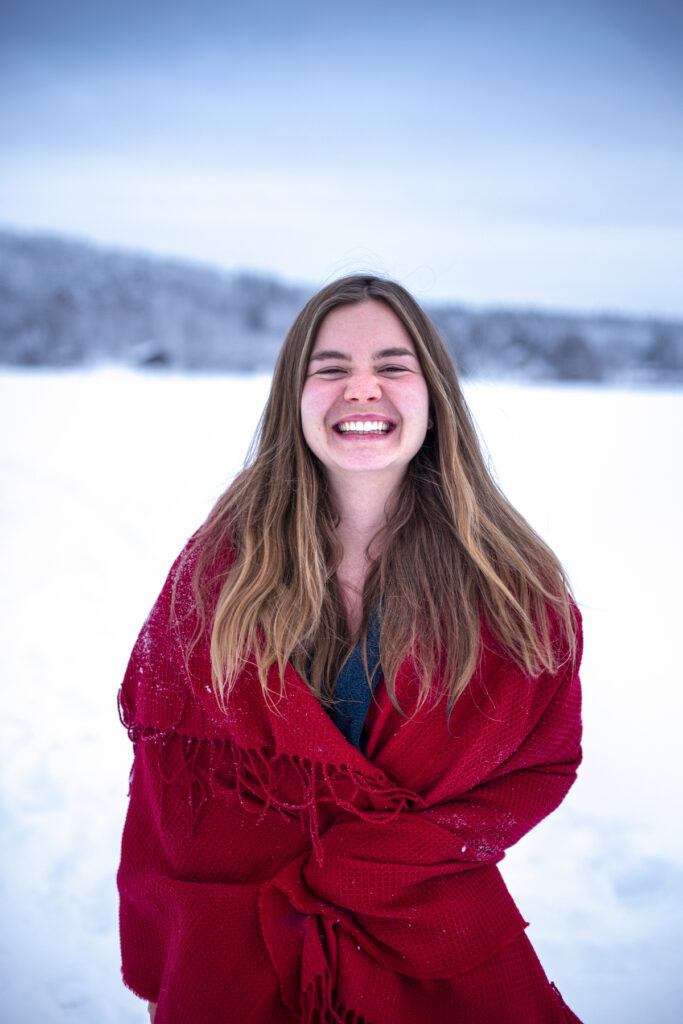
Cold baths are part of the history in this northernmost corner of Europe. And yes, sure, if you never tried your brain will desperately try to convince you it’s crazy and that you’ll freeze to death. As a seemingly logical response you will most likely find yourself either flat refuse to even get near the water, or to partly get in only to bounce back out in a fraction of a second. But the magic happens when you get in with a belief that this is in fact beneficial to you, and with an intention to stay in the water until you can breath calmly. Even just waiting 10 seconds before you head back up will bring you a rush of adrenaline and an amazing feeling of aliveness afterwards.
Being home to hundreds of thousands of lakes and rivers, Swedish Lapland is the perfect place for anyone looking to explore the many health benefits of cold plunging; like bringing relief to aching muscles and demanding your body and mind to slow down, but maybe most of all; stretching your belief in your own human potential.
Many lodges have a hole in the thick ice cut out and ready of you in winter, complete with stairs, towels, and a wood-heated sauna only a few steps away. In the village of Harads, you’ll even find a stunning floating spa hotel, called Arctic Bath . Here they have taken the experience to the next level by inviting you to try a cold bath in luxury.
6. Go on a safari with the “moose whisperer”
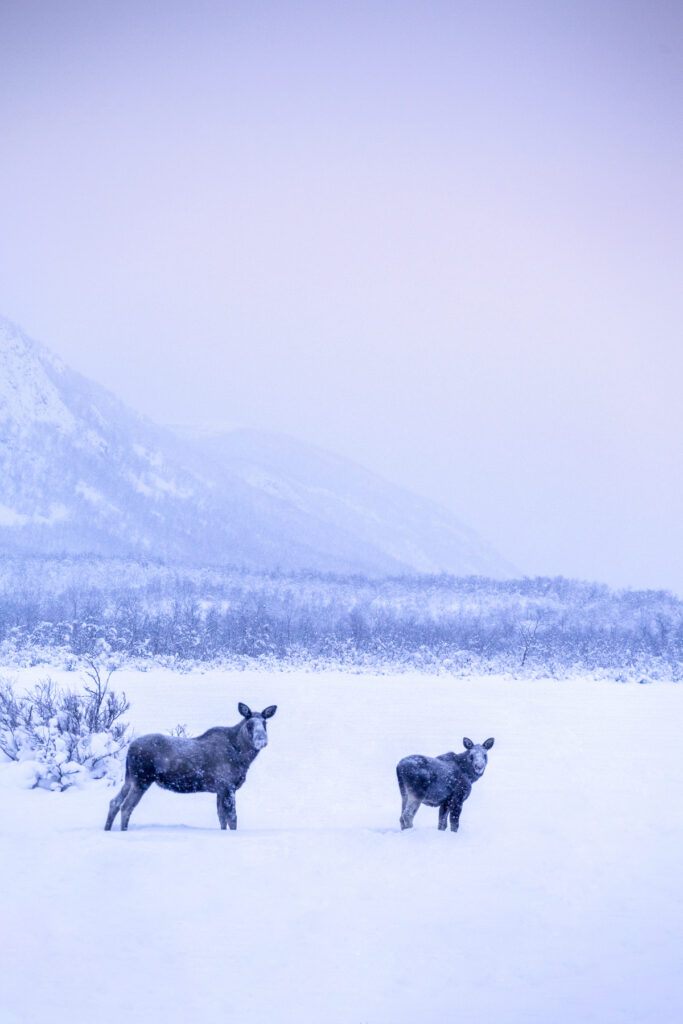
In a recent interview at The Ellen Show, Lily Collins spoke about her amusing experience doing exactly this, while she was staying at the famous Treehotel in Swedish Lapland on her honeymoon.
Although there is never any guarrantee with wildlife, “speaking moose” is a surprisingly efficient way to call this giant deer close. Micke, the owner of Hide & See near Boden is a true man of the wild and has been doing this for years. While previosuly using his skills to help local hunters, today he much more prefers to attract them to give his guests a memorable moment with these impressive creatures. And even if you’re not lucky, just hearing him immitate their sounds is an experience on its own!
If you’re around in summer, you can also stay in their cosy and comfy overnight nest for a good chance to get a glimpse of the shy brown bear.
7. Digital detoxing
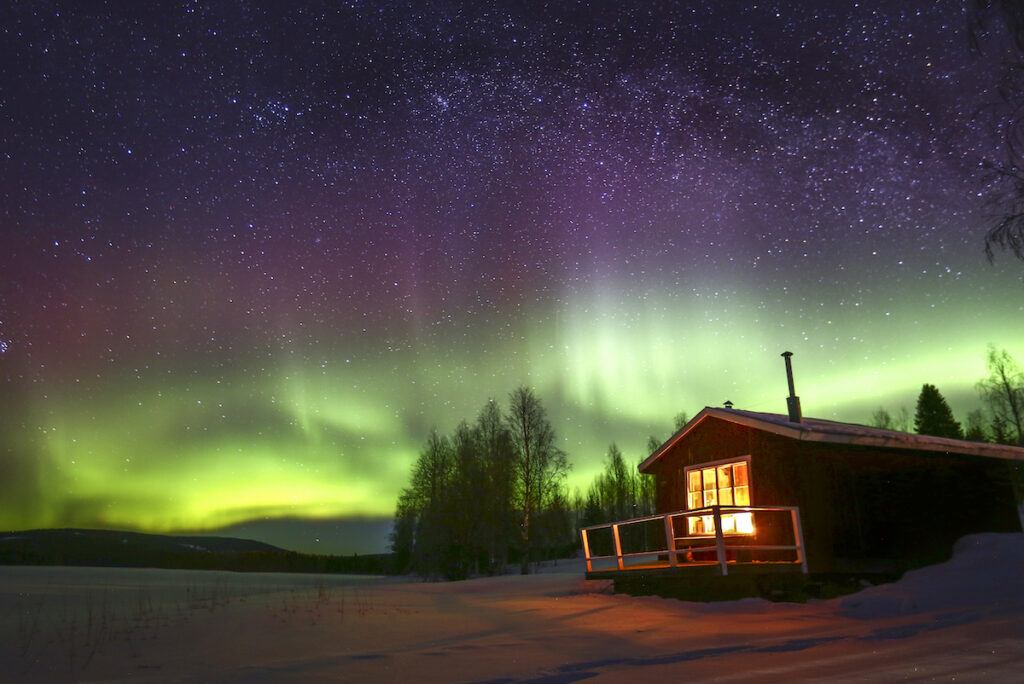
Last but not the least, in case you didn’t read it in between the lines, the wild north of arctic Sweden is the perfect place to go if you’re looking to simply disconnect from screens, notifications and the overall stresses of a busy everyday life.
Like, when was the last time you got still outside, sharpened your ears and heard absolutely nothing, apart from a soft breeze in the trees perhaps? Possibly frightening at first for a mind used to go 200 mph, but combined with prestine nature, silence is a true medicine for the soul and here you’ll find an abundance of it.
Even though many wilderness lodges and hotels offer a varying degree of peace and quite, it could be even more rejuvenating to go all in and claim some time totally alone in one of many remote cabins for rent on Airbnb. For an exotic mix of Lapland and Mongolia, make sure to check out Lapland Yurts – a unique Airbnb in the woods outside the small town Boden.
Regardless of what floats your boat, Swedish Lapland has something to offer for every visitor. You don’t have to be a total nature nerd to enjoy it – although you are highly unlikely to leave unaffected by the natural beauty of these untamed lands at the end of the European continent. Which one of my above recommendations intrigues you the most?
About the author: Sara Lindström is an award-winning professional travel & adventure photographer + retreat leader, based in the woods of arctic Sweden. Intense curiosity caused her to take the first trembling steps to start roaming the world solo at the tender age of 19. Since then she’s been collecting memories in over 60 countries on 6 continents, both for work and play. Follow her journey on Instagram .
Leave a Reply Cancel reply
Your email address will not be published. Required fields are marked *
Save my name, email, and website in this browser for the next time I comment.
subscribe to our newsletter
This site uses Akismet to reduce spam. Learn how your comment data is processed .
02/08/2023 at 10:38 pm
The aurora borealis is truly magical. It feels like being a prince or a princess with a castle in the middle of a snowy paradise. Oh yeah, I remember it seems like there is no total nighttime because the sun seems not to set, am I right? “silence is a true medicine for the soul” – yes! More blogs to come! Cheers!
Swedish Lapland’s national parks
Book your individual trip , stress-free with local travel experts
- roughguides.com
- swedish-lapland
- swedish-laplands-national-parks
- Travel guide
- Itineraries
- Travel Advice
- Accommodation
Plan your tailor-made trip with a local expert
Book securely with money-back guarantee
Travel stress-free with local assistance and 24/7 support
It’s not a good idea to go hiking in the national parks of northern Sweden (w sverigesnationalparker.se ) on a whim. Even for experienced walkers, the going can be tough and uncomfortable in parts, downright treacherous in others. The best time to hike is from late June to September: during May and early June the ground is still very wet and boggy as a result of the rapid snow melt. Once the snow has gone, wild flowers burst into bloom, making the most of the short summer months. The weather is very changeable – one moment it can be hot and sunny, the next cold and rainy – and snow showers are not uncommon in summer. Hiking trails range in difficulty from moderately challenging to a positive assault course.
The Laponia World Heritage Area
Muddus national park.
Mosquitoes are a real problem: it’s difficult to describe the utter misery of being covered in a blanket of insects, your eyes, ears and nose full of the creatures. Yet the beautiful landscape here is one of the last wilderness areas left in Europe – it’s one vast expanse of forest and mountains, where roads and human habitation are the exception rather than the norm. Reindeer are a common sight, as the parks are their breeding grounds and summer pasture, and Sámi settlements are dotted throughout the region – notably at Ritsem and Vaisaluokta .
Four of Swedish Lapland's parks lie about 120km northwest of Gällivare in the tract of Swedish wilderness edging Norway: the low fells, large lakes and moors of Padjelanta , Stora Sjöfallet and Abisko parks act as the eyebrows to the sheer face of the mountainous Sarek park. Easy Muddus national park lies between Gällivare and Jokkmookk, while Pieljekaise national park lies just south of the Arctic Circle, southwest of Jokkmokk.
“It is one of the last and unquestionably largest and best preserved examples of an area of transhumance, involving summer grazing by large reindeer herds”, said the UNESCO World Heritage Committee when they established Laponia as a heritage area in 1996. Covering a vast area of 9400 square kilometres, including the Padjelanta, Sarek and Stora Sjöfallet national parks , Laponia is the home and workplace of forest and mountain Sámi families from seven different villages, who still tend their reindeer here much as their ancestors did in prehistoric times. The forest Sámi move with their herds within the forests and the mountain Sámi follow their animals from the lichen-rich forests, where they spend the winter, up to the tree line by the time spring comes, then on into the mountains for summer; in August they start making their way down. Come September, many animals will be slaughtered either at the corrals in Ruokto, on the road between Porjus and Kebnats, or at highland corrals between Ritsem and Sitasjaure.
Recommended for novice hikers, Muddus national park is a 500-square-kilometre pine-forested and marshland park between Jokkmokk and Gällivare, hemmed in by the Inlandsbanan on one side and the train line from Luleå to Gällivare on the other. Muddus is home to bears, lynx, martens, weasels, hares, elk and (in summer), also reindeer; among birds, the whooper swan is one of the most common sights. The terrain here is gently undulating, consisting of bog and forest, though there are clefts and gorges in the southern stretches.
The park’s western edges run parallel to Route 45; the easiest approach is to leave the highway at Liggadammen (there are also buses here from Gällivare) and then follow the small road to Skaite , where an easy hiking trail begins; two suggested routes are Skaite–Muddusfallet–Måskoskårså–Skaite (24km) or Skaite–Muttosluobbal–Manson–Skaite (44km). There are cabins along both routes (open April–Sept; at other times the keys can be obtained from Jokkmokk and Gällivare tourist offices), and a campsite at Muddus Falls. There are no outlets for buying food or provisions en route.
Padjelanta is the largest of Sweden’s national parks; its name comes from Sámi and means “the higher country”, an apt description for this plateau that lies almost exclusively above the tree line. The Padjelanta trail (150km) runs from Vaisaluokta through the Laponia World Heritage Area south to Kvikkjokk , and is suited to inexperienced walkers – allow at least a week to finish it.
Discover more places in Sweden

- Travel Guide Morocco
- Travel Guide Namibia
- Travel Guide South Africa
- Travel Guide China
- Travel Guide India
- Travel Guide Indonesia
- Travel Guide Japan
- Travel Guide Laos
- Travel Guide Malaysia
- Travel Guide Myanmar (Burma)
- Travel Guide Nepal
- Travel Guide Philippines
- Travel Guide Singapore
- Travel Guide South Korea
- Travel Guide Sri Lanka
- Travel Guide Taiwan
- Travel Guide Thailand
- Travel Guide Australia
- Travel Guide Fiji
- Travel Guide New Zealand
- Travel Guide Belize
- Costa Rica Travel Guide
- Travel Guide Cuba
- Travel Guide Guatemala
- Travel Guide Honduras
- Travel Guide Jamaica
- Travel Guide Nicaragua
- Travel Guide Panama
- Travel Guide Puerto Rico
- Travel Guide Trinidad and Tobago
- Travel Guide Albania
- Travel Guide Austria
- Travel Guide Belgium
- Travel Guide Bosnia-Herzegovina
- Travel Guide Bulgaria
- Travel Guide Cyprus
- Travel Guide Czechia (Czech Republic)
- Travel Guide Denmark
- Travel Guide England
- Travel Guide Estonia
- Travel Guide Finland
- Travel Guide France
- Travel Guide Germany
- Travel Guide Greece
- Travel Guide Hungary
- Iceland Travel Guide
The Rough Guides to Sweden and related travel guides
In-depth, easy-to-use travel guides filled with expert advice.

Find even more inspiration here

Planning your own trip? Prepare for your trip
Use Rough Guides' trusted partners for great rates
- National Parks & Reserves
written by Rough Guides Editors
updated 26.04.2021
Ready to travel and discover Sweden?
Get support from our local experts for stress-free planning & worry-free travels.
- Where to stay
- Travel advice
- Skip to primary navigation
- Skip to main content
- Skip to primary sidebar
- Skip to footer
TravelAwaits
Our mission is to serve the 50+ traveler who's ready to cross a few items off their bucket list.
What Is Swedish Lapland? Everything You Need To Know About Mysig And More

Bildagentur Zoonar GmbH / Shutterstock
- Activities and Interests
- Adventure Travel
- Bucket List Trips
- Destinations
- History and Culture
- Outdoor Activities
- Seasonal Travel
- Types of Travel
If you want to run with the bulls, you go to Pamplona. And if you want comfort in the Arctic ( mysig , they call it; more about that soon), head to the Swedish Lapland. This undiscovered country is full of adventures — wilderness to explore, Arctic cuisine to taste, reindeer herders to talk to — and the northern lights.

Swedish Lapland Visitors Board
Here’s what you need to know about the Swedish Lapland to start planning your next adventure, mysig guaranteed.

The Swedish Lapland Has 8 Seasons
Europe’s only indigenous people, the Sami, have called the Lapland region home for centuries. And the Sami recognize eight distinct seasons — a crucial distinction for a people who live in close harmony with nature. Many Swedes in the Lapland have adopted this understanding, too.
The four additional seasons recognized in Lapland lay in between the four seasons we’re familiar with, so don’t be surprised to hear terms like Spring-Winter , or “gidadalvve” in one Sami dialect, and Summer-Autumn , or “tjaktjagiesse” in another dialect, when conversing with the locals.
By the way, you should be able to get by just fine with English; about 86 percent of Swedes speak some English, so while it’s always a good idea to learn some basic phrases in the language of your destination, you probably won’t need Swedish proficiency to get by and enjoy a Lapland vacation.

Tsuguliev / Shutterstock
The Lapland Is Isolated, And That’s A Good Thing
The Swedish Lapland’s extreme isolation is one of its greatest appeals. While the Lapland region itself stretches across Norway, Finland, and Russia, in addition to Sweden, Lappland (double p) is the Swedish province in the nation’s extreme north.
The Swedish Lapland Visitors Board makes this distant region accessible, however. Fly via one of a handful of carriers into Lulea or Kiruna, the two major airports located in Swedish Lapland. While you’ll probably fly into the region, once you’re there you can explore by train — and there’s plenty of mysig to be had onboard. One popular route runs between Lulea and Kiruna; it’s a great way to experience a taste of everything this remote region has to offer.

Elena E / Shutterstock
Coziness (Or Mysig) Is A Big Deal
Mysig is the new hygge . That latter concept — from Denmark –practically took over the internet in 2016. It must have been winter.
In any case, you might remember hygge : Fluffy socks and steaming mugs of tea, wool sweaters and lovers curled by the fire. As Oxford has it, hygge is “a quality of cosiness and comfortable conviviality that engenders a feeling of contentment or well-being.”
It stands to reason that if you travel north of Denmark to Sweden’s northernmost edges — literally in the Arctic Circle — something like hygge will become a survival strategy. Enter mysig, the Swedish concept of coziness. The Straits Times calls mysig “a Swedish term for the feeling of wanting to be warm and cosy, eat good food, and enjoy good conversation.”
So, how can you enjoy mysig during your trip? Well…

CatchaSnap / Shutterstock
Coffee Breaks Are A Way Of Life
Fika is closely linked to mysig , and it’s a great entry point for understanding both concepts. It refers to a coffee break (or a tea break, if that’s more your speed), enjoyed with a fresh-baked pastry in a cozy setting. During fika , you contemplate life, relax, and take in the moment.
While you’d be forgiven for confusing fika with a simple coffee break, the Swedes don’t think of it that way. They prefer not to translate the word , as fika is an important national tradition. Fika typically lasts for 10 to 30 minutes, and tourists are encouraged to partake. Visit a coffeehouse or restaurant around 10 a.m. or 3 p.m to enjoy this social institution.

Kuznetsova Julia / Shutterstock
Yes, You Can See The Northern Lights
Swedish Lapland boasts some of the best views of the aurora borealis, that is, the northern lights. The lights are most visible September through March (True Autumn through True Winter), though it’s not guaranteed you’ll see the phenomenon when visiting.
The Aurora Sky Station in Abisko National Park has been called the best place in the world to watch the northern lights, but just about anywhere in Lapland would be an ideal setting. This magical sight is truly breathtaking to witness, so be sure to keep your eyes peeled and make time to focus on the sky.

The Lodgings Are Straight Out Of Fairy Tales
Forget the roadside motel. The Swedish Lapland offers accommodations that you have to see to believe. There’s the world-famous ICEHOTEL , for instance. Artists rebuild rooms out of ice and snow from the nearby Torne River every winter. There’s also a permanent building for warmer months.
If sleeping on a bed of ice isn’t for you, try Treehotel . Guest rooms are built into the pine trees of the Northern Swedish forest, and they are a sight to behold. The Mirrorcube structure is particularly enthralling; its mirrored exterior blends seamlessly with the surroundings, like sleeping in an invisible fortress.

Roberto Fera / Shutterstock
It Offers Your Best Chance To Travel By Dog Sled
Dog sledding is a major part of life in the Swedish Lapland. Some area populations list more sled dogs than people !
Get to know these hardworking pups by booking a short trip at any one of the area’s ski resorts. Longer experiences are also available; some guides even take visitors on multi-day tours with pre-planned stops at log cabins.

It’s Great To Visit Any Time Of Year
So when should you travel to Swedish Lapland? That depends on what you want out of your journey. Northern lights chasers should visit for as long as possible between September and late March.
If experiencing the extraordinary landscape is your goal — whether you plan to hike, drive, or ride the train — responsible travel agency Jacada recommends arriving in June, July, or August. And for the iciest, snowiest, winteriest getaway of your life, head to the region from December to March — and prepare for the full mysig experience!
If you’re heart’s set on seeing the northern lights, it’s time to consider these 10 hotels with northern lights views . Or, if you’re in it for the adorable animals, read up on nine places to see reindeer in the wild (including Swedish Lapland, of course).

Brian Thomas is a professional writer with over 15 years of experience. He’s traveled extensively during that time, frequently touring the American Southwest as both a musician and a tourist. In 2019, he visited Japan and Mexico, and he’s become passionate about spreading a simple message: Traveling isn't necessarily expensive, and it's one of the best paths to self-improvement.
National Geographic content straight to your inbox—sign up for our popular newsletters here
Three Reasons to Visit Swedish Lapland
If you’ve got “See the northern lights” on your bucket list, you may want to start planning a trip to Swedish Lapland later this year because your chances of catching the aurora borealis are pretty high. NASA is predicting that the strongest solar explosions of the last decade (called “ solar maximums ”) will happen this fall and winter.
But that’s just one of many reasons to explore the region. Here are three stories that capture why I love coming here:
Chasing the northern lights
“This is incredible,” said Peter Rosén as he trudged through calf-deep snow to join his students — Henrik, Yvonne, Una, and me. We were close to the top of Mount Nuolja with our cameras trained on the sky, which was alive with twinkling stars and dancing ribbons of green light. Peter had positioned his tripod directly behind the Aurora Sky Station and was recording a time lapse of the aurora borealis swirling and folding over Abisko National Park , Lapporten , and Lake Torneträsk .
“The last few days have been incredible,” he repeated, his eyes shimmering in the moonlight. “I couldn’t have asked for more.” Peter’s energy and excitement were infectious. Even though he has been professionally photographing the northern lights in Swedish Lapland since 1999 and is a local legend around these parts, he seemed to welcome every display with fresh, appreciative eyes.
These natural phenomena are wildly unpredictable, but chasing the lights with Peter meant that we were able to avoid tourists, head deeper into the wilderness around Kiruna and Jukkasjärvi , set our own schedule in terms of where and how long we wanted to photograph, and find the clearest views.
Soaking up Sámi culture
“We don’t herd the reindeer. They herd us,” said Sámi elder Anders Kärrstedt . At that moment I began to understand the deep intrinsic connection between the Sámi and the great antlered beasts before us.
We were chatting in one of Nutti Sami Siida ’s rustic lodges. Its rooms are minimalist, with drinking water in a jug and sleeping bags and a small wood-burning fireplace to keep you warm. The toilet is an outhouse where you have to switch the water pump on and off to wash your hands. Yet these amenities seemed more than adequate — if not unnecessary — in the rustic and ethereal Sápmi landscape.
The Sámi are an indigenous people who live in parts of Norway, Sweden, Finland, and the Russian Kola peninsula (collectively known as the Sápmi region). About a third of the total population of 70,000 resides in Swedish Lapland. And while the reindeer has remained a strong symbol of their culture, it by no means defines it.
Our group would be trying out the centuries-old Sámi tradition of reindeer sledding . A few meters away from us, 28-year-old Jakob Cederang was busy feeding about 100 reindeer. Thousands more were deep within the tundra between Norway and Sweden. Our guides (who happen to be brothers), Nils and Per-Anders Nutti, helped us pick strong male reindeer from the group, then showed us how to gently yet sternly guide them through the boreal forests and frozen lakes.
Running with the huskies
“We met online,” Matti Holmgren openly shared with our group as we roasted sausages over the fire. We were sitting in a Tentipi near a very frozen Lake Skabram just outside the small town of Jokkmokk. “She fell in love with the outdoors, too,” he continued.
- Nat Geo Expeditions
Matti had moved north from central Sweden to study ecology, but his passion for the outdoors kept him in Swedish Lapland. He started training his first Siberian husky in 1994, a year before launching his adventure company. When they started dating, Stina Svensson had never been to Lapland. But after her first trip, she was smitten with both Matti and the landscape. She moved in with Matti in 2004 and they’ve been partners — in life and at Jokkmokkguiderna — ever since.
These days, they’re up to about 40 Siberian huskies and run one of the coolest year-round routes in Lapland, including multi-day camping trips through spectacular Padjelanta and Sarek national parks in Laponia . Top race dogs can run up to 250 kilometers in 24 hours, but Matti and Stina mostly raise working dogs which they use for expeditions and tours — with a few long-distance races thrown in for good measure. “It feels like I have found a home here,” Stina said.
Lola Akinmade Åkerström is a Stockholm-based photographer and writer who contributes to National Geographic Traveler and other travel publications. See more of her photography from Lapland and follow her story on Twitter @LolaAkinmade .
- Go on an Aurora Photo Adventures expedition with Peter
- Go exploring with Matti, Stina, and their huskies
- Check out Nutti Sámi Siida’s reindeer lodge and sledding activities
FREE BONUS ISSUE
Related topics.
- NATIONAL PARKS
- EXPLORATION
- CARIBOU (REINDEER)
- Environment
- Perpetual Planet
History & Culture
- History & Culture
- History Magazine
- Mind, Body, Wonder
- Paid Content
- Terms of Use
- Privacy Policy
- Your US State Privacy Rights
- Children's Online Privacy Policy
- Interest-Based Ads
- About Nielsen Measurement
- Do Not Sell or Share My Personal Information
- Nat Geo Home
- Attend a Live Event
- Book a Trip
- Inspire Your Kids
- Shop Nat Geo
- Visit the D.C. Museum
- Learn About Our Impact
- Support Our Mission
- Advertise With Us
- Customer Service
- Renew Subscription
- Manage Your Subscription
- Work at Nat Geo
- Sign Up for Our Newsletters
- Contribute to Protect the Planet
Copyright © 1996-2015 National Geographic Society Copyright © 2015-2024 National Geographic Partners, LLC. All rights reserved

How to get to Lapland: the best way to travel
This post is all about how to get to Lapland. A dream destination for those wishing to visit some of Europe’s most remote and wild spots as well as for those trying to see the northern lights.
How to get to Lapland sounds like an easy question. The answer is more complicated though, because Lapland is actusally not a country. It’s a region above the arctic circle that spans from northern Norway over Sweden, Finland and even parts of Russia.
All together it is a pretty large area that is sparsely populated due to its extreme climate. Traditionally, the indigenous Sami people used to roam these lands freely as nomads with their reindeer herds. Nowadays borders have defined them to be citizens of a certain country.

Where to go in Lapland
Lapland is thus a huge and varied region and the question of how to get to Lapland can only be answered when you know where you want to go in Lapland.
There are some direct flights to Lapland, but travelling by train is more sustainable. Most journeys to Lapland often starts in the capitals of either Norway, Sweden, Finland or Russia. From there it is a long, but spectacular journey to reach the far northern fringes that belong to Lapland.
All of them offer pristine nature with tundra, endless forests and lakes as well as a chance to learn about Sami culture and food . However, there are differences in the available tourism infrastructure, the prices and how easy it is to get there. I will elaborate on these issues below.
I personally visited both Lapland in Russia during wintertime and Swedish Lapland in autumn .

How to get to Lapland in Finland
When people think of Lapland they often refer to Finnish Lapland and the Santa Clause village of Rovaniemi. With its popularity come excellent tourist facilities and activities. Think a snow village, ice hotels, reindeer safari’s, dog sledding, snowmobiling, ski resorts and saunas. Finland is one of the more expensive lapland destinations though, so budget accordingly.
Any journey to Finnish Lapland will start in Helsinki. The most popular destinations in Finnish Lapland are Rovaniemi, Ivalo and Inari.
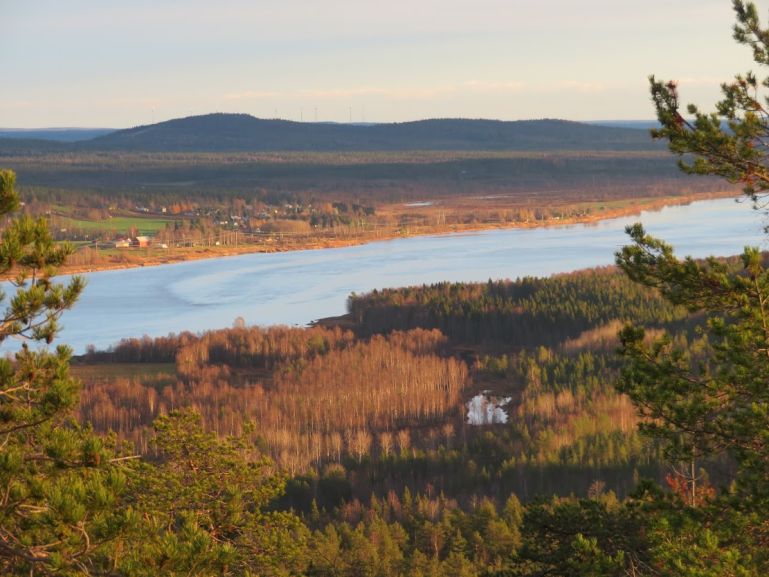
Helsinki to Rovaniemi
Rovaniemi is known as the Santa Claus village and is about 800 kilometers from Helsinki. You can fly from Helsinki to Rovaniemi in less than 2 hours for around 100 USD or take the train.
The most convenient is the Santa Claus express night train that brings you to Rovaniemi in 12 hours with sleeper beds starting from 50 euro onwards. There are also 3 daytime trains that take between 8 and 9 hours.
After Rovaniemi the train continues to Kemijarvi. Another beautiful destination in the forests of Lapland.
You can check the latest train schedules and prices on the website of the Finnish railway where you can also book your tickets.
Helsinki to Ivalo and Inari
Inari is the northernmost town in Finland and is almost 1200 kilometers north of Helsinki. Therefore it is a great place to see the northern lights. It also has a scenic location on Lake Inari, one of the largest lakes in Lapland. Ivalo lies south of Inari and is close to several national parks.
To get from Helsinki to Ivalo and Inari one can either fly to Ivalo and then take a bus to Inari or take a combination of train and bus. If you choose the train option you need to take the train to Rovaniemi. From Rovaniemi there are buses to Ivalo and Inari.

How to get to Lapland in Sweden
Swedish Lapland is in my opinion one of the best countries to explore Lapland. It’s slightly cheaper than neighbouring Finland and Norway, but with excellent facilities and a great variety of things to do.
In summer Swedish Lapland is a hikers paradise with long distance trails such as the Kungsleden or Padjelantaleden that go through mountainous terrain or plenty of shorter well marked trails through forests and national parks. In winter you can see the northern lights, go dog sledding, snowmobiling or stay in an ice hotel.
Sweden has it all and it’s also easily accessible from Stockholm. The most popular destinations in Swedish Lapland are Lulea , Jokkmokk , Kiruna and Abisko.

Stockholm to Lulea
Lulea lies on the Bothnian coast, 900 kilometers north of Stockholm. It is a nice town with nature on its doorsteps. Nearby is the famous tree hotel in Harads and you could spend weeks exploring the islands in the Lulea Archipelago. Accessible by ferry in summer and by an ice road over the sea in winter.
Getting from Stockholm to Lulea is easy. You can either fly directly to Lulea for around 120 usd (2 hours) or take the direct night train (14 hours, from 60 USD onwards). There are also day time trains if you would like to see the scenery.
You can check the latest train time tables and prices on the website of the Swedish railways where you can also book your tickets.

Stockholm to Jokkmokk
Jokkmokk is the cultural capital of the Sami people in Sweden and a great place to learn more about Sami culture. The nearest airport is Gallivare or Lulea. From there you can take a bus to Jokkmokk.
Jokkmokk doesn’t have a train station, but you can take the night train from Stockholm to Murjek where a bus to Jokkmokk connects with the train.
Stockholm to Kiruna and Abisko.
Kiruna lies more than 1200 kilometer north of Stockholm. It is the seat of the Swedish Sami Parliament and the largest city in Swedish Lapland. It is also one of the most popular winter destinations in Sweden. Nearby is the ice hotel in Jukkasjarvi and Abisko National Park, one of the best places in Scandinavia to see the Northern lights.
Kiruna is easy to reach by flight for around 200 USD (1.5 hours). There is a direct night train from Stockholm to Kiruna (14 hours) as well that goes on to Abisko and even Narvik in Norway. If you fly into Kiruna there are day trains and buses to Abisko (1.5 hours).

How to get to Lapland in Norway
Norway’s Lapland is far north of the Arctic circle. The biggest city, Tromso, is more than 1800 kilometers north of Oslo and it is quite a journey to get there. It is a multiple day trip by car and there are no direct trains either. In fact, it is faster to travel through Sweden to reach the Norwegian parts of Lapland.
What is unique to Norwegian lapland is that it borders the Barentz sea and that its coastline is characterized by the beautiful fjords that Norway is famous for. That makes the effort to get this far north more than worth it.
The main destination is Tromso. A city that has all the facilities you would like to have and that serves as a gateway to Norwegian lapland. Tromso is at sea so, besides the usual winter activities you can also go whale watching, taking cruises into the fjords and polar fishing among others.
Beyond Tromso there is not much, but some small towns and spectacular arctic landscapes. You might want to visit Alta, the northern lights city where you can sleep in an igloo or Honningsvag to visit the nordkapp.
Norwegian Lapland has lots to offer, but it is also the most expensive place to see Lapland,
Oslo to Tromso
The easiest and fastest way to reach Tromso is by flight. Prices vary a lot, but there are some pretty good deals out there. Tromso is also an international airport so there might be direct flights from your home country.
By train, bus or car from Oslo you are looking at a multiple day journey that is much faster through Sweden. Norwegian trains do not go further north than Bodo. This is an 18 hour journey with a change in Trondheim.
Bodo is still more than 500 kilometers south of Tromso. From Bodo there are no direct buses. You will have to take a bus to Narvik (6 hours) and then a bus to Tromso (4 hours).
If opting to travel by train it is actually much faster and cheaper to travel from Sweden by taking the direct SJ nighttrain from Malmo or Stockholm to Narvik (19 hours, 70 USD onwards).
If money is no problem, you can also take the famous hurtigruten cruise that goes along the fjords up north. This is one of the most scenic ways to travel up to Lapland.
Tromso to Alta and the Nordkapp
If you want to travel to Alta or the Nordkapp it’s best to do so from Tromso. Alta does have an airport, but flights are more expensive. From Tromso you can travel by bus to Alta and Honningsvag (gateway to the Nordkapp).
The touristic bus company Arctic route connects Tromso with Alta and other destinations in Lapland including Kiruna, Lulea and Rovaniemi making stops along the way that are of interest to tourists.

How to get to Lapland in Russia
Due to the current situation, I advice against travel to Russia at the moment. All affiliated links related to Russia have been removed.
Few people know that Lapland even stretches into Russia. Russia’s remote Kola Peninsula has few tourist facilities, but it is one of the cheapest places to explore Lapland. Once you get your Russian visa it isn’t even that difficult to get there.
Murmansk is the biggest city in the Kola peninsula and the only place where you find facilities like hotels, restaurants and tour agencies that can organize all kinds of arctic activities for you.

Moscow or St Petersburg to Murmansk
If you are planning a trip to Russian lapland it is best to start your journey in St Petersburg or Moscow . From both places you can fly directly to Murmansk for around 50 USD or take the train to Murmansk.
If you take the train it makes more sense to start in St Petersburg. The Arktika express train brings you from St Petersburg to Murmansk in 24 hours. This sounds like a long time, but it is a very scenic journey.
It’s easy to book your train tickets online through the Russian Railways where you can also check the latest time tables and prices. If this doesn’t work out you can also use a travel agency like tutu travel or Realrussia , but the fares might be slightly higher.

Disclaimer : This post about how to get to Lapland contains affiliate links. If you buy any service through any of my links, I will get a small commission at no extra cost to you. These earnings help me to keep Backpack Adventures alive! Thanks for your support!

1 thought on “How to get to Lapland: the best way to travel”
I am heading to lapland in February. Really can’t wait, thank you for this article. This area looks lovely and the camping.
Leave a Reply Cancel reply
Your email address will not be published. Required fields are marked *
- Kale by LyraThemes.com.

Explore Swedish Lapland
We will bring the untouched world of the Arctic closer to your heart than ever before.

Being outdoors is a natural part of the Arctic lifestyle, and during winter – skiing is the way to go.

Scandinavian design in the middle of untouched nature.

– Welcome to Luleå Travel –
Luleå Travel is a travel agency located in Luleå – Swedish Lapland and your contact for travelling into the most Northern part of Sweden. We offer attractive Winter and Summer programs in the land of the Northern lights and the Midnight Sun. Both for private travellers as for corporate events . Check out our latest Travel Packages and Activities ! Or contact us by email: [email protected]
Some of our latest highlights

Abisko and Kiruna Aurora Nights
Winter Holiday (5 days / 4 nights)
Are you dreaming of seeing the magical Northern Lights? Then this holiday in Abisko and Kiruna is ideal for you. Both are located 150km north of the Arctic Circle and within the Auroral Oval, offering a high chance of seeing the Northern Lights.
Travel date: November – March
Price from: SEK 14500

Jokkmokk Winter Market 2025
World-class Sami art, culture, handicraft, folk dance as well as great food and atmosphere. This short break in Swedish Lapland includes a day trip to the famous Jokkmokk Winter Market, one of the oldest markets in Sweden and an unforgettable dog sledding tour.
Travel date: 5-9 February
Price: SEK 8900

Aurora Glamping Holiday
Winter holiday (5 days / 4 nights)
Rest and recharge, totally of grid in the first glamping site in the World for Arctic Winter Climate. You will stay 2 nights in a quinine small scale accommodation on the coast of Swedish Lapland and 2 nights in a heated lavvu tent or aurora cone.
Travel date: December – April
Price from: SEK 29900

Luleå Winter Break
Winter holiday (4 days / 3 nights)
Escape from your daily routine into a frozen winter wonderland! Luleå is a charming coastal city, located just below the Arctic Circle. Experience activities like Dog Sledding, Snowmobiling and having the chance to see the magical Northern Lights.
Price from: SEK 6900

Arctic Sweden Winter Holiday
Winter holiday (5 days / 4 nights)
This unique winter holiday in the Artic part of Sweden covers all, in just 5 days. You will stay in the world famous Icehotel, drive your own Dogsled to a wilderness cabin, hunt for the Northern Lights on a snowmobile and visit the Aurora Sky Station.
Travel date: December – March
Price from: SEK 24900

Swedish Lapland Winter Holiday
Winter Holiday (8 days / 7 nights)
Looking for an adventurous destination with winter activities? Curious about the Northern Lights? You won’t go wrong with a winter break in Luleå! This week is a perfect combination of well planned activities and enough time to discover Swedish Lapland on your own.
Price from: SEK 10950

Swedish Lapland Ski Holiday
Get more winter fun! This week is the perfect mix of combining iconic winter activities for the region as Snowmobiling, Snowshoe Walking and Dog Sledding with fun and playful Skiing for the whole family in Kåbdalis ski resort.
Price from: SEK 12900

We have more travel packages
Activities luleå – swedish lapland.

Sami culture experience
From SEK 1995,- per person

Northern Light Tours
From SEK 990,- per person

Dogsledding Tour
From SEK 1600,- per person

We have more activities
Luleå Travel organises both winter and summer activities in Luleå – Swedish Lapland; dog sledding tours Luleå, snowmobile tours Luleå, hovercraft tours , kayaking , forest hikes , guided tours Luleå – Gammelstad , cross-country skiing Luleå, fatbiking , ice fishing , icebreaker tours , snowshoe walking , horse riding , Northern lights tours , Northern Lights snowshoes , Sámi culture experiences and much more holidays and activities to choose from in Luleå – Swedish Lapland .
Luleå – Swedish Lapland

Swedish Lapland is Sweden’s northernmost destination, spanning from Skellefteå in the south to Kiruna in the north.The free-flowing rivers have been a connector for all the towns and villages within the destination since the beginning of time, serving as travel routes and as a source of food and income.
Swedish Lapland , is a part of the equally called but much bigger Lapland. Which stretches out over the Northern parts of Norway, Finland and the Kola Peninsula of Russia. About a quarter of Sweden is in Lapland. Since prehistoric times the Sami people of Arctic Europe have lived and worked in this area. They have inhabited the northern arctic and sub-arctic regions for at least 5,000 years. Their best-known means of livelihood is semi-nomadic reindeer herding.
More Information
- Terms & Conditions
- Travel guarantees
Guest reviews
Nature’s best.

Latest news
- Top 5 most popular winter activities in Luleå, Swedish Lapland
- Ice Bathing, a fun and freezing adventure
- Northern Lights – Autumn Equinox
- TripAdvisor Travelers Choice 2023
- Kiruna Aurora Dreams
Sign up and stay updated
- € EUR
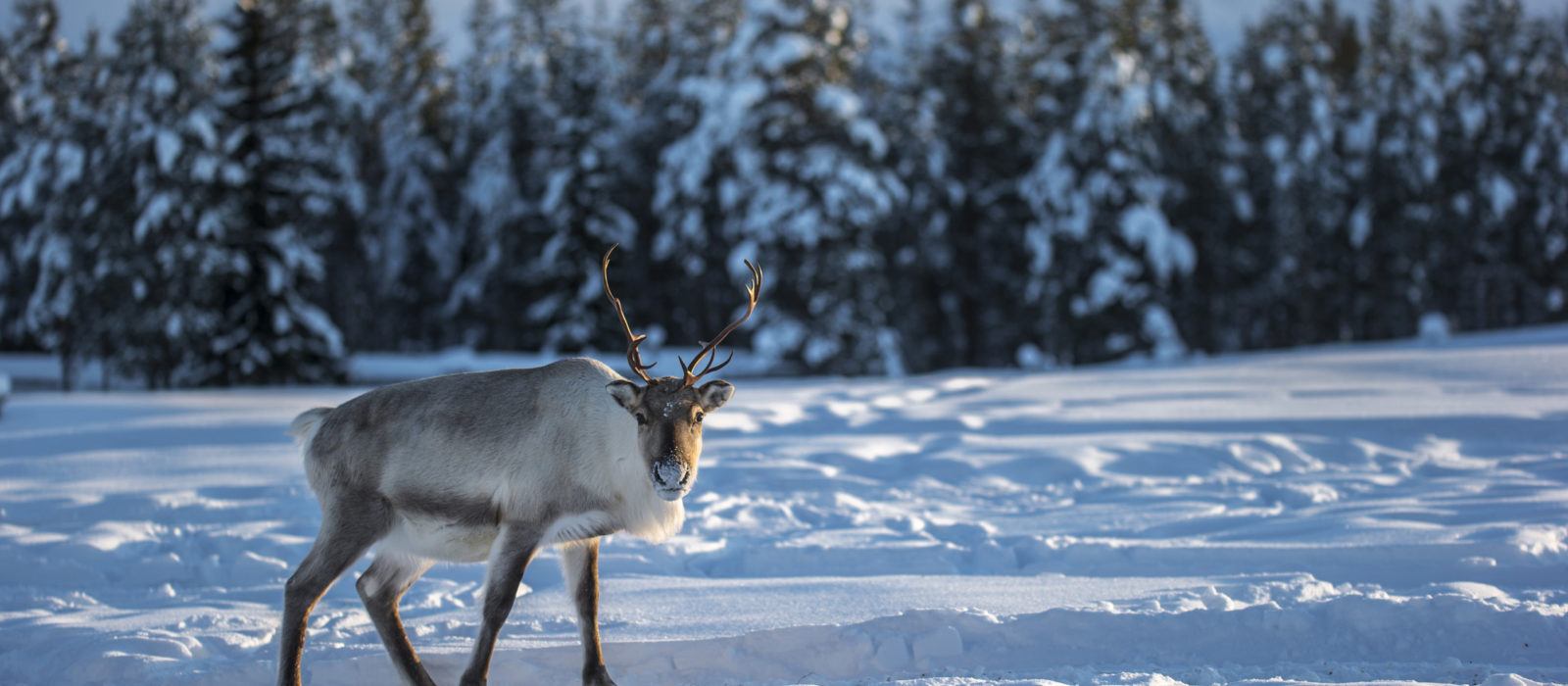
When is the Best Time to Visit Swedish Lapland?

Published on: November 13th, 2018
Last modified: July 28th, 2023
Swedish Lapland is a mystical land; reindeers take cover under snow laden trees, the magical Northern Lights light up the night sky and the native Sami people welcome foreigners with their rich folklore.
The best time to visit Swedish Lapland depends on what it is you want to do while you’re there.
To see the Northern Lights or wander through a magical winter wonderland, visit from November to February. If you’re after hiking through rolling hills and experiencing the midnight sun, then June to August is the best time to go.

Climate and seasons in Swedish Lapland
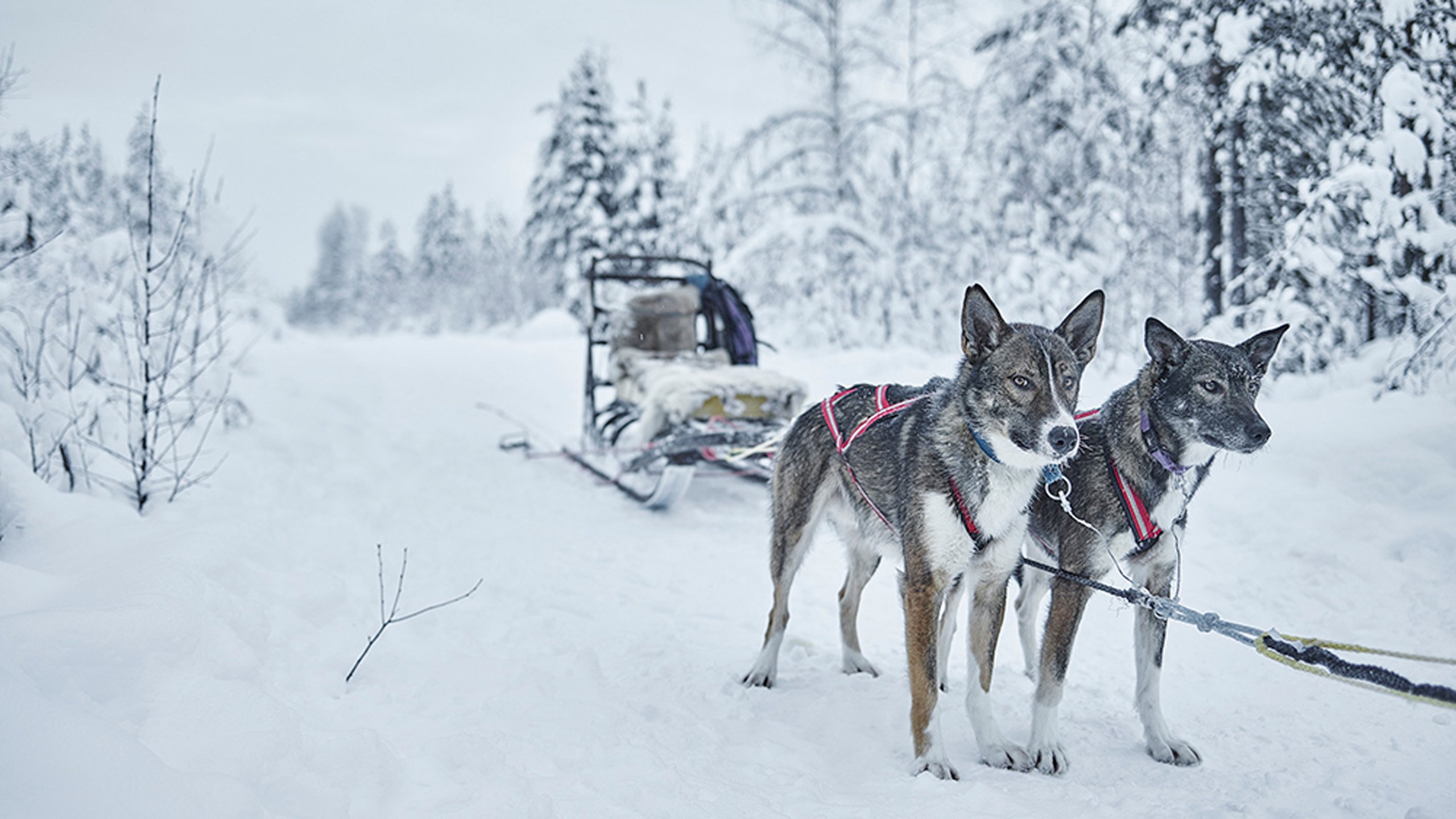
December to February see the most snowfall in Swedish Lapland, making it an ideal time to visit for skiing, snowshoeing, sledding or snowmobiling. Be sure to pack your warmest winter gear, as temperatures in this region can reach up to -16°C. On occasion, the wind chill can even drop the temperature to as low as -30°C. December and January have the shortest daylight hours of the entire year, with days starting to get longer towards the end of February.
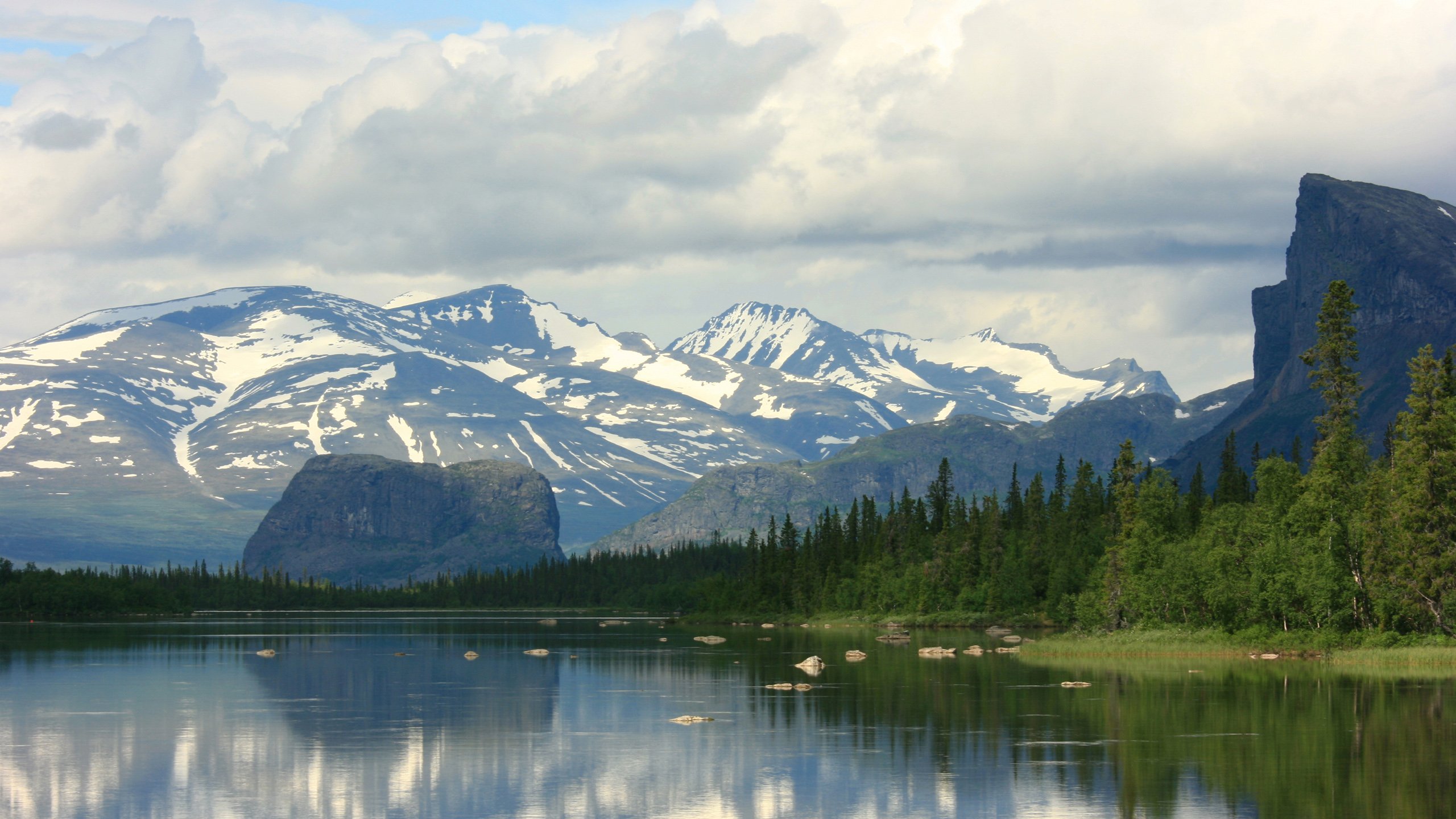
Snow slowly begins to melt in March, as the days become increasingly longer and the weather becomes bright and sunny. Melting snow sometimes leaves thinning ice on the ground, so it’s a good idea to travel with a guide if you go hiking during this time. April and May are both excellent for outdoor pursuits, particularly hiking and cycling, as the snow completely melts to make way for blooming flowers and verdant forest.
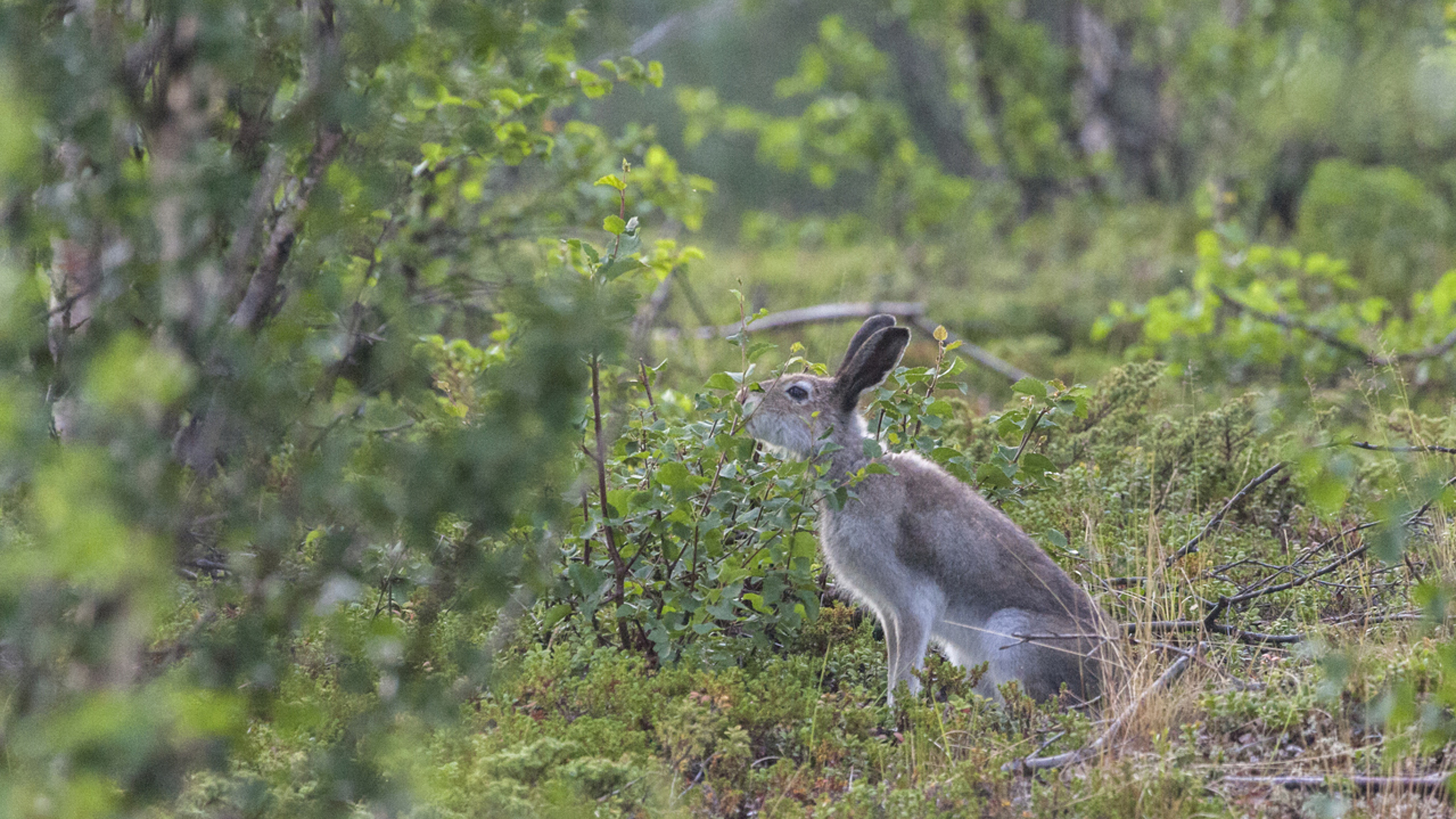
Although Swedish Lapland is typically thought of as a winter destination, the region also has plenty to offer during the summer months. Temperatures are mild even in the far north of Sweden during summer, so outdoor excursions become much more enjoyable between June and August. Both the Treehotel and Icehotel are now open year-round, so you can spend your summer days relaxing in the treetops or getting acquainted with local Sami culture.
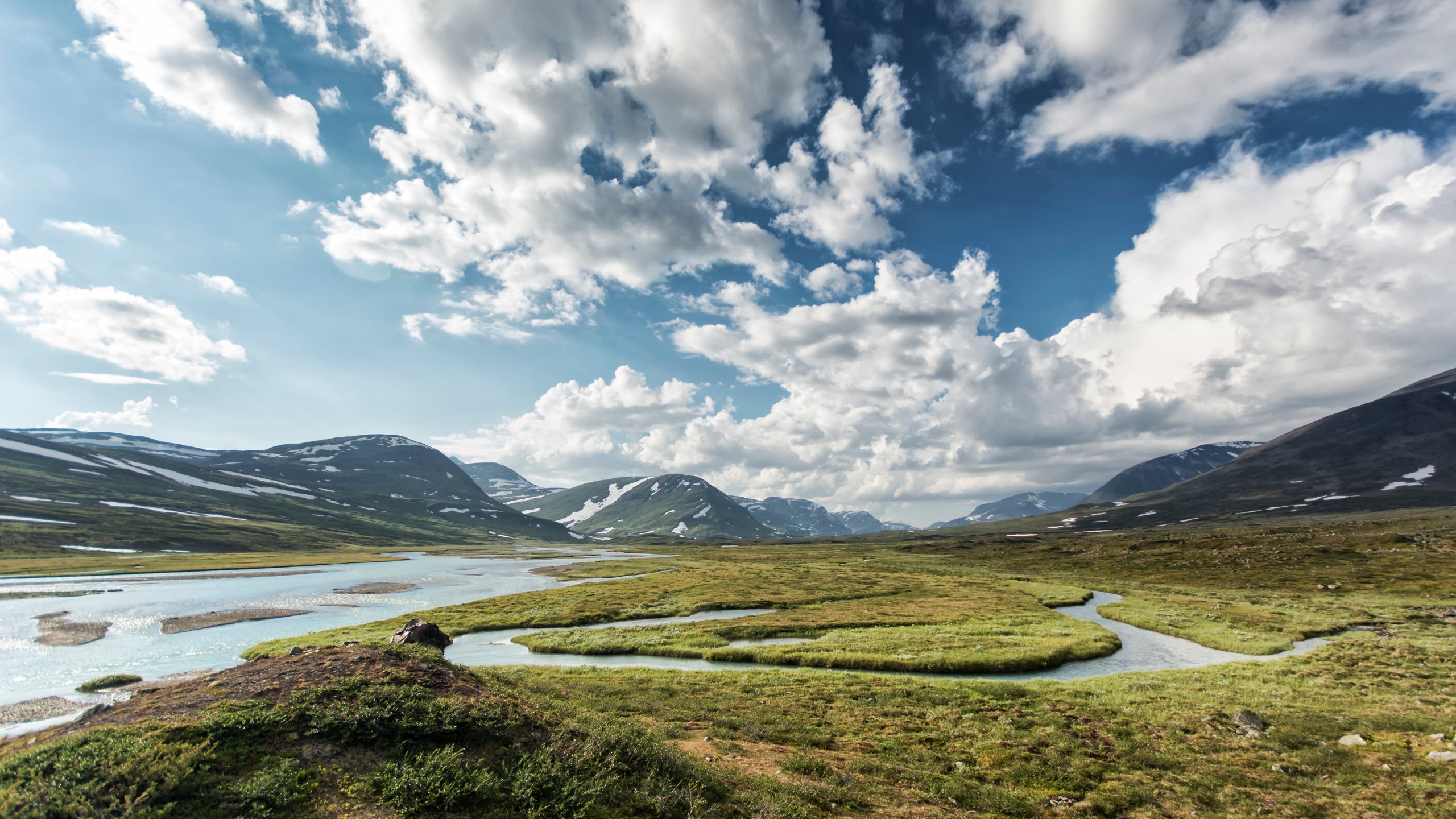
The shoulder months of September and October are difficult to predict; the weather could be mild and sunny, or it could be pouring with rain. If the weather is pleasant, September is a great month for boating and hiking excursions. In October and November, snow begins to fall, so it’s wise to be prepared. Temperatures can reach below freezing during these months but the air is fresh and crisp, so the cold is bearable.

Best time to...
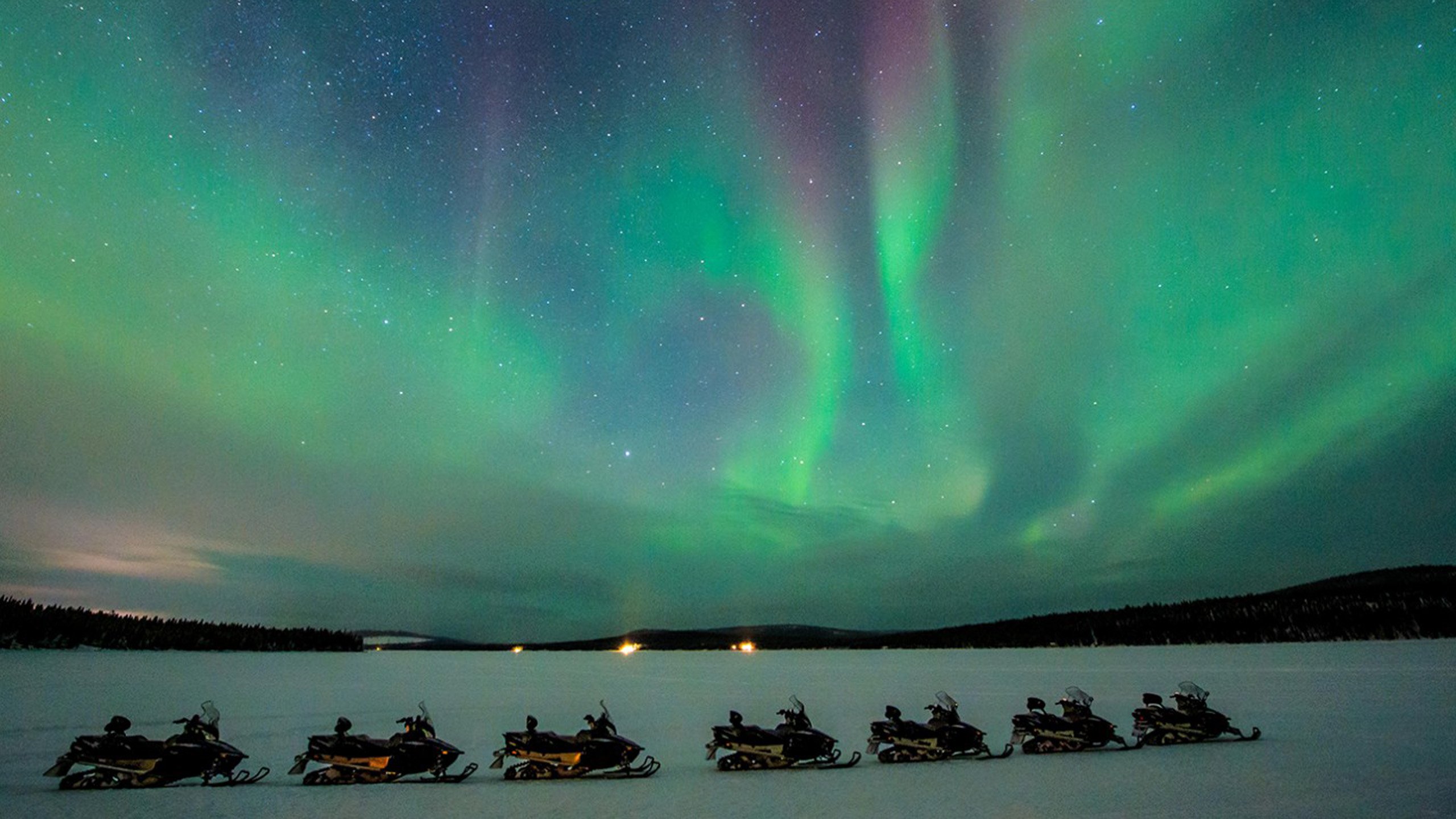
See the Northern Lights
From November to February, Swedish Lapland is blanketed in crisp, white snow. Night skies are clear and Swedish Lapland has one of the lowest rainfalls in Scandinavia, so this region is perfect for aurora spotting. The isolated town of Abisko, close to the Norwegian border, is a great base for any Northern Lights excursion. This region has many clear nights, so your chances of spotting the magical light show are unrivalled. Nearly every lodge in Swedish Lapland puts the Northern Lights at the forefront of their excursions, so you can learn how to photograph them at Logger’s Lodge or view them on a snowmobile from the Icehotel.
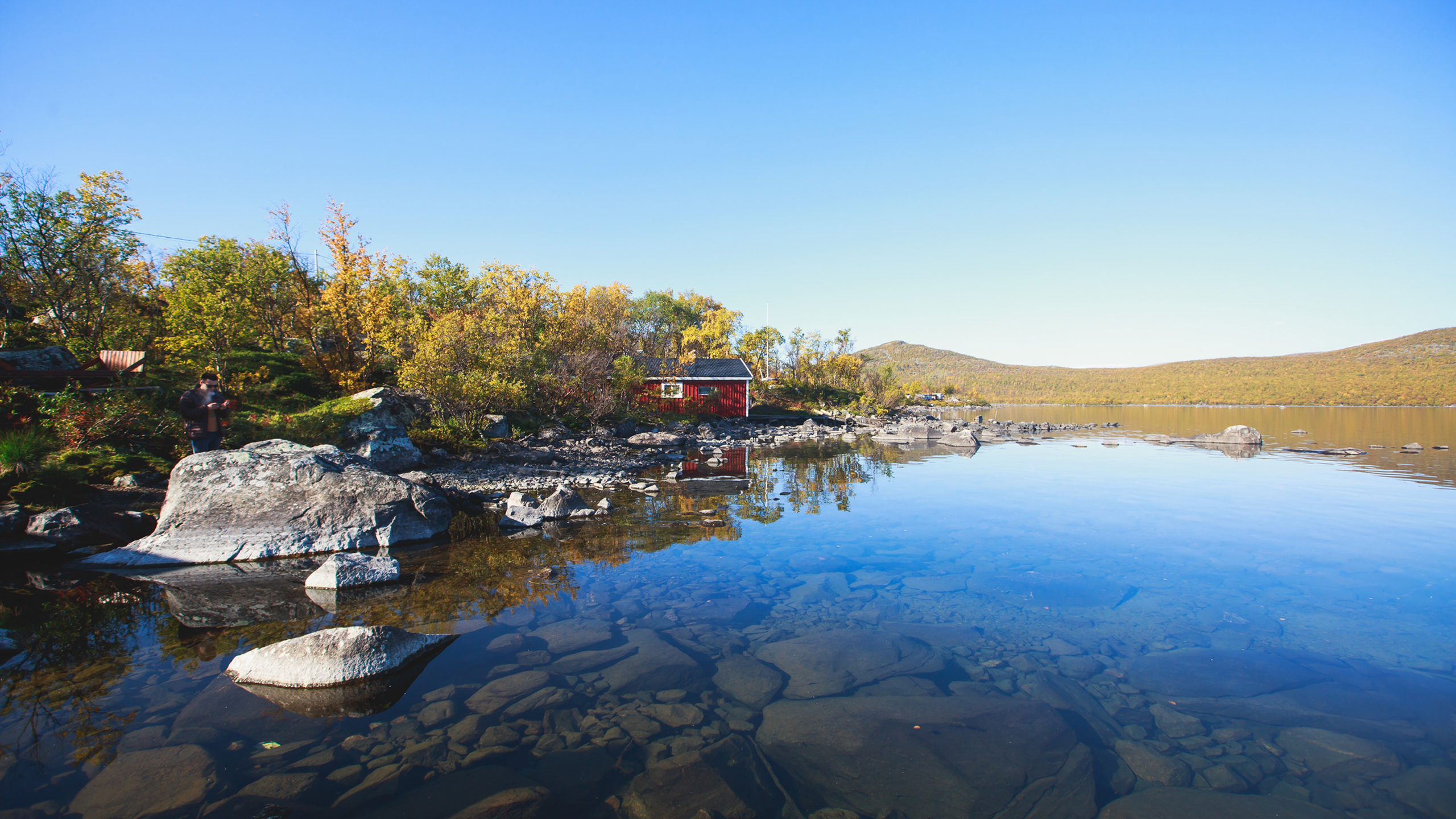
Go hiking in verdant forests
During Swedish summers, temperatures are mild but not overly warm, creating the perfect environment for outdoor activities. In Swedish Lapland, the snow melts to reveal rolling hills of green, so hiking in particular is a popular pursuit during this time. Canoeing, cycling and kayaking are all equally pleasant ways to explore the Scandinavian woodland. While you’re hiking, be sure to keep an eye out for Lapland’s elusive wildlife - critically endangered arctic foxes, moose and brown bears can all be spotted.
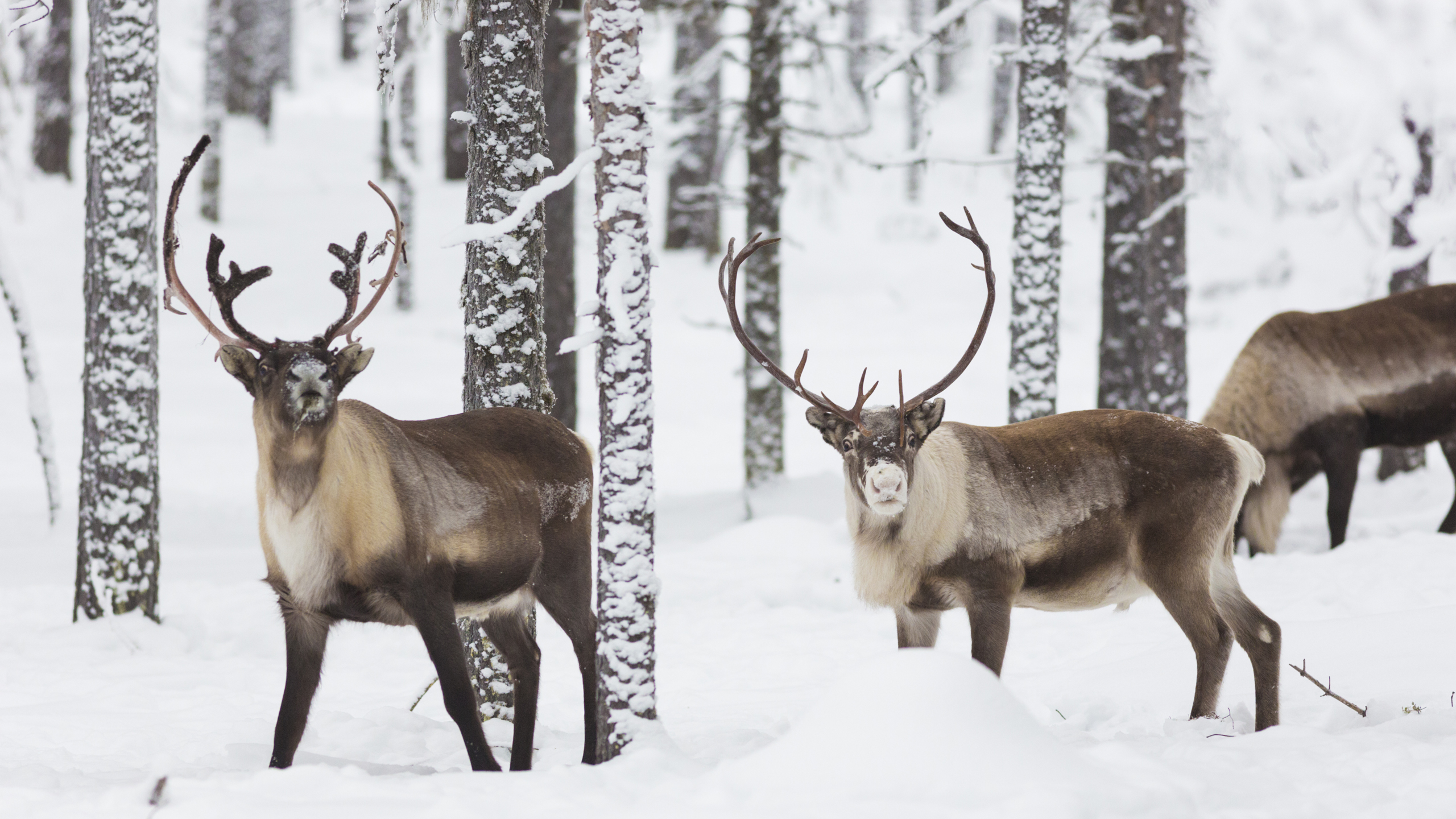
Explore a winter wonderland
In winter, Swedish Lapland transforms into a bonafide winter wonderland. Wrapping up in your warmest clothing to share stories with locals over traditional Swedish fika (coffee and pastries), herding reindeer or chasing the Northern Lights are all incredible ways to pass the time here. Snowmobiling, dog-sledding and ice fishing are other worthy ways to fill winter in Swedish Lapland.
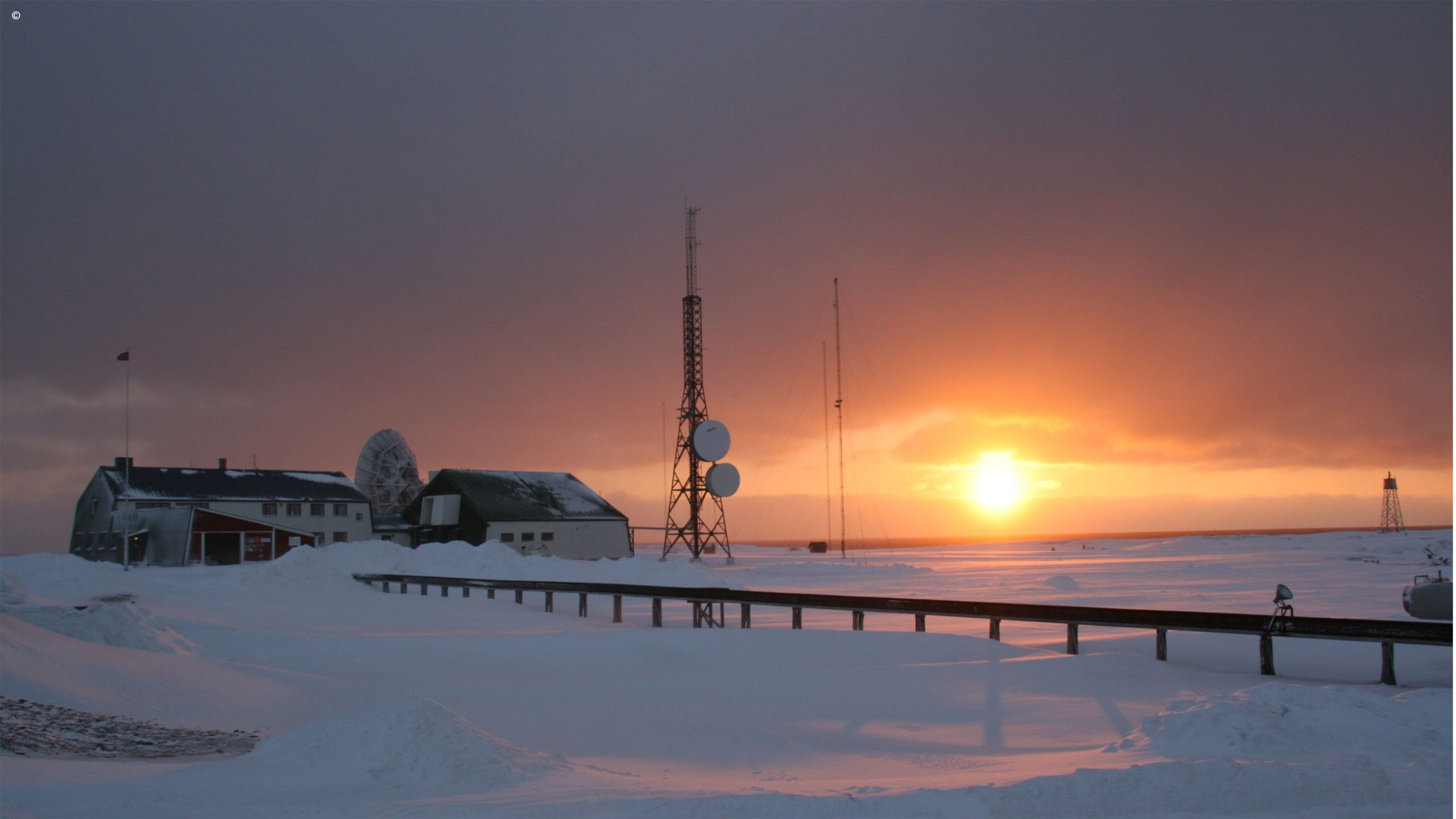
Experience the midnight sun
In June and July, you’ll be able to experience the surreal sensation of the midnight sun, when daylight still prevails long after 10pm. In the height of summer, it is not unusual to see local Sami people chatting outdoors around traditional Swedish barbecues long into the night. Extended daylight hours during summer also mean travellers can spend hours ambling through rolling forests or canoeing over glistening lakes.
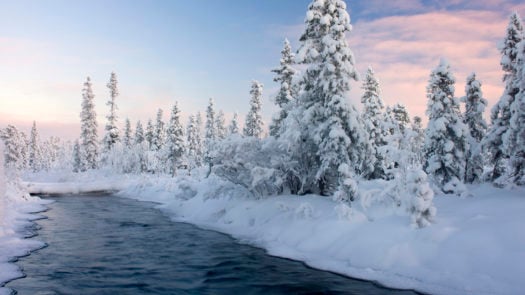
Our favourite Swedish Lapland adventures...
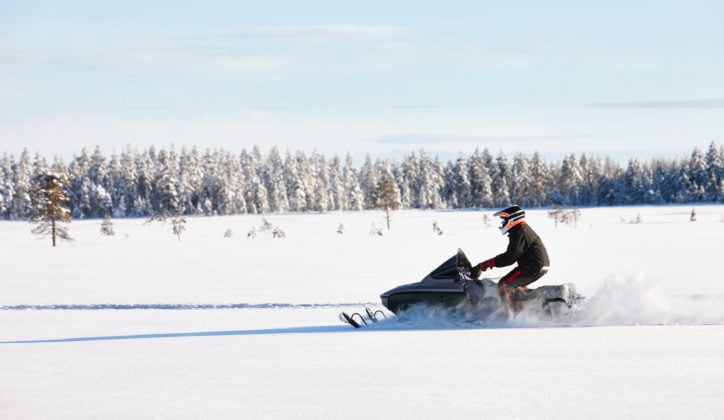
Feeling inspired? Our expert travel designers are always on hand to help you plan your magical escape to Swedish Lapland.
Protect Your Trip »
The 18 best places to see the northern lights.
Check the aurora borealis off your bucket list.
The Best Places for the Northern Lights

Getty Images
The northern lights, known as the aurora borealis, are a spectacular natural light show visible at certain times of the year in the Northern Hemisphere. They occur when electrically charged particles from the sun collide with gases in the Earth's atmosphere, creating vibrant streaks of blue, green, pink and violet dancing across the night sky. 2024 and 2025 are an excellent time to catch the northern lights: Solar activity will be at a peak, making for a more impressive experience, if you're in the right place.
The best places to see the aurora borealis have little light pollution, clear skies and no precipitation. The lights are only visible at northern latitudes when it's dark outside, so the months from September to April are best for seeing the aurora. There's also a Southern Hemisphere counterpart, the aurora australis; there are fewer easy spots from which to view this phenomenon, but if you're lucky, it can be equally brilliant.
For more information on the northern lights, scroll down to the FAQ section at the bottom of this page. Read on to discover the top destinations where you can see the kaleidoscopic northern and southern lights.
Fairbanks, Alaska

Fairbanks is by far one of the best places in the world to view the northern lights, as it's located directly under the auroral oval. This ring-shaped zone sits around the Earth's geomagnetic North Pole and is generally associated with the most vibrant aurora sightings. Visitors can expect to see the lights on an average of four out of five clear nights during aurora season, which lasts from late August to late April.
You can book a northern lights tour to see the aurora from the springs and tubs at Chena Hot Springs Resort. This excursion includes round-trip transportation to the resort from town, a soak in the hot springs, a visit to the Fairbanks Aurora Ice Museum and an aurora viewing tour; dinner and drinks centered around Alaska produce are an option extra with hot drinks supplied.
There's more to Fairbanks than just the northern lights: If you visit in late summer, consider family-friendly activities like a ride on the Riverboat Discovery or gold panning. For a festive holiday experience in the winter, head around 15 miles out of Fairbanks to visit the Santa Claus House in the city of North Pole. Travelers can also see ice sculptures in February and March at the impressive World Ice Art Championships or take a dog-sledding or snowmobiling tour .
Where to stay: For excellent chances of aurora viewing, book a private igloo at Borealis Basecamp, a top glamping resort located on 100 remote acres of boreal forest about 25 miles from Fairbanks. With activities like dog-sledding on top of aurora viewing, past visitors regularly describe it as a once-in-a-lifetime experience.
Tromsø, Norway

Located about 220 miles above the Arctic Circle, Tromsø is one of several top spots to view the northern lights in Norway. At the darkest point of the aurora season – which runs from September to early April – the sun doesn't rise in this northern part of the country, although there is twilight during the day. With this level of darkness, there are more opportunities to see the aurora.
Tromsø itself is a small but lively city, so there's plenty to see and do when you're not looking up at the sky, including a visit to the beautiful Arctic Cathedral. In late January to early February, the city hosts the Northern Lights Festival, a 10-day music and performing arts event featuring a variety of musical genres.
Aurora chasers can view the lights on their own while in town, but to get a better view, it's recommended to head away from the city lights. Arctic Circle Tours is one company offering guided trips, with small groups for a more personal vibe. Alternatively, adventure-seekers can embark on an exhilarating husky trekking expedition in the Arctic wilderness.
Where to stay: For accommodations with harbor views, look no further than the Scandic Ishavshotel – guests love it for its convenient central location in the city, as well as its plus-sized breakfast buffet with plenty of choices.
Luosto and Rovaniemi (Lapland), Finland

Lapland is located within the Arctic Circle in the northernmost part of Finland. The northern lights are most visible here between the end of August and April – and approximately 200 times a year – so there are many opportunities for aurora spotting. Finnish Lapland is also known as home to the Sámi people (the only recognized Indigenous group in the European Union region), some 200,000 reindeer and Santa Claus – who can be visited in the town of Rovaniemi, the region's largest city and a great base for your aurora expedition.
Consider venturing roughly 70 miles north of Rovaniemi to the resort town of Luosto, set among the picturesque and hilly landscape of Pyhä-Luosto National Park. Here, you can also spend a magical evening outdoors under star-filled skies during a reindeer-drawn sleigh ride through the snow-covered forests. Jaakkola Reindeer Farm offers a reindeer sleigh tour to spot the aurora once weekly; it includes a stop to warm up at a bonfire camp with snacks, hot beverages and local fireside stories.
Where to stay: For a bucket list experience, watch the impressive light show from a glass igloo at Santa's Hotel Aurora & Igloos in Luosto. Past visitors love the cozy atmosphere here, boosted by amenities like saunas and log fireplaces. If you're sticking to Rovaniemi, the Arctic TreeHouse Hotel is a stunning choice, with designer cabins perched among the snow-covered taiga forest.
Orkney, Scotland

This group of captivating (and mostly uninhabited) islands, located about 10 miles off Scotland's remote northern coast, is one of the best places to see the northern nights in the U.K. Fall and winter are the best seasons to witness the aurora, also known in local Shetland dialect as the "Mirrie Dancers," with fall bringing the highest proportion of clear nights. A few places to see the spectacular light show include along the coast at Birsay or the Broch of Gurness, an archaeological ruin on a sweeping and dramatic coastline.
In addition to the aurora, Orkney is home to breathtaking coastal landscapes and more sheep than you can count (try some local lamb, if you can). Travelers can also visit the Heart of Neolithic Orkney, a UNESCO World Heritage Site with several monuments dating back 5,000 years.
Where to stay: During your visit, plan to stay in the historic town of Kirkwall, the capital of the Orkney Islands: The no-fuss Ayre Hotel offers harbor views, and past visitors compliment the hearty meals in the hotel restaurant. Spot the aurora close to town at Inganess Bay and Wideford Hill.
Yellowknife, Canada

Yellowknife, the capital of Canada 's Northwest Territories, dubs itself the "Aurora Capital of the World." Thanks to its position in the middle of the auroral oval, the city puts on one of the world's most awe-inspiring light shows. The period from mid-November to the beginning of April is the recommended time to spot the aurora, but it's also possible to see the aurora during more hospitable weather from late summer to early fall as the lights are visible up to 240 days a year.
Located on the northern shore of Great Slave Lake, Yellowknife boasts winter sports such as ice fishing and cross-country skiing. If you visit in March, plan to attend the monthlong Snowkings' Winter Festival, which features events and activities like a snow-carving competition, a snow castle, live music and more.
For a unique experience, book a tour through Aurora Village to view the lights. The property will pick you up from your hotel and take you to its site, where you can stay warm in a tent while sipping hot beverages. The Aboriginal-owned Aurora Village also offers activities such as dog-sledding or snowshoeing excursions.
Where to stay: Warm up in the fireside lounge at The Explorer Hotel in Yellowknife. Previous visitors note the warm and helpful staff as a strength here.
Jukkasjärvi, Sweden

The optimal time for seeing the illuminated skies in the northern part of Sweden, known as Swedish Lapland, is between early September and late March. The small Swedish village of Jukkasjärvi sits around 125 miles above the Arctic Circle on the Torne River and is an ideal locale for aurora viewing. You'll fly to the nearby Kiruna Airport to get here. With the village's origins dating back to the 17th century, you can still find some of the original homesteads, including an old timber cottage. Today the village boasts 800 residents – and more than 1,000 dogs.
Where to stay: If you're up for a chilly overnight adventure, reserve accommodations at the world's first permanent ice hotel, the aptly named Icehotel 365. Each of its artist-designed suites is sculpted from ice with a unique theme and maintains temperatures around minus 5 degrees Celsius (about 23 degrees Fahrenheit). The rooms also feature beds with reindeer hides and thermal sleeping bags so you can bundle up during the night. While you're at the property, take advantage of the guided "Northern Lights Safari on Snowmobile" or embark on the "Moose Safari on Horseback" atop an Icelandic horse.
Reykjavik, Iceland

October through March is the best time to chase the aurora borealis in Iceland . There are numerous natural parks and attractions throughout the country where you can view the show during the long and dark winter, but the capital city of Reykjavik also offers many options for accommodations, restaurants, tours and other activities for your visit. For optimum aurora viewing in the city away from the light pollution, head to Öskjuhlið. This wooded and hilly area in Reykjavik sits at 200 feet above sea level and has walkways and paths where you can see the nighttime show.
Atop this hill sits Perlan, which houses the only planetarium in the country and a museum featuring exhibits about Iceland. Perlan is also home to the world's first indoor ice cave and glacier exploratorium. During your visit, don't miss the panoramic views of the city from the building's fourth-floor observation deck. From this vantage point, you'll be able to see the Snæfellsjökull glacier; Keilir, a volcanic mountain; and Esja, the mountain of Reykjavik.
Where to stay: While in Reykjavik, splurge on an overnight tour with Buubble Tours. This experience includes breathtaking sightseeing spots and a night spent under the magical northern skies in a transparent bubble at the 5 Million Star Hotel. For longer stays, consider the eco-friendly Eyja Guldsmeden Hotel, with sweeping views of the city – guests love it for its cozy yet chic Scandinavian design.
Southern Iceland

While Reykjavik is a great aurora-viewing spot if you like having amenities close by, consider getting out into Iceland's stunning, otherworldly countryside for a unique backdrop for the northern lights. One unique place to see them is the black sand beach at Reynisfjara (but watch out for the dangerous waves here). Alternatively, head to Jökulsárlón, a glacial lagoon and seal habitat, where the aurora's reflections in the icy water are truly beautiful.
There's no shortage of tours that will stop by these locations and more for possible aurora sightings. Consider a 10- or 13-day tour around the country with Fun Travel, or a four-day option from Arctic Adventures. If you want to do things at your own place, it's also possible to self-drive – just know that road conditions can be icy, particularly in the depths of winter (although Icelandic roads are generally well-maintained).
Where to stay: Hotel Rangá is a formidable option for aurora-spotting. It offers a variety of special amenities, such as aurora wake-up calls, a lookout deck and snowsuits to keep you warm if you're outside viewing the lights. Past visitors praise Rangá for being a comfortable yet luxurious place to relax, be it in the outdoor hot tubs or the cozy and sociable bar.
Kangerlussuaq, Greenland

Greenland may not be the most accessible place to travel for viewing the northern lights, with limited flight options (mostly via Iceland), but those who make it here will be thrilled they did. The tundra of Kalaallit Nunaat – the Greenlandic name for the country – is one of the best places on the globe to see the aurora from September to early April.
For the more adventurous aurora seekers, head to the top of the Greenland Ice Cap for spectacular views of the lights. This impressive glacier covers 80% of the country and is accessible via the tiny town of Kangerlussuaq. Located on a fjord right along the Arctic Circle, the town, often described as a gateway to Greenland, was a former U.S. Air Force base and is now home to Greenland's main airport. The town is known for having clear skies on some 300 nights per year, so chances of a sighting are particularly good here.
Tour company Guide to Greenland offers various tours, from two-hour aurora-viewing trips to a tough but rewarding multi-night dog-sledding expedition across the ice. For a less strenuous experience, companies like Nordic Saga Tours offer cruises through the Arctic landscapes around Kangerlussuaq.
Viking cruise along Norway's coast

Courtesy of Viking
Embrace the winter and set sail for the Arctic Circle to experience the aurora in northern Norway. The 13-day "In Search of the Northern Lights" cruise itinerary with Viking departs from London for the North Sea with stops in ports of call that are top aurora-viewing locales, including Tromsø, Alta and Narvik, plus a stop in Amsterdam en route. The cruise ends in Bergen, Norway.
While on land, take in the natural beauty of the snow-blanketed landscapes and book bucket list excursions like a night spent in an igloo or a reindeer sledding adventure. You can also chase the lights into the wilderness by snowmobile, take a dog sled ride under the stars or view them from a Sámi tent atop the mountain Pæska in Alta. This Viking Ocean Cruises itinerary is offered with departure dates from mid-January to mid-March.
Headlands International Dark Sky Park, Michigan

Regarded as one of the top spots in the U.S. to see the aurora outside Alaska, Headlands International Dark Sky Park sits at the top of Michigan 's lower peninsula, less than 5 miles from Mackinaw City. While the northern lights are less common here due to the relatively southern location, the best time to catch a glimpse of this phenomenon is typically during the spring and fall – and appearances can usually be predicted a couple of days in advance. The park even maintains an online Clear Sky Chart so you can check the weather forecast before you go.
There are also other stargazing opportunities throughout the year at Headlands. During the summer months the Milky Way is visible across the sky, and late summer evenings entertain visitors with meteor showers.
Where to stay: If you're visiting between late April and the end of October, splurge on a stay at Mission Point Resort on Mackinac Island, where the aurora should also be visible. Guests describe this iconic property situated along the shoreline of Lake Huron as positively charming, thanks to its historic nature and manicured grounds. The resort also offers a host of outdoor activities from bike rentals to swimming.
Tips on Trips and Expert Picks Newsletter
Travel tips, vacation ideas and more to make your next vacation stellar.
Sign up to receive the latest updates from U.S News & World Report and our trusted partners and sponsors. By clicking submit, you are agreeing to our Terms and Conditions & Privacy Policy .
Voyageurs National Park, Minnesota

Martha Shuff | Courtesy of Voyageurs National Park
Located on the international border between Minnesota and Ontario, Voyageurs National Park is an approximately 218,000-acre labyrinth of boreal forests, lakes and streams. Voyageurs is Minnesota's only national park; it's also unique in that the park's interior is accessible only by boat, unless you visit by snowmobile in winter. As a certified International Dark Sky Park , Voyageurs provides opportunities to view the Milky Way on clear evenings, especially in the summer. Year-round aurora viewing is also possible on evenings with clear dark skies, but chances are better during the winter, when it's dark for longer.
For a guided stargazing tour – including the Milky Way, the constellations and (if you're lucky) the northern lights – book with Voyageurs Outfitters. If you're on your own, park officials note that almost any campsite is a good spot for northern lights viewing and stargazing. You can also check out the boat launch areas around Ash River, Kabetogama Lake and the Rainy Lake Visitor Center for top-notch views.
Where to stay: Those who prefer to sleep in a warm, cozy bed instead of camping under the stars can make reservations at the Cantilever Distillery + Hotel, a boutique Trademark Collection by Wyndham property in the nearby town of Ranier, Minnesota. Visitors report that there's a lot to like here, from the industrial-chic rooms to friendly staff to top-notch cocktails in the active distillery on the premises.
Abisko National Park, Sweden

Given its Arctic location, Sweden is one of the prime spots for aurora viewing in the Northern Hemisphere, with Swedish Lapland at the top of the list. The fall and winter months (from September to March) offer the best opportunities to witness the spectacle, as there is more darkness than light during the days.
If you're up for the Arctic adventure, December is an ideal month to visit Abisko National Park, which some regard as one of the best places on Earth to see the lights dance across the sky. The park's mountainous terrain and clear dark skies offer dramatic front-row seats for viewing the northern lights. The Aurora Sky Station is one of the best vantage points to see the aurora in the park. Join one of the expert presentations to learn about the science behind this fascinating phenomenon.
If you'd prefer to chase the lights with a curated tour, professional photographers and aurora-chasing guides at Visit Abisko lead three- to four-hour tours throughout the fall and winter. If you can, try to join the tours in fall, as this time of year offers a unique opportunity to view the lights both in the sky and reflected in the lakes and rivers, which you won't see in the winter months.
Where to stay: For cozy Nordic vibes, stay at Abisko Mountain Lodge, which also offers activities like ice climbing and snowmobile tours in winter. Guests love the excellent restaurant here, which offers Swedish specialties ranging from salmon to moose.
Nellim, Finland

Courtesy of Wilderness Hotels
Located a stone's throw from the Russian border in Finnish Lapland, this remote Arctic destination is a top-rated locale to view the northern lights due to the lack of light pollution. You'll be seriously out of the way of any built-up areas, as there's not even a paved road into Nellim. The best time to visit is between December and early April. This village is a great place to hunker down in a lodge and relax while enjoying a slice of life in the Finnish wilderness.
Where to stay: The Nellim Wilderness Hotel offers a perfect base with year-round activities, including aurora-chasing tours by car, snowmobile or on snowshoes. You can even take a sleigh ride through the snow to a campsite on Lake Inari to spot the aurora in pristine nature.
Beyond standard rooms, the Wilderness Hotel also offers glass-roofed cabins, as well as classic log cabins and bubble-shaped accommodations for two where guests can watch the dancing lights through the glass roof above your warm, cozy bed. When you're not chasing the lights, enjoy other Arctic activities like a husky safari, ice fishing, snowmobiling or a day in the snow meeting the local reindeer.
Saariselkä and Kakslauttanen, Finland

These two towns are around 150 miles above the Arctic Circle, with a prime location under the auroral oval, allowing as many as 200 opportunities per year to see the northern lights (weather permitting, of course). This area in Finnish Lapland is known for its stunning scenery, Sámi culture, cross-country and downhill skiing, and Urho Kekkonen National Park – one of Finland's largest.
Ski enthusiasts can roll two trips into one by hitting the slopes by day in Saariselkä and aurora spotting by night at Finland's northernmost ski resort. March into early April is the best time to view the aurora, as the Finnish Meteorological Institute notes that the weather is usually clearer at this time of year. But it's possible to see the northern lights at any time during the season from late August to early or mid-April.
Where to stay: Seven miles south of Saariselkä sits the village of Kakslauttanen, where you can book two- or four-person Glass Igloos at the Kakslauttanen Arctic Resort. The new Kelo-Glass Igloos, which sleep up to six, mix the comforts of a log chalet with the visibility of the glass roof; enjoy a private sauna, a fireplace and more. There's also an impressive selection of year-round tours and activities at this resort, including northern lights excursions on snowmobiles or by horse-drawn carriage.
Stewart Island, New Zealand

Courtesy of RealNZ
Although they may be isolated, some far-south destinations offer the chance to see the aurora australis – or southern lights. While you might be able to see them year-round in some locations (just as with the northern lights), certain months are better for aurora viewing in the Southern Hemisphere. Stewart Island is regarded as one of the top spots to see the brilliant display in New Zealand , with 85% of the island encompassed by Rakiura National Park, so there are few people and virtually no light pollution. You can reach Stewart Island by flying in from Invercargill or taking a ferry from Bluff.
New Zealand's winter months – June to August – are the best time to see the southern lights; spring and fall are also not bad times to spot them. The brighter summer months, between December and February, make it more difficult to spot the aurora, but there's still a chance you'll catch a glimpse between midnight and 4 a.m.
Where to stay: Consider reserving a room with at Stewart Island Lodge, an intimate bed-and-breakfast. This beautiful property is just minutes by foot from the village of Oban, and the property will pick you up at the ferry terminal for your stay. Past visitors rave about the spectacular views of Halfmoon Bay and the Foveaux Strait from both the rooms and lodge terrace.

Tasmania sits approximately 150 miles south of mainland Australia. This mountainous island is one of relatively few places on the planet where it's theoretically possible to see the aurora 365 days a year due to its latitude, which allows for full darkness even on summer nights. The capital city of Hobart is the easiest point of entry: It's home to Tasmania's largest airport and serves as a convenient base. The city's burgeoning food and cultural scenes will also give you plenty to see and do.
From here you'll be able to reach several great viewing locations with unobstructed and open views of the sea along the southern and southeast coastlines, like Goat Bluff and Tinderbox Bay. When you're not staring at the night sky, splurge on a once-in-a-lifetime helicopter flight with Tasmanian Air Tours. Depending on your whims, your private pilot can whisk you away to soar over the sea cliffs; stop at a local winery to sample local vintages; or head south to the UNESCO World Heritage Site of Port Arthur , Tasmania 's historic and most notorious prison.
Where to stay: Reserve accommodations at The Tasman, a Luxury Collection Hotel, Hobart. The historic luxury property is situated along the lively waterfront area with harbor views. Past guests admired the historic building housing the hotel and loved the heritage rooms featuring gas fireplaces for those cold Tasmanian nights.
Expedition cruise to Antarctica

If you're one of the lucky few people on the planet to travel to the southernmost continent on Earth, it may be pricey, but you'll have an adventure of a lifetime in Antarctica, especially if the aurora illuminates the sky. The southern lights are most visible in the winter months (between March and October), but due to weather conditions, only researchers brave the Antarctic winter – and they mostly stay indoors.
However, all hope is not lost if you seek to view the aurora australis in Antarctica. Late-season expedition cruises to this continent offered in March also bring the opportunity to view the southern lights and enjoy the end of Antarctica's fleeting summer. As the days shorten in length, you may encounter light snow across the extreme landscape and ice starting to form on the water's surface.
When it comes to wildlife viewing, humpback whale sightings are abundant, and you'll still see penguin colonies – including king and gentoo penguins. You can also keep your eyes peeled for elephant seals, leopard seals, wandering albatross and other species of birds. When night falls on clear evenings, look for the light show in the southern sky. Companies that offer March voyages include Swoop Antarctica, Atlas Ocean Voyages, Silversea Cruises , Aurora Expeditions and Hurtigruten Expeditions.
Frequently Asked Questions
There's no one location that's widely accepted as the best place to see the northern lights. However, the strongest light displays are within what's called the "auroral oval": a rough circle around the Earth's magnetic northern pole that tends to occur around 60 to 70 degrees of latitude. The oval's exact size expands and contracts (some more southerly destinations can fall under it when the aurora is particularly strong), but there are certain locations that generally fall within the oval most of the time.
These places include:
- Central and northern Alaska
- Large areas of Yukon, the Northwest Territories and northern Quebec in Canada
- Southern Greenland
- Far northern Norway, Sweden and Finland
Within these areas, it could be argued that Iceland is the best place to see the aurora as it experiences much milder temperatures than some other areas within the oval. But this is subjective, and some travelers may prefer a location like Yellowknife in Canada for a full-on, very cold Arctic experience.
The northern lights are only visible when it's dark out. Since many of the best places to see them are so far north that they experience near-constant daylight in the summer, you'll generally want to schedule a trip between late August and early April. However, within this time period, there's some debate about the best time to catch the lights. For example, the aurora tends to be more active around the September and March equinoxes due to stronger solar winds – but on the other hand, your chances of seeing them may be higher in the depths of winter, since there's longer nights and therefore a longer window in which they might appear.
In more southern locations like Minnesota, it may be possible to see the light show in the summer months, but it's still advisable to go at a time when the nights are longer. It can also be worth trying to schedule your northern lights trip when there's a new moon: While the aurora can shine through moonlight, it may be harder to see if there's a full moon.
Of course, cloudy weather can block the aurora even if you go at the right time of year. So, it may be wise to research the local weather patterns at your chosen destination to find out if there's a month where you can expect clearer skies. In many cases, though, there's a little luck involved.
These two countries can offer excellent views of the northern lights, since both are directly under the typical auroral oval. Yet there are some differences to be aware of.
In Norway, you'll need to head to the north of the country to catch the aurora: While they have been sighted in Oslo , the capital and largest city, it's too far south to be a reliable vantage point. Cities like Tromsø are popular spots, but direct flights there are only possible from some European cities, so North Americans will have to take connecting flights. On the other hand, Iceland is generally easier to reach, with direct flights to its capital, Reykjavik, from a large number of U.S. destinations (particularly from the East Coast) with no further connection required.
Since clear skies are key for seeing the northern lights, weather is another factor to consider. In November, December and March, Reykjavik has statistically slightly more frequent clear skies, while in January and February, Tromsø is a little better, but the difference isn't big: Both places have clear skies only around 25 to 30% of the time in these months. Reykjavik has slightly warmer weather, though, so between that and the ease of access, it has a slight edge over Norway for seeing the northern lights.
Alaska and Iceland are known for stellar aurora light shows, so deciding between them may depend on which destination you find more convenient and more to your tastes. In Alaska , the city of Fairbanks is considered a great spot to catch the northern lights. (They can still be seen elsewhere in the state – for example, in Anchorage, although they're not so common in more southern locations like Juneau). The advantage of Fairbanks is that you won't need a passport , yet there aren't many direct flights from the lower 48 states. Despite being an international destination, Iceland may be more accessible (particularly from the eastern U.S.), thanks to fairly regular flights to Reykjavik from numerous American cities.
Fairbanks does offer statistically better weather for aurora viewing: It has clear skies more often than Reykjavik, particularly in March when the Alaska city experiences them around 45% of the time (compared to about 25% for Reykjavik). But you'll have to be able to tolerate the cold. While temperatures in Reykjavik hover around freezing in midwinter, Fairbanks is a veritable deep freeze, with average highs around 5 degrees Fahrenheit down to lows colder than minus 5 in December.
Why Trust U.S. News Travel
Timothy Forster , as a Canadian who has traveled from coast to coast in that sprawling country, knows all about travel in the cold northern reaches of the world. Forster used his extensive traveling background along with research expertise to curate this article.
You might also be interested in:
- The Top Waterfalls in Iceland
- The World's Top Treehouse Hotels
- The Most Beautiful Beaches in the World
- The Best Travel Insurance Companies
Most Beautiful Landscapes in the World

Tags: Travel , Vacation Ideas
World's Best Places To Visit
- # 1 South Island, New Zealand
- # 4 Bora Bora
If you make a purchase from our site, we may earn a commission. This does not affect the quality or independence of our editorial content.
You May Also Like
Flight canceled or delayed what to do.
Amanda Norcross April 26, 2024

The Best Beach Hats
Megan Johnson and Sharael Kolberg April 26, 2024

The Best Florence Tours
John Rodwan April 25, 2024

The 9 Best Louisiana Swamp Tours of 2024
John Rodwan April 24, 2024

How Much Does a Cruise Cost?
Gwen Pratesi April 24, 2024

The Best Whale Watching in Cape Cod
Lyn Mettler April 24, 2024

Best Whale Watching Tours in Maine
Marisa Méndez April 23, 2024

The Best Wineries in Napa Valley
April 23, 2024

The Best East Coast Beaches
April 19, 2024

The Best Carry-on Luggage
Erin Evans , Rachael Hood , Catriona Kendall , Amanda Norcross and Leilani Osmundson April 17, 2024


Weather and nature
Who has four seasons, loves the outdoors and talks about the weather the swedes.
Most people think of winter when they hear of Sweden. But because of the warm Gulf Stream, the climate here can be much milder than you might expect. Spring, summer, fall and winter each have their own unique personalities.
Spring runs from March/April to May, summer from June to August, fall from September to October/November and winter from November/December to March/February.
In a land as varied as Sweden, these seasons can be quite different depending on where you live. For simplicity’s sake, the country can be divided into three major regions: Götaland in the south, Svealand in the middle and Norrland in the north.
South Sweden
In Götaland, where you’ll find the cities Gothenburg and Malmö, winters are shorter and milder, while daytime summer temperatures normally range from 15 to 25 degrees Celsius. The air is relatively humid here, making warm days feel warmer and cold days colder. However, even in winter months, snow is rare near any southern coast.
Key facts about Sweden
Population: 10,551,707 people
Land area: 407,000 km²
Population density: 25.9 per Km2
Capital: Stockholm
Main language: Swedish
Currency: Swedish krona (SEK), 1 krona = 100 öre
Stretching from Stockholm in the east to the border to southern Norway in the west, Svealand has a climate that is normally a few degrees cooler than that of Götaland. Average temperatures are just below zero in January, and snowfall is more common – especially in the northwest, where a number of popular ski resorts are located.
North Sweden
Although relatively few people live here, Norrland has the climate many people falsely associate with all of Sweden. Winters here are long, cold and dry, with sub-zero temperatures lasting several months. There is also much more snow here. Summers may be short, but temperatures are often a comfortable 15 degrees, with occasional peaks of up to 30 degrees.
Swedish landscape
The Swedish countryside is dotted with thousands of lakes, freshwater streams, mountains and rolling hills. Starting up north, villages are few and small, nature fills in. The landscape is very dramatic, and rolling hills rise into mountains. On the way south, you’ll pass by endless numbers of lakes, streams, and pine and birch trees.
On the Baltic island of Gotland, limestone columns rise dramatically from the sea. And in southernmost Sweden, you’ll find everything from deep-green potato fields to some of the richest apple orchards in Europe.
So if there’s one thing Sweden has plenty of, it’s open landscapes. Even those living in large cities like Stockholm or Gothenburg have direct access to hundreds of unspoiled islands – just a short boat ride from the city centre.
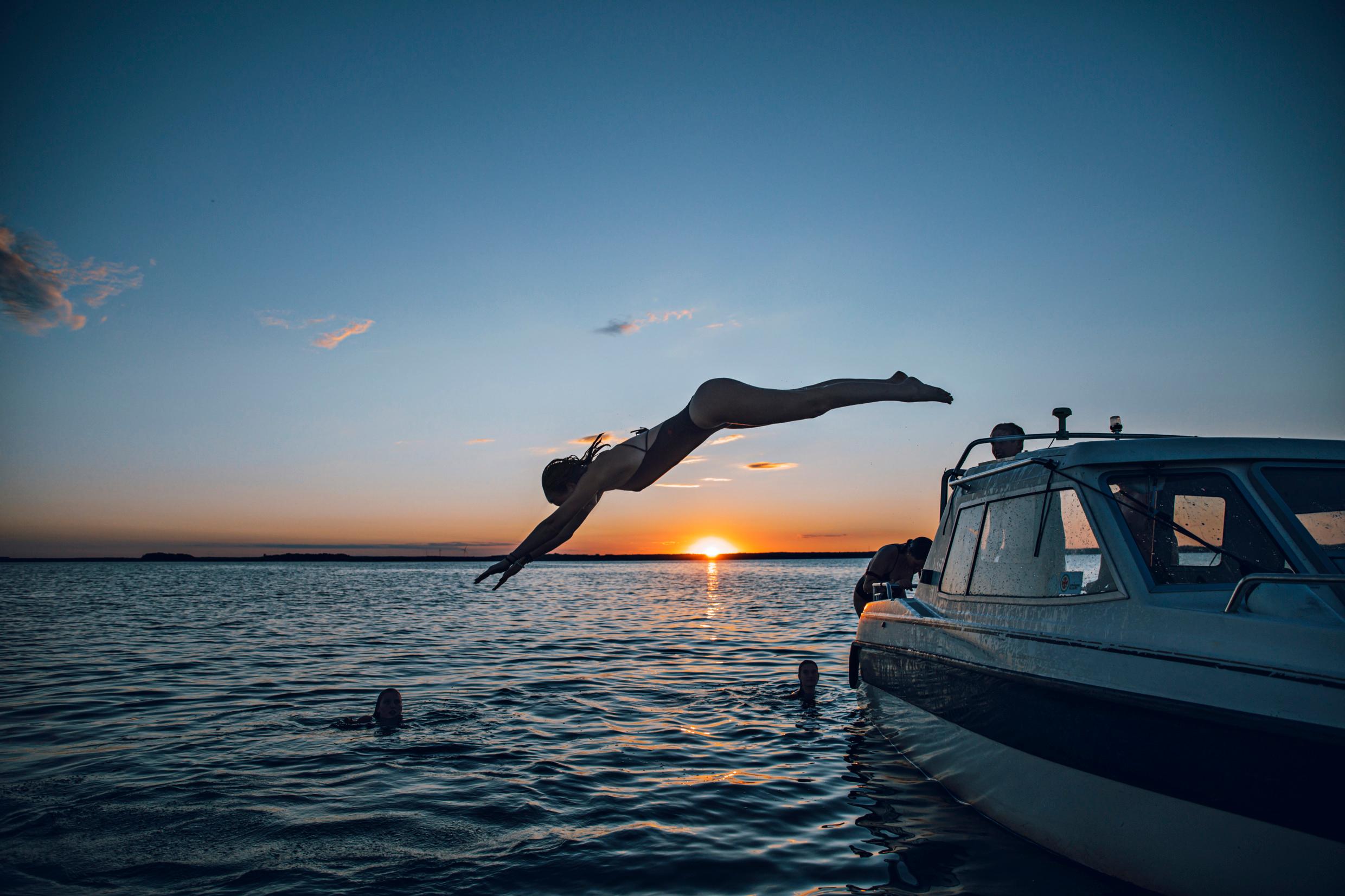
With thousands of lakes and a very long coastline, Sweden has a swim spot for everyone. Photo: Lieselotte van der Meijs/imagebank.sweden.se
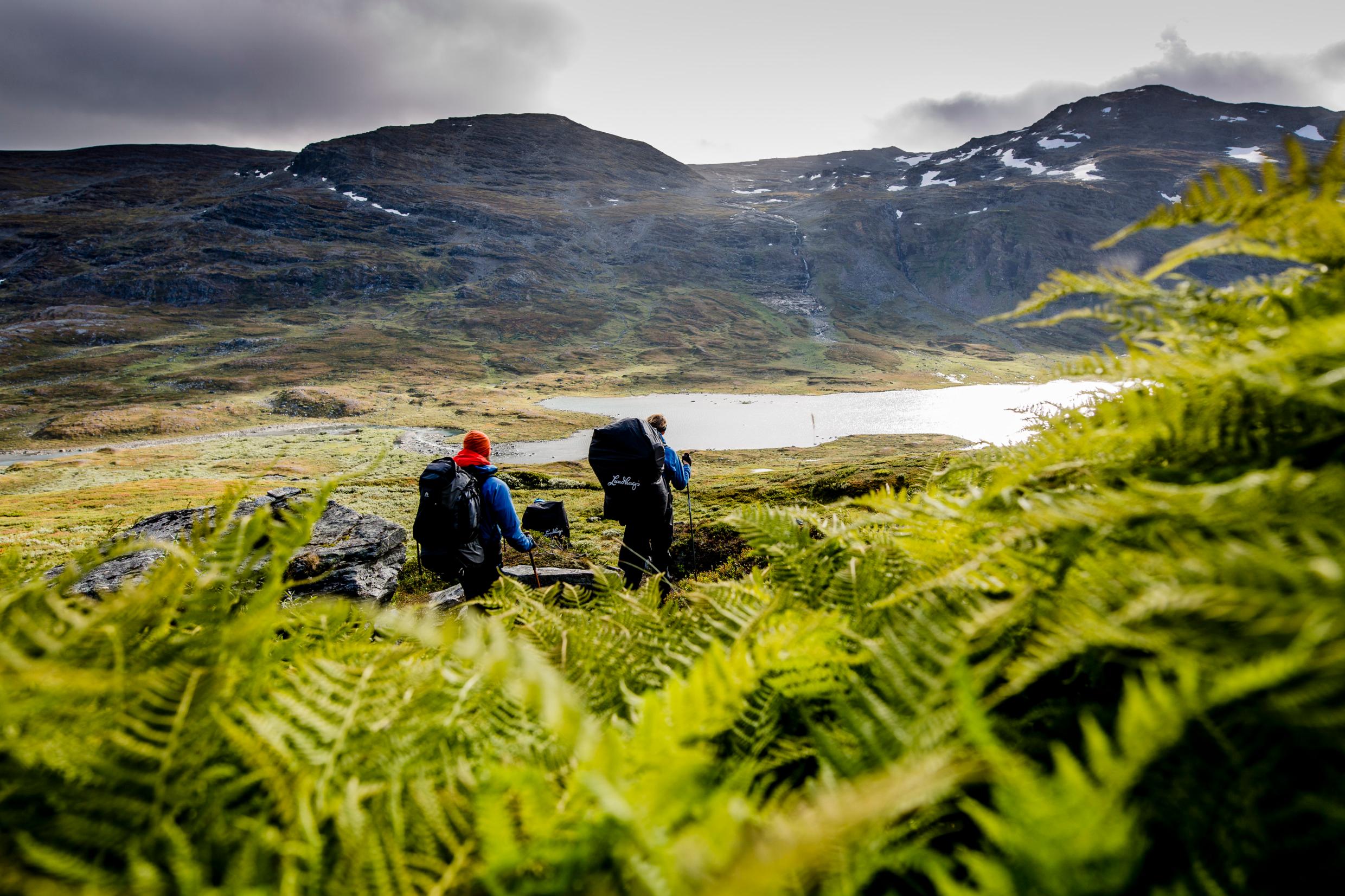
Hiking in Lapland. Photo: Carl-Johan Utsi/imagebank.sweden.se
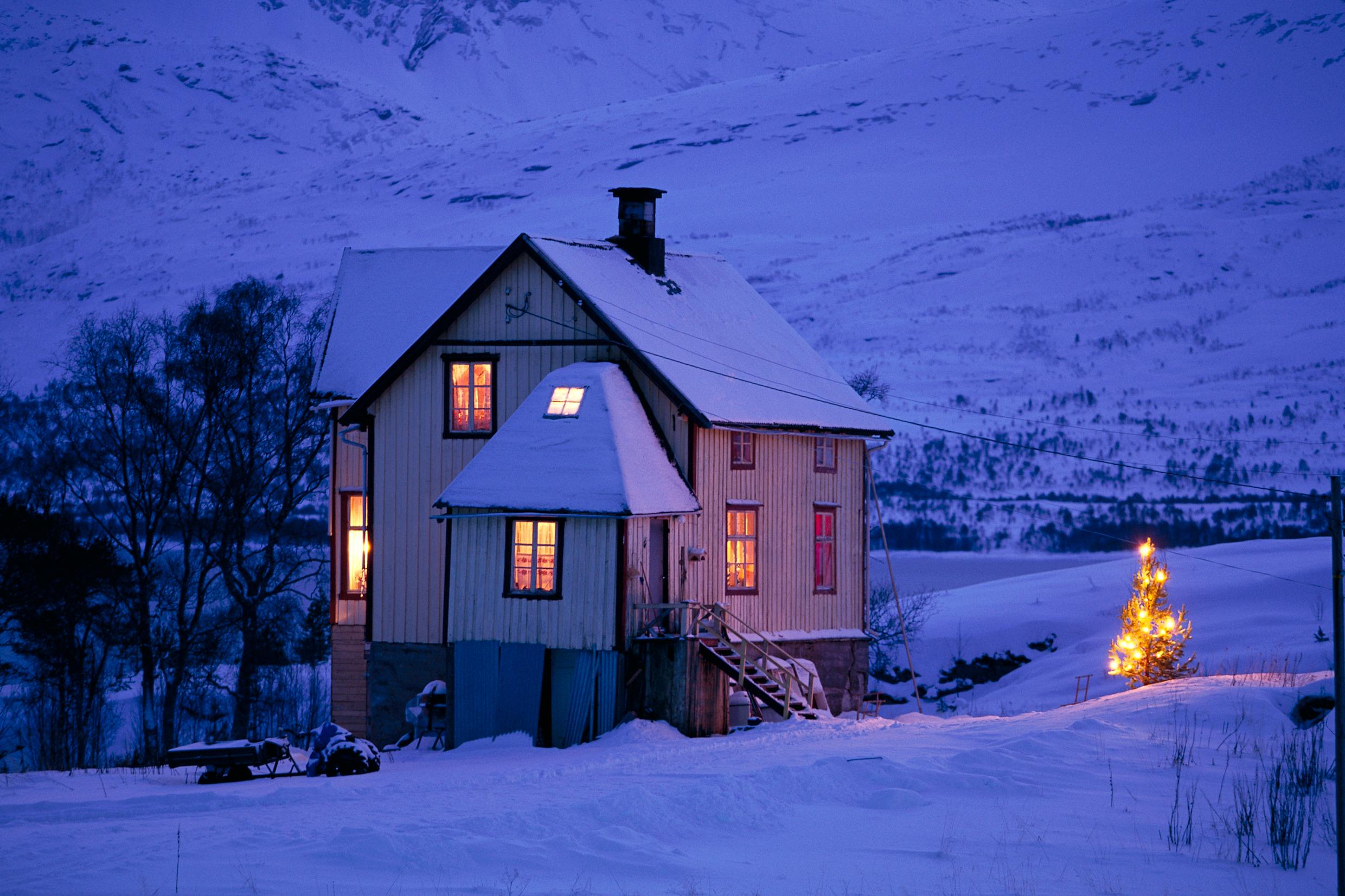
One way to embrace the winter darkness is to cosy up indoors. Photo: Hans Strand/Folio/imagebank.sweden.se
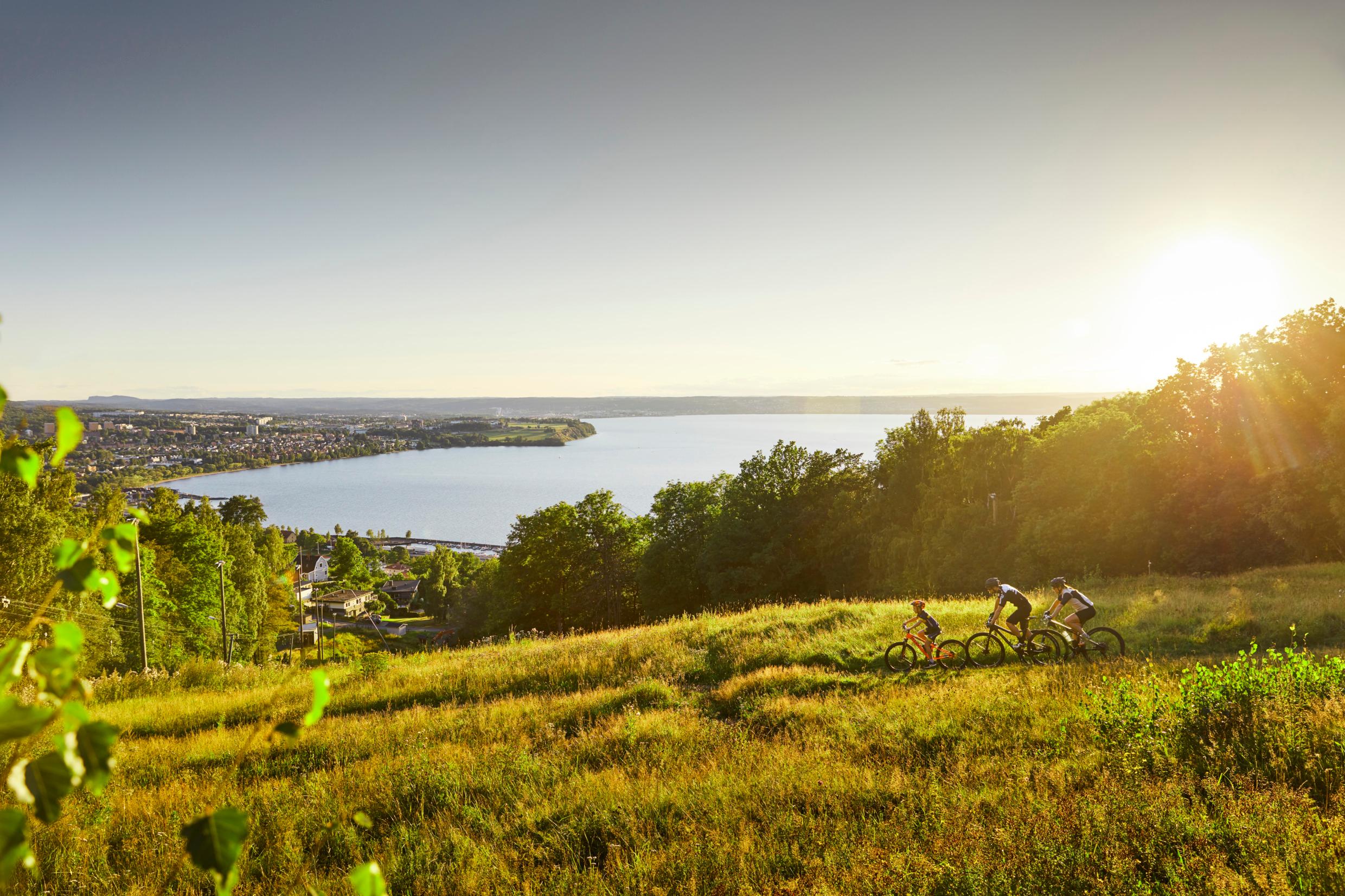
More and more people go cycling in Swedish nature. Photo: Patrik Svedberg/imagebank.sweden.se
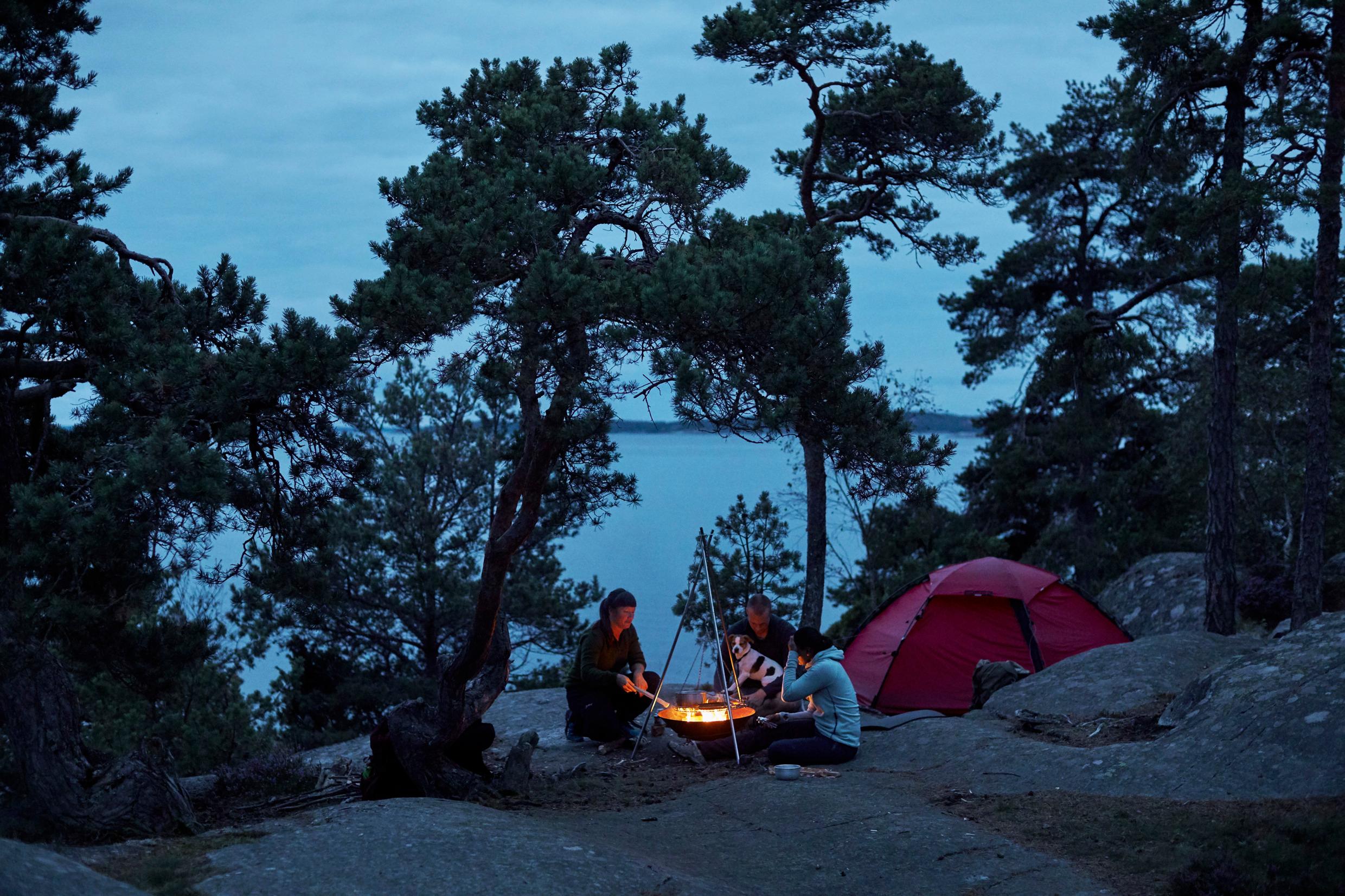
It's okay to go wild camping almost anywhere, because of the Swedish 'Right of Public Access'. Photo: Lindsten & Nilsson/imagebank.sweden.se
Although the Swedish winters seem cold and dark, the long summer days are well worth the wait. In most of the country, people stay outdoors well into the night, chatting in parks and outdoor cafés as the sun barely dips below the horizon.
As far south as Malmö, summer daylight outlasts the average person’s waking hours. And in the far north, the sun never sets for weeks at a time.
Sweden is located in the Central European Time (CET) zone. Like in other European countries, summer time is also observed here. This means that the clock is set forward one hour, from the last weekend in March to the last weekend in October, in order to gain more daylight.
Related articles
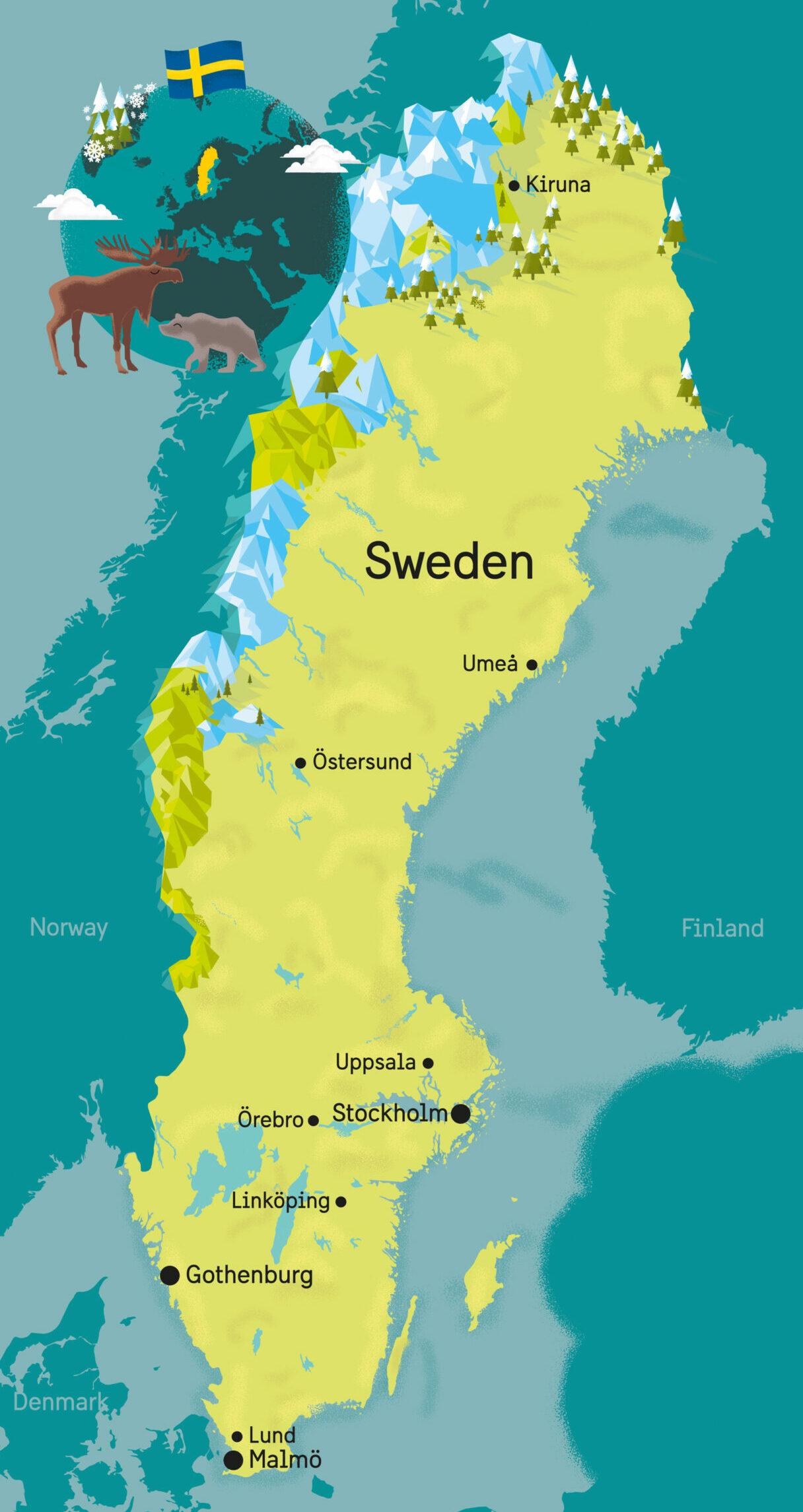
Winter, as you might expect, is dark and cold across most of the country. In midwinter there’s no daylight at all north of the Arctic Circle. Instead you might be lucky enough to experience the sky lit up by northern lights.
Though there will be more daylight hours the further south you go, this is the time of year when people either stay indoors or gear up for winter sports. Family and friends come over for dinner, living rooms are lit by candlelight and most people look forward to holidays like Lucia, Christmas and winter breaks with their children.
'Allemansrätten'
Sweden is filled with forests and open landscapes and one of the unique joys of living in Sweden is allemansrätten , or the right of public access . It allows anyone to roam freely in the countryside, swim and travel by boat in someone else’s waters and pick mushrooms and berries in the forest.
Although landowners can put up signs to exclude visitors from certain private lands, and areas that are particularly vulnerable to damage are always off-limits, the general rule is that visitors are allowed to walk across lands at a reasonable distance from houses, yards, gardens and fenced-in areas. With this right comes the responsibility to tread carefully and to show consideration for landowners and others.
As long as the land is not cultivated, and as long as no damage is caused, this means that most of Sweden’s nature is yours to explore. Except for the area nearest a person’s house, you’re even free to camp or park a motor home on another person’s land for up to 24 hours. After this, you’ll need the landowner’s permission to stay.
Because it has existed for generations, allemansrätten is a part of the national identity of Sweden. School groups explore the forests from an early age and families often fish, pick berries or go for walks in the woods together. Many people can identify a surprising number of birds, fish and trees by name. And nearly everyone knows where to find their secret patch of chanterelles, sometimes known in Swedish as ‘the gold of the forest’.
Last updated on 26 April 2024
Share with your friends
Other articles you might like
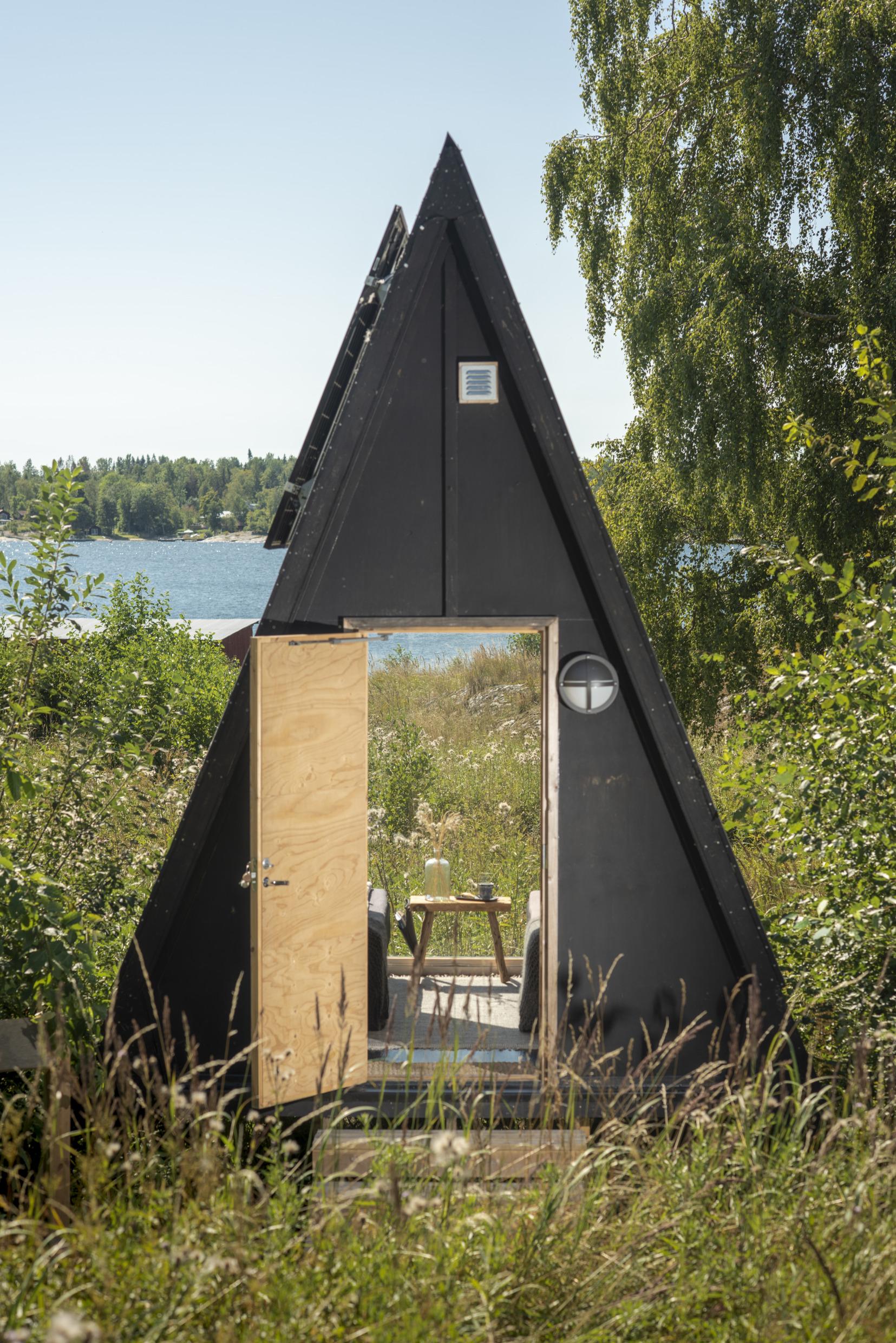
Change location
- Call us today until 8pm 01993 838 925 01993 838 762 or
- REQUEST A QUOTE
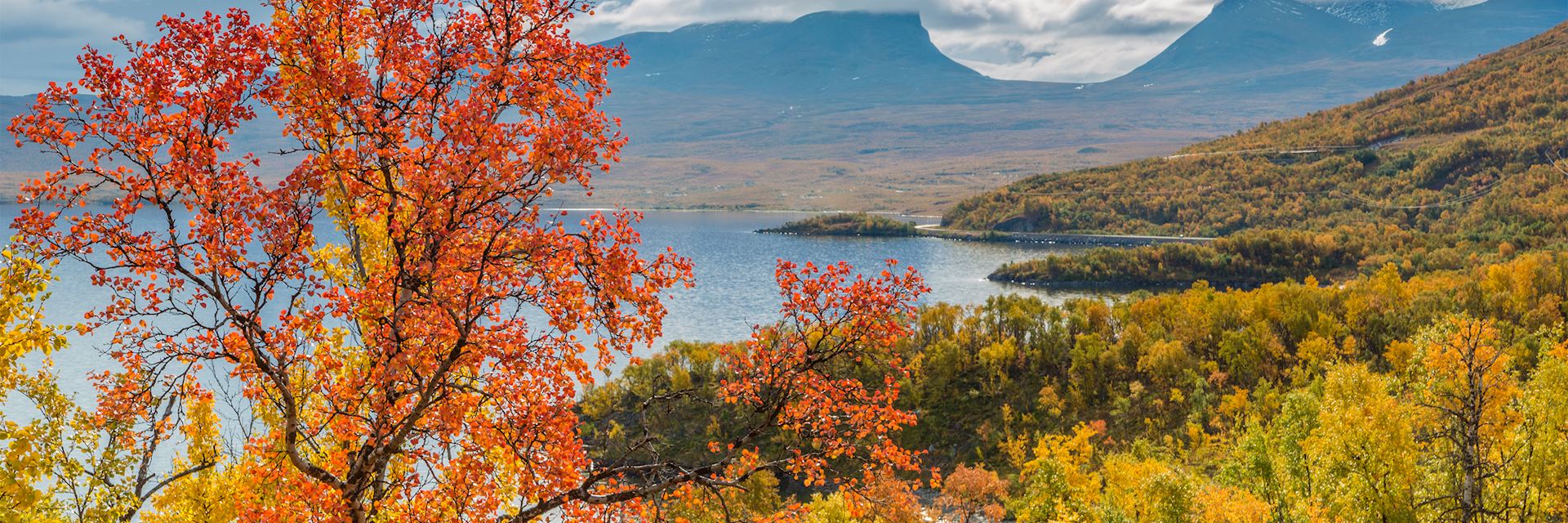
Visit Swedish Lapland, Sweden
- Accommodation
- Things to do
Northern lights, the midnight sun, Sámi culture, exquisite local cuisine and winter sports, all in Europe’s last wilderness, Swedish Lapland.
Vast, empty and Arctic, Lapland has a near-mythical quality. This enormous swathe of northern Sweden seems to embody the very spirit of winter — home to huge herds of reindeer and seemingly endless frosted pine forests, as well as the dancing northern lights and a snow-dazzled landscape where the Snow Queen might raise up a mighty ice palace.
But, don’t discount a visit during the summer, which has its own draw. You can roam among the pine-clad mountains and raging rivers by the light of the midnight sun, go foraging with the Sámi population and hike through nature reserves that boast some of the richest wildlife left in Europe.
For all its remoteness, the region is easy to reach thanks to a network of local airports, and we can help you explore this last, still-wild corner of the continent. Unsurprisingly, the population of this fragile, pristine area is deeply committed to ecologically sustainable practices. The region’s also home to some of Sweden’s most interesting and innovative ecolodges.
Things to see and do in Swedish Lapland
Discover the ancient sámi culture.
The Sámi have lived in Lapland since prehistoric times and their way of life is remarkably unaffected by the passage of millennia. Many still make a living herding reindeer. Their culture and language are deeply entwined with the land they call Sápmi, a region that stretches over Norway, Sweden, Finland and the Kola Peninsula in Russia. There are more than 300 words for snow in the Northern Sámi language, for example, and eight seasons in the year.
We can arrange for you to learn more about this resilient people by meeting guides and exploring the wilderness with them. You’ll hike through mountains and learn their Sámi names, meet the reindeer herds, go fishing in lakes and forage for wild cloudberries, as well as cook a traditional meal.
A wild, untamed Arctic landscape
Visiting Lapland is like catching a glimpse of primordial Northern Europe. Wide-antlered elk and reindeer roam through slender birches, grazing placidly on cloudberries and deep-green moss. Brown bears lumber alongside mirror-like lakes and russet foxes dart through stands of wildflowers. Sweden’s largest and oldest national parks are located here and offer some of the most pristine hiking on the continent.
If you’d like to explore this rich wilderness, we can arrange a wide variety of activities that will help you learn more about Lapland. Take guided hikes, go fly-fishing in rushing rivers, mountain bike down snow-gentled slopes or kayak across placid lakes.
The northern lights and the midnight sun
Thanks to its northerly latitudes, Lapland is one of the best places to enjoy the northern lights. Abisko National Park’s Aurora Sky Station offers a comfortable base for glimpsing the elusive cosmic light show. It’s located 250 km (155 miles) north of the Arctic Circle and has virtually no light pollution. There’s a warm café where you can wait for the phenomenon to occur, and a chairlift and watch tower for the best views. To truly indulge in the Arctic atmosphere, we can also arrange for a dinner on the ice under the strobing sky.
It’s also an excellent base for visiting in June. You can hike under a sky that’s glowing gold and red, lit by a sun that hovers on the horizon all night but never dips.
A winter sports playground
In this land of ice and snow, the options for winter sports are seemingly endless. For the souls who love winter sports, we can arrange for a wide array of outdoor activities that take advantage of the deep freeze. You might try your hand at dog-sledding , skimming through the countryside pulled by a team of trained huskies, or embrace modern convenience with a chance to explore by snowmobile. Ice fishing has long been an important source of food for the Sámi and you can have a go yourself at this meditative sport.
The deep freeze also means you can visit the ICEHOTEL Winter, a structure made entirely from ice and snow. Rebuilt every winter for the past three decades, it’s an ever-changing exhibition of art and hospitality in the far frozen north.
Local, traditional culinary culture
Sweden’s Lapland is known for its abundance of local foods, many wild-caught or foraged. The culinary culture is greatly influenced by Sámi foodways, with a focus on reindeer, moose, fish and roe, wild mushrooms and berries, and cheese. Despite its sparse population, the area boasts a number of exceptional restaurants that serve Lapland cuisine, especially in cities like Luleå, Kiruna and Umeå, and boutique hotels like Treehotel.
If you’d like to get really hands-on with your food, consider a foraging walk with a Sámi guide. You’ll gather ingredients as you walk, learning more about the traditional ways that the Sámi still eat, before helping to prepare a meal to share.
Best time to visit Swedish Lapland
With four wildly different seasons, Lapland is a year-round destination, depending on what you’d like to do. The northern lights are at their peak November to March. Snow falls as early as August, but the best time to experience winter sports is between December and March.
Hiking enthusiasts can count the long days and twilight nights of the midnight sun, which begin in late May and end in mid-July. The mountain hiking season typically lasts from June through to September, although this is slightly longer in Abisko National Park.
August, September and early October are often overlooked by visitors, but the changing foliage makes it a lovely time to visit.
Festivals, events and seasonal reasons to visit
- Last weekend in January: A family-friendly festival that celebrates the end of the long, dark winter, the Kiruna Snow Festival includes the snow blower world championships, dog-sledding and live music.
- First Thursday in February: Held since 1604, the Jokkmokk Sámi Market is the biggest meeting of the Sámi, who come to trade.
- June: The summer solstice is celebrated all across the region.
- August: The Cloudberry Festival celebrates the berry’s harvest from woodlands around Vuollerim.
- August: The Storstämningshelgen sees Sámi people gather in Arvidsjaur for reindeer cooking and reindeer lassoing events.
- September: The Römppäviikko Festival in Pajala includes saunas, dancing and markets.

Start planning your tailor-made trip to Swedish Lapland by contacting one of our Sweden specialists
- 01993 838 925 01993 838 762
- Make an enquiry
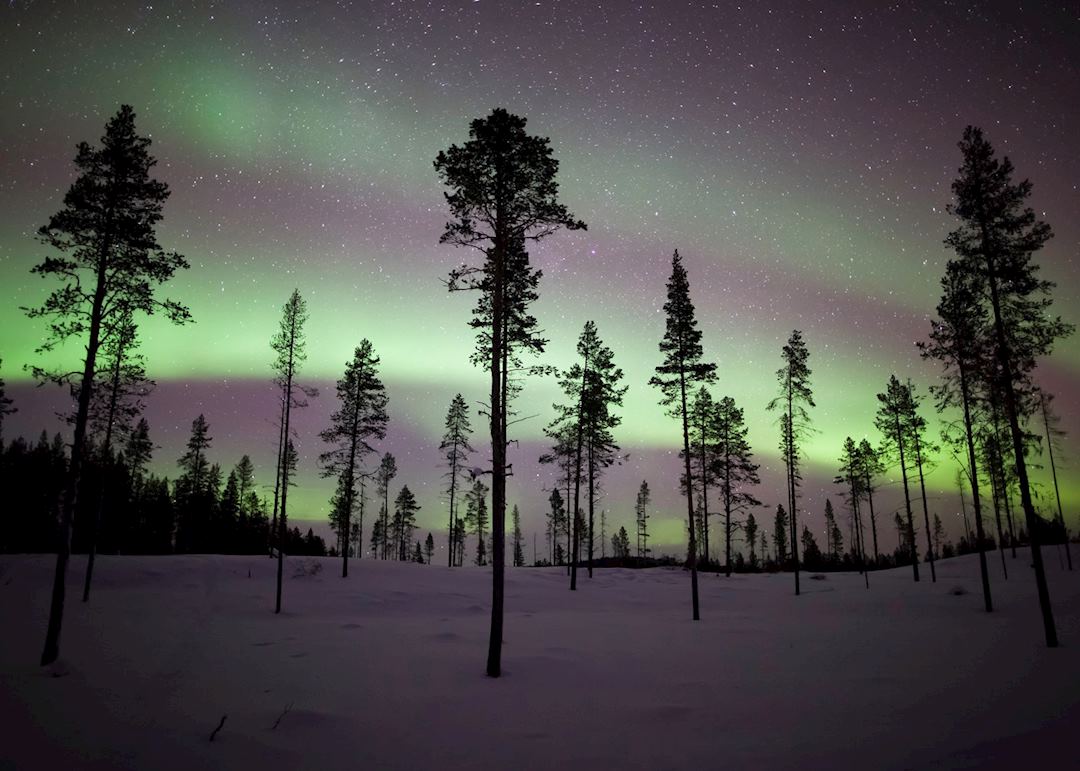
Start planning your trip to Swedish Lapland
Map of swedish lapland, places & hotels on the map, accommodation choices for swedish lapland.
We’ve selected a range of accommodation options for when you visit Swedish Lapland. Our choices usually come recommended for their character, facilities and service or location. Our specialists always aim to suggest properties that match your preferences.
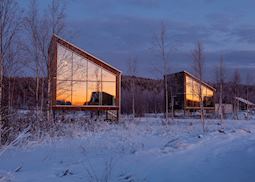
Arctic Bath
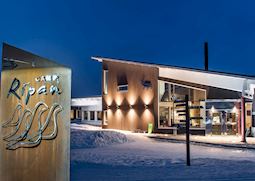
Ideas for experiencing Swedish Lapland
Our specialists seek out authentic ways to get to know the places that could feature in your trip. These activities reflect some of the experiences they've most enjoyed while visiting Swedish Lapland, and which use the best local guides.

Husky safari
Experience the thrill of dog-sledding in Swedish Lapland. You’ll find out how this pastime is so important to Sámi culture, meet the team of huskies and have a chance to take the reins yourself as you ride through snow-covered forest.
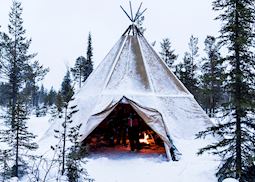
Sami culture and reindeer experience
This guided tour gives you a chance to visit a remote Sámi village in Swedish Lapland for an insight into the local indigenous culture. You’ll meet and learn skills from reindeer herders and have the chance to dine on local foods inside a traditional tent.

Ice dining under the northern lights
You can explore a different side of the Lapland wilderness with a private meal on a frozen lake. Sit on reindeer hides under a traditional Sámi tent and enjoy a three-course meal as you watch the dark skies for the aurora borealis.

Kayaking on the Lule River
Soak up the natural beauty of Swedish Lapland from the water on this six-hour kayaking tour. Suitable for both beginners and experienced kayakers, the tour includes lunch cooked over an open fire on the riverbank.

IMAGES
COMMENTS
Swedish Lapland - a culture-rich natural wonderland. A visit to Swedish Lapland will open up a unique world, combining vast expanses of nature, authentic Sámi culture and culinary specialities. Depending on which season you come, you'll have completely different experiences - but all of them will be memorable. Last updated 14 July 2023.
Swedish Lapland is a remote destination. It's a vast destination. You can fly here within a couple of hours or take the overnight train from Stockholm. You could spend hours, days even, hopping from bus to bus to reach those spots where no planes or trains go. Or get in a car and travel at your own pace.
Swedish Lapland, the heartland of the indigenous Sámi people, is Europe's last wilderness, characterized by seemingly endless forests of pine and spruce, thundering rivers that drain the snow-covered fells and peaceful lakeside villages high amongst the hills. The irresistible allure of this vast and sparsely populated region is the opportunity to experience raw nature at first hand.
Road trip: The Sámi route. The northernmost part of Sweden is home to northern Europe's indigenous people: the Sami. This means that Sweden's Arctic destination - Swedish Lapland - is part of Sápmi. This magnificent landscape holds an equally magnificent story....
To plan your own trip to Swedish Lapland, start with this weeklong itinerary, filled with wild, unique accommodations, endless eats and incredible excursions. Getting to Swedish Lapland. Swedish Lapland is the northernmost province in Sweden, and about half of the territory is above the 66-degree north boundary of the Arctic Circle. It's up ...
#14 SWEDISH LAPLAND IS ACTUALLY REALLY EASY TO GET TO . It's hard to imagine that a world like Swedish Lapland actually exists just a mere few hours from the bustle and chaos of London's doorstep. But it does, and we were pleasantly surprised to discover that it's certainly not an arduous travel journey.
In northern Sweden, at the northern tip of the Gulf of Bothnia, a bit further south is the city of Luleå. Luleå is another must-visit town in Swedish Lapland. With rich theater, music, arts, and culture, this town has a lot to offer to art-hungry tourists. Moreover, Gammelstad, a UNESCO World Heritage Site, is one of the most well-known ...
Amazing train ride Inlandsbanan. If you want a little more leisurely way to experience nature in Swedish Lapland, then hop on the famous local train Inlandsbanan, and get a breathtaking tour through the beautiful, amazing natural wildlife.Get off in one of the historic local villages, get a glimpse of the local civilisation, food and culture, and end your tour at the Arctic Circle for some photos.
Read more on Europe travel: Best European holiday destinations to visit by train from London; ... Some 95 per cent of Sweden's national park area is found in Swedish Lapland. The Abisko park is ...
A reason to travel to Swedish Lapland this winter: Icehotel 33. Dec 16, 2022 • 5 min read. Icehotel 33, this year's edition of the hotel, promises winter adventures, northern lights and cocktails that are ice cold - literally.
Soak up the natural beauty of Swedish Lapland from the water on this six-hour kayaking tour. Suitable for both beginners and experienced kayakers, the tour includes lunch cooked over an open fire on the riverbank. View details. Experience the thrill of dog-sledding in Swedish Lapland.
The main airports in Swedish Lapland are Luleå and Kiruna Airport. SAS, Norwegian and Ryan Air offer flights to Luleå and Kiruna, directly from Stockholm. The flight to Luleå takes about 1h 20 minutes and to Kiruna 1h and 40 minutes. SAS normally has daily flights to Luleå and Kiruna throughout the year.
Luleå Lapland itinerary day 2: Gammelstad. Gammelstad church town is a popular day trip from Luleå and is one of the most picturesque towns in northern Sweden. Church towns have a long and interesting history. As Lapland was so sparsely populated there were only a few churches. people had to travel from far away to go to church on Sunday.
Swedish Lapland travel guide. Our Swedish Lapland travel guide entices you deep into a vast Arctic expanse illuminated in winter by one of the world's most incredible natural phenomena: the Northern Lights. It's a magical, pristine landscape where you can steer sledges pulled by willing huskies, snow shoe through forests, and sleep in a ...
3. Food under an open sky. "Bread on a stick" - another classic campfire snack in Swedish Lapland. In Swedish Lapland eating out can mean two things; enjoying incredible food in many of the world class restaurants, or eating out by cooking over the fire, under an open sky.
Our Swedish Lapland travel guide entices you deep into a vast Arctic expanse illuminated in winter by one of the world's most incredible natural phenomena: the Northern Lights. It's a magical, pristine landscape where you can steer sledges pulled by willing huskies, snow shoe through forests, and sleep in a hotel carved from ice.
Four of Swedish Lapland's parks lie about 120km northwest of Gällivare in the tract of Swedish wilderness edging Norway: the low fells, large lakes and moors of Padjelanta, Stora Sjöfalletand Abiskoparks act as the eyebrows to the sheer face of the mountainous Sarek park. Easy Muddus national park lies between Gällivare and Jokkmookk, while ...
The cheapest way to get to Swedish Lapland from Stockholm is usually by train to Lulea or Kiruna ( you can see the train times and buy tickets here ). A bunk on the overnight train from Stockholm Central Station to Kiruna, for example, costs from 845 SEK. You can also fly to Lapland from Stockholm, but the prices are normally much higher.
The Swedish Lapland's extreme isolation is one of its greatest appeals. While the Lapland region itself stretches across Norway, Finland, and Russia, in addition to Sweden, Lappland (double p) is the Swedish province in the nation's extreme north. The Swedish Lapland Visitors Board makes this distant region accessible, however.
Matti had moved north from central Sweden to study ecology, but his passion for the outdoors kept him in Swedish Lapland. He started training his first Siberian husky in 1994, a year before ...
Kiruna is easy to reach by flight for around 200 USD (1.5 hours). There is a direct night train from Stockholm to Kiruna (14 hours) as well that goes on to Abisko and even Narvik in Norway. If you fly into Kiruna there are day trains and buses to Abisko (1.5 hours). Abisko National Park in Swedish Lapland.
Luleå Travel organises both winter and summer activities in Luleå - Swedish Lapland; dog sledding tours Luleå, snowmobile tours Luleå, hovercraft tours, kayaking, forest hikes, guided tours Luleå - Gammelstad, cross-country skiing Luleå, fatbiking, ice fishing, icebreaker tours , snowshoe walking, horse riding, Northern lights tours ...
December to February see the most snowfall in Swedish Lapland, making it an ideal time to visit for skiing, snowshoeing, sledding or snowmobiling. Be sure to pack your warmest winter gear, as temperatures in this region can reach up to -16°C. On occasion, the wind chill can even drop the temperature to as low as -30°C.
Given its Arctic location, Sweden is one of the prime spots for aurora viewing in the Northern Hemisphere, with Swedish Lapland at the top of the list. The fall and winter months (from September ...
Cross the Öresund bridge into Sweden and drive along the swedish coast of the bothnian sea. This would be around 3100km. I'm guessing around 350€ of petrol plus 60€ for the bridge. Drive up to Tallinn, take the ferry into Helsinki, take the car train from Helsinki to Oulu and drive 250km to my destination.
The weather in Sweden is characterised by changing seasons and long north-south distances. Beware, Swedes LOVE to talk about the weather! ... Hiking in Lapland. Photo: Carl-Johan Utsi/imagebank.sweden.se. ... swim and travel by boat in someone else's waters and pick mushrooms and berries in the forest.
Soak up the natural beauty of Swedish Lapland from the water on this six-hour kayaking tour. Suitable for both beginners and experienced kayakers, the tour includes lunch cooked over an open fire on the riverbank. Experience the thrill of dog-sledding in Swedish Lapland.
As of now, we're opening up bookings for our activities in Swedish Lapland for next winter seas...". Luleå Travel 📍Swedish Lapland | It's time to winterize your calendar! As of now, we're opening up bookings for our activities in Swedish Lapland for next winter seas... | Instagram